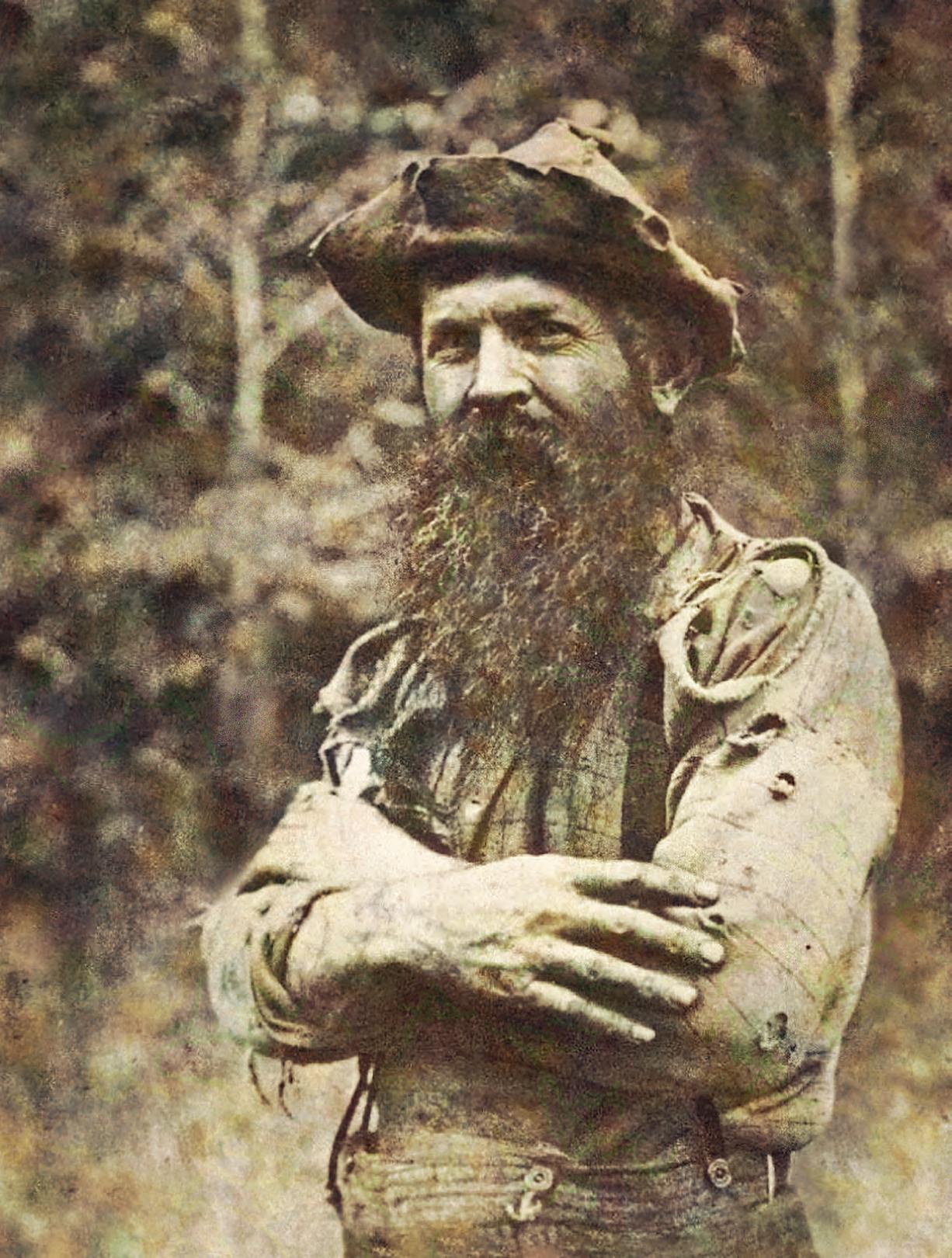

BEN LILLY H ALAMO FRAUDS H ‘BEAR RIVER TOM’ SMITH H MACKENZIE’S RAID INTO MEXICO H MURDER AT THE NEW YORK BAR HISTORYNET.COM WILD WEST SPRING 2023 VOL. 35, NO. 4 SPRING 2023 HISTORYNET.COM WIWP-230400-COVER-DIGITAL.indd 1 1/26/23 8:27 AM
Maybe you knew that the Morgan Silver Dollar is the most widely collected and traded Silver Dollar ever minted by the United States—in part because of its iconic design, and in part because it was the hard currency found in the saddlebags of cowboys and ranchers, and of course outlaws. It was the coin that helped build the Old West.
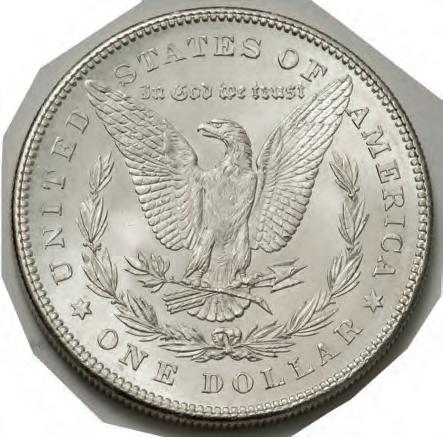
Morgan Silver Dollars—All-American Coins
It’s also popular because it’s a 90% Silver Dollar with an American design that was first minted in 1878, from American silver that came from the Comstock Lode in Nevada. It was last minted in 1921 for circulation—which is why 2021 marked the coin’s 100th anniversary.
It’s a Wonder Any Morgans Still Exist Today




Coin experts estimate that fewer than 15% of all the Morgan Silver Dollars ever minted still exist today. At one point, the Pittman Act authorized the melting of 259,121,554 Silver Dollars to send to Great Britain to help that country during World War I—nearly half of the entire mintage of Morgans up to that time!
A First Year Morgan Silver Dollar—Guaranteed!
You’re guaranteed to receive a first-year Morgan Silver Dollar from 1878. The coins here come from a recently discovered hoard of around 500 1878 Morgans, just now available to the public. Depending on what you want to spend, you have your choice of three quality grades— Fine to Very Fine, About Uncirculated and Brilliant Uncirculated (see coin condition grid to the right). But—immediately call the toll-free number below because these first-year, 1878 Morgan Silver Dollars won’t last.
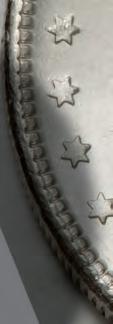


1878 Morgan Silver Dollars
Fine-Very Fine $79.95 +s/h

About Uncirculated $129 +s/h
Brilliant Uncirculated $229 + FREE SHIPPING
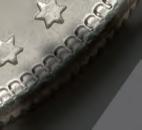



















FREE SHIPPING: Limited time only. Product total over $149 before taxes (if any). Standard domestic shipping only. Not valid on previous purchases.

GovMint.com® is a retail distributor of coin and currency issues and is not affiliated with the U.S. government. The collectible coin market is unregulated, highly speculative and involves risk. GovMint.com reserves the right to decline to consummate any sale, within its discretion, including due to pricing errors. Prices, facts, figures and populations deemed accurate as of the date of publication but may change significantly over time. All purchases are expressly conditioned upon your acceptance of GovMint.com’s Terms and Conditions (www.govmint.com/terms-conditions or call 1-800-721-0320); to decline, return your purchase pursuant to GovMint.com’s Return Policy. © 2022 GovMint.com. All rights reserved. SPECIAL CALL-IN ONLY OFFER Get an 1878, First-Year Morgan Silver Dollar! e Silver Dollar that Helped Build the Old West! GovMint.com • 1300 Corporate Center Curve, Dept. FMD155-01, Eagan, MN 55121 1-800-517-6468 Offer Code FMD155-01 Please mention this code when you call. A+ First-Year 1878 COIN CONDITIONS Fine-Very Fine: Clear elements showing some to good detail, with moderate, even wear. Sold elsewhere for $134 About Uncirculated: Sharp elements and backgrounds with a trace of wear and some mint luster. Sold elsewhere for $176 Brilliant Uncirculated: Has never been circulated and still retains its original mint luster. Sold elsewhere for $323 Morgan Silver Dollar! From a Just Discovered Collector’s Hoard! Your Choice of Three Quality Grades! is 38.1 mm GUARANTEED! 1878 FIRST YEAR OF ISSUE WIWP-230221-005 GovMint 1st Year Issue 1878 Morgan Silver Dollar.indd 1 1/5/2023 2:45:55 PM



WIWP-230221-011 Stephen Ambrose Tours.indd 1 1/5/2023 3:21:17 PM
LILLY OF THE FIELD
By

THE FORGETTABLE ALAMO FRAUDS

ABILENE’S ABLE BUT SHORT-LIVED LAWMAN
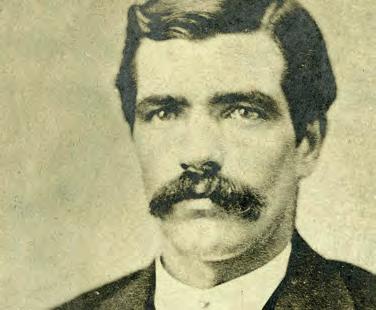 By Roger Myers
By Roger Myers
 Aaron Robert Woodard
Tireless hunter Ben Lilly guided famous clients and stalked predators for bounties
By Ron J. Jackson Jr.
‘Uncle Jimmy’ Cannon and Louis Schilling slighted the remembrance of martyrs
Aaron Robert Woodard
Tireless hunter Ben Lilly guided famous clients and stalked predators for bounties
By Ron J. Jackson Jr.
‘Uncle Jimmy’ Cannon and Louis Schilling slighted the remembrance of martyrs
38 46 32 WIWP-230400-CONTENTS.indd 2 1/26/23 8:28 AM
‘Bear River Tom’ Smith policed the Kansas cow town before Wild Bill Hickok
MACKENZIE’S RAID INTO MEXICO
By Allen Lee Hamilton
In 1873 Colonel Ranald Mackenzie risked war to stop cross-border Indian attacks
A SENSELESS MURDER AT NEW YORK BAR
By Kevin Carson
Who killed the shipping station agent on Washington Territory’s Snake River?
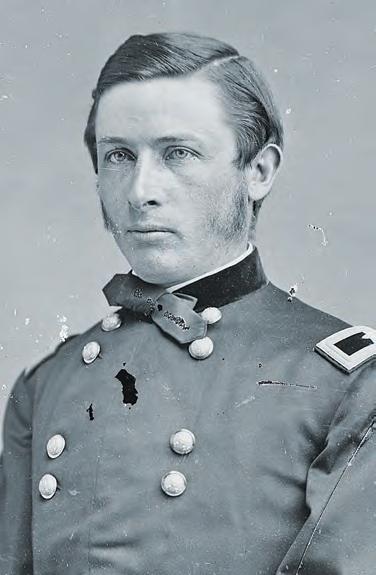
SPRING 2023
4 EDITOR’S LETTER
8 LETTERS
10 ROUNDUP
16 INTERVIEW
BY CANDY MOULTON
Mark Miller’s biography of Wyoming outlaw George Parott digs up all the dirt
18 WESTERNERS
Italian-born dancer Giuseppina Morlacchi once co-starred with Buffalo Bill Cody
20 GUNFIGHTERS &
LAWMEN
BY TERRY HALDEN
In 1920 a trio of bunglers robbed a train in Alberta, prompting a series of killings
22 PIONEERS & SETTLERS
BY CHUCK LYONS
Texan Sarah Hubbard witnessed loved ones’ deaths and survived Indian captivity
24 WESTERN
ENTERPRISE
BY DAVID MCCORMICK
In 1902 Harry Buckwalter teamed up with William Selig to film early Westerns
26
ART OF THE WEST
BY JOHNNY D. BOGGS
Painter Gary Lynn Roberts takes inspiration from his parents and Charlie Russell
30 INDIAN LIFE
BY DAVID MCCORMICK
That Cheyennes love horses is no secret, but how did horses transform the tribe?
68 COLLECTIONS
BY LINDA WOMMACK
Ride and learn about trains at southwest Colorado’s Ridgway Railroad Museum
70 GUNS OF THE WEST
BY GEORGE LAYMAN
James H. Bullard made fine single-shot and repeating rifles—but not fast enough

72 GHOST TOWNS
BY TERRY HALDEN
Keystone, Mont., went by several names on its journey through boom and bust
74 REVIEWS
Author Linda Wommack suggests top books and films about her native Colorado. Plus reviews of books about Billy the Kid, Wild Bill, Buffalo Bill and others

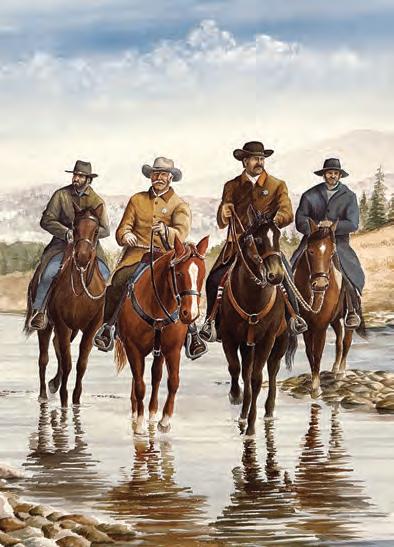
80 GO WEST
Once a hunting ground, Yellowstone’s Lamar Valley is where the buffalo roam
ON THE COVER
Big-game hunter Ben Lilly was as hard as nails. Drawn to wilderness rambles as a young man, he made his living collecting federal bounties on bears, mountain lions and other apex predators and guiding hunts for such notables as President Theodore Roosevelt. “He seemed to relish reducing himself almost to the level of the animals he pursued,” Aaron Robert Woodard remarks of Lilly in the cover story. Indeed, Lilly proved as tireless as the pack of hounds he raised and trained. Not until late in life did his exertions begin to tell, claiming his life days shy of his 80th birthday.
(Silver City Museum, N.M.; photo illustration by Brian Walker)
54
62 WIWP-230400-CONTENTS.indd 3 2/1/23 4:51 PM
A New Sheriff in Town
This year marks 35 years Wild West has been “Chronicling the American Frontier,” as it once read on the cover. It was back in June 1988 that editor Bill Vogt steered the premiere issue into print, and from Vogt’s untimely death in 1995 to 2022 editor Greg Lalire rode herd over the magazine. Over that span the pair of them published the works of a stellar lineup of Western writers as dedicated to sharing history as we are.
I am humbled to succeed Vogt and Lalire as editor of Wild West
Over that same 35 years I’ve pursued a career in publishing that has led me and my wife from Doc Holliday’s home state of Georgia to California and back East with detours in between. A modern-day explorer, I’ve crisscrossed the West on big roads, little ones and countless trails, albeit not poling upriver or straddling the back of an ornery mule. Prior to joining the HistoryNet magazine group, I wrote and edited travel guides for the likes of National Geographic, Lonely Planet and Rough Guides.
When a newfound friend asks what I do for a living, I answer, “I get paid to learn.” Boy howdy, how true that is! As managing editor of Wild West from 2008 to 2022 I edited and factchecked everything we sent to the printer. In the 100 issues we published over that time, that tallies around 3 million words read, weighed and, yes, unwillingly cut to fit writers’ wonderful stories of the Old West between the covers of the magazine.
I now work from a home office in our westward-facing cabin in Harpers Ferry, W.Va., midway up a mountain between the Appalachian Trail and Shenandoah River and overlooking 40 miles of valley. Thus my gaze is inexorably drawn to the West. Minutes downriver from our cabin is Jefferson Rock. It was there on Oct. 25, 1783, Thomas Jefferson stood and contemplated the confluence of the Potomac and Shenandoah rivers, gateway to the “undiscovered country” that lay beyond. “For the mountains being cloven asunder,” he wrote, “she presents to your eye, through the cleft, a small catch of smooth blue horizon, at an infinite distance in that plain country, inviting you, as it were, from the riot and tumult roaring around you to pass through the breach and participate in the calm below.”
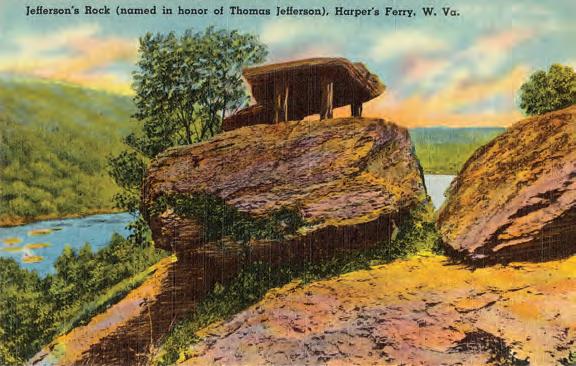
Ten years later President Jefferson commissioned Meriwether Lewis and William Clark to explore and map the newly acquired territory of Louisiana, up the Missouri to the Rockies and down the Columbia to the Pacific Ocean. Corps of Discovery leader Lewis first stopped by the federal armory in Harpers Ferry for firearms, knives and other equipment, including a collapsible iron-framed boat. My backyard is steeped in history.
Storytelling—the sharing of anecdotes common to human experience—is a cultural tradition that spans time and place. Only the means of sharing it has changed—dramatically so in
recent decades. Wild West has kept up with the changing times, and in coming months we’ll further update and make changes to our print and online editions. What won’t change is our commitment to relate entertaining, authoritative stories of the people, places and events of the American West.
Our small, hardworking outfit includes senior editor Jon Guttman, art director Austin Stahl, photo editor Alex Griffith and a few dedicated special contributors. Lalire joins that list of contributors as editor emeritus. Our remuda of talented writers includes members of Western Writers of America (WWA), the Wild West History Association (WWHA), historians, scholars and a host of mavericks who just plain love the history of the American West. We strive to continue a tradition of excellence that has garnered our writers numerous awards, including several Six-Shooter Awards from WWHA, five Spur Awards from WWA and a half dozen bronze Wranglers from the National Cowboy & Western Heritage Museum in Oklahoma City. We’re proud of their accomplishments. They, and ever curious readers like you, are the reason for our longevity.
Toward that end we invite your feedback. By voicing your opinion, you’ll help craft the content you enjoy each issue. Write us at WildWest@HistoryNet.com.
Now, saddle up—we’re burning daylight!
Wild West editor David Lauterborn is a published writer, author and photographer with two books and hundreds of magazine articles to his credit. A hopelessly addicted traveler to and onetime resident of the American West, he lives in historic Harpers Ferry, W.Va.
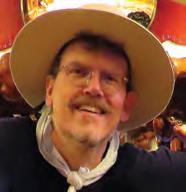
WILD WEST SPRING 2023 4 EDITOR’S LETTER DIGITAL COMMONWEALTH, BOSTON PUBLIC LIBRARY
WIWP-230400-EDITORS-LETTER.indd 4 1/26/23 8:29 AM
In 1783 Thomas Jefferson stood on this rock at the confluence of the Potomac and Shenandoah rivers to contemplate the “undiscovered country” to the west. Little could he imagine the history to be made.
Signature John Wayne Stockade Jacket
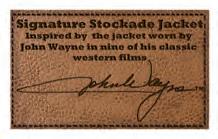
Inspired by the Jacket John Wayne Wore in Many of His Classic Western Films!
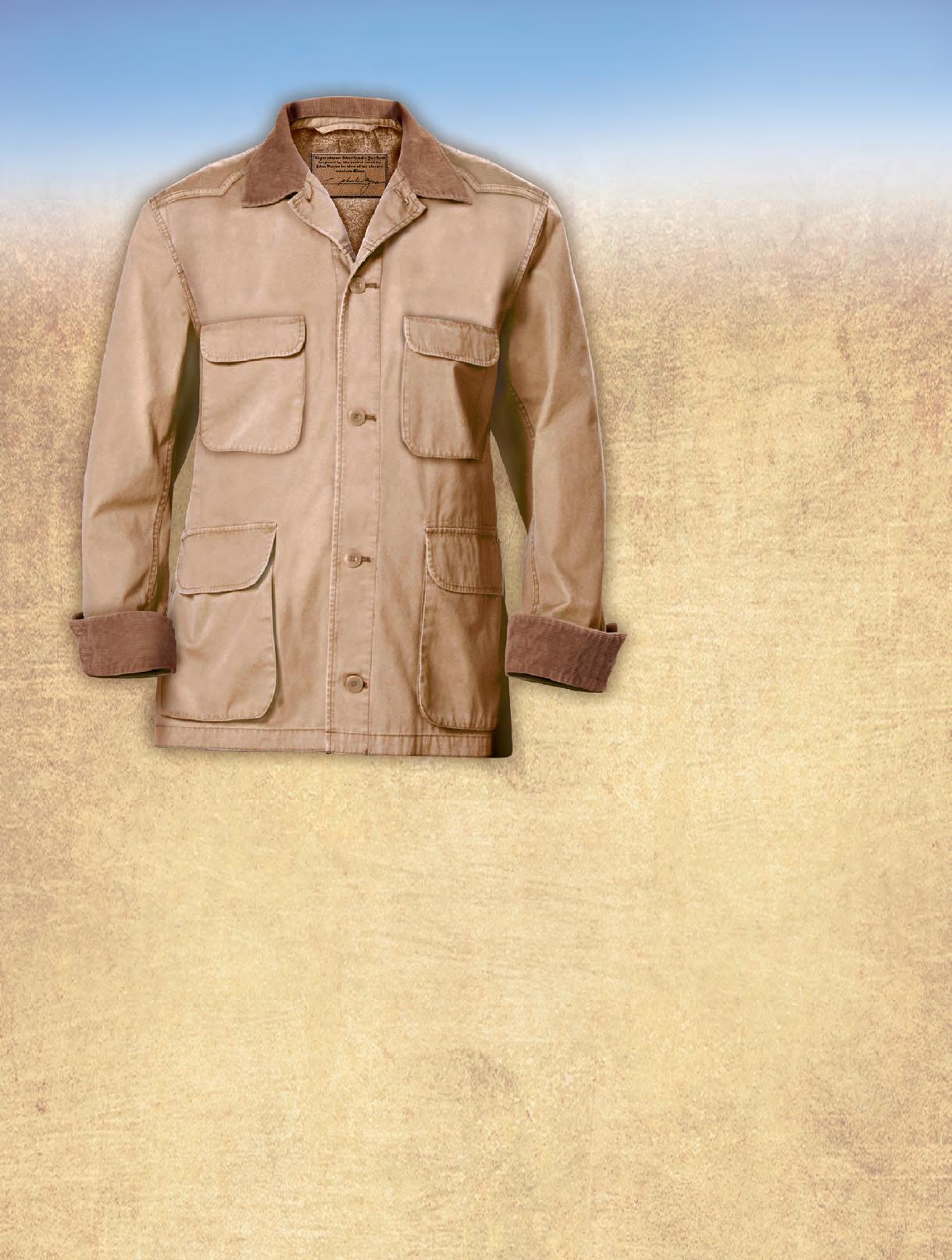
Expertly Crafted of Tan Cotton Canvas with Flannel Lined Interior
Corduroy Collar and Cuff Accents
Faux Leather Patch Embossed with John Wayne’s Signature Sewn in at the Neck
A Custom Apparel Design Available Only from The Bradford Exchange
Own the West… Just Like “DUKE”
With a legendary career as a noble hero, along with a much-admired striking presence, nobody embodies classic Western movies like John Wayne. Now you can wear a fitting tribute to this iconic star of the silver screen with our rugged yet handsome Signature John Wayne Stockade Jacket
Available only from The Bradford Exchange, this casual jacket was inspired by the same jacket John Wayne wore in many of his classic western films! Masterfully crafted of desert tan cotton canvas with flannel lining, this comfortable jacket is designed for rugged good looks and classic western style. The rough and tough jacket also features a corduroy collar and cuff accents, and a classic 5 button front closure. A faux leather patch embossed with John Wayne’s signature is sewn in at the neck, so you can show you’re a fan wherever the trail may take you! The jacket has a roomy fit, and 4 front
flap pockets on the chest and waistline. It’s a wonderful way to honor the enduring spirit of a true American icon!
An Outstanding Value… Satisfaction Guaranteed
This custom jacket is a remarkable value at $169.95*, and you can pay for it in 4 easy installments of $42.49. Sizes XXL-XXXL, add $10. To order yours, in 5 men’s sizes from M-XXXL, backed by our unconditional 30-day guarantee, you need send no money now... just fill out and mail in your Priority Reservation today!
JOHN WAYNE, , DUKE and THE DUKE are the exclusive trademarks of, and the John Wayne name, image, likeness and voice, and all other related indicia are the intellectual property of, John Wayne Enterprises, LLC. ©2022. All rights reserved. www.johnwayne.com.
©2022 The Bradford Exchange 01-22289-001-BIBR6
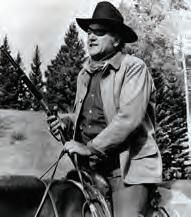
B_I_V = Live Area: 7 x 9.75, 1 Page, Installment, Vertical Price Logo Address Code Tracking Code Yellow Snipe Shipping Service NOT AVAILABLE IN STORES
Order Today at bradfordexchange.com/STOCKADEJACKET Connect with Us! RESERVATION APPLICATION SEND NO MONEY NOW YES. Please reserve the Signature John Wayne Stockade Jacket in the size checked below for me as described in this announcement. Please Respond Promptly ❑ Medium (38-40) 01-22289-011 ❑ Large (42-44) 01-22289-012 ❑ XL (46-48) 01-22289-013 ❑ XXL (50-52) 01-22289-014 ❑ XXXL (54-56) 01-22289-015 The Bradford Exchange 9345 Milwaukee Avenue · Niles, IL 60714-1393 *Plus a total of $18.99 shipping and service (see bradfordexchange.com). Please allow 2-4 weeks after initial payment for shipment. Sales subject to product availability and order acceptance. Signature Mrs. Mr. Ms. Name (Please Print Clearly) Address City State Zip Email E56302 Where Passion Becomes Art WIWP-230221-004 Bradford Exchange John Wayne Stockade.indd 1 1/5/2023 2:41:05 PM
MICHAEL A. REINSTEIN CHAIRMAN & PUBLISHER
Codemakers: History of the Navajo Code Talkers
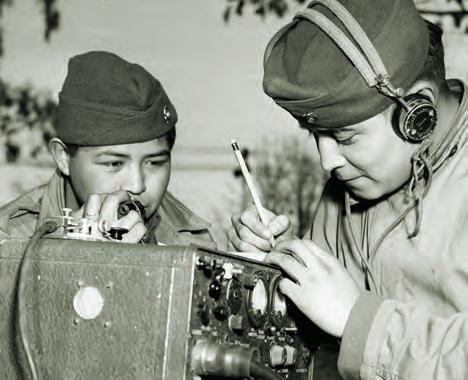 By William R.
By William R.
DAVID LAUTERBORN EDITOR
JON GUTTMAN SENIOR EDITOR
GREGORY J. LALIRE EDITOR EMERITUS
JOHNNY D. BOGGS SPECIAL CONTRIBUTOR
JOHN KOSTER SPECIAL CONTRIBUTOR
JOHN BOESSENECKER SPECIAL CONTRIBUTOR
BRIAN WALKER GROUP DESIGN DIRECTOR
MELISSA A. WINN DIRECTOR OF PHOTOGRAPHY
AUSTIN STAHL ASSOCIATE DESIGN DIRECTOR
ALEX GRIFFITH PHOTO EDITOR
DANA B. SHOAF EDITOR IN CHIEF
CLAIRE BARRETT NEWS AND SOCIAL EDITOR
CORPORATE
KELLY FACER SVP REVENUE OPERATIONS
MATT GROSS VP DIGITAL INITIATIVES
ROB WILKINS DIRECTOR OF PARTNERSHIP MARKETING
JAMIE ELLIOTT SENIOR DIRECTOR, PRODUCTION
ADVERTISING
MORTON GREENBERG SVP ADVERTISING SALES mgreenberg@mco.com
TERRY JENKINS REGIONAL SALES MANAGER tjenkins@historynet.com

DIRECT RESPONSE ADVERTISING
NANCY FORMAN / MEDIA PEOPLE nforman@mediapeople.com
© 2023 HISTORYNET, LLC
SUBSCRIPTION INFORMATION: 800-435-0715 OR SHOP.HISTORYNET.COM
WILD WEST (ISSN 1046-4638) is published quarterly by HistoryNet, LLC, 901 North Glebe Road, 5th Floor, Arlington, VA 22203 Periodical postage paid at Tysons, Va., and additional mailing offices. postmaster, send address changes to WILD WEST, P.O. Box 900, Lincolnshire, IL 60069-0900
List Rental Inquiries: Belkys Reyes, Lake Group Media, Inc. 914-925-2406; belkys.reyes@lakegroupmedia.com
Canada Publications Mail Agreement No. 41342519




Canadian GST No. 821371408RT0001
The contents of this magazine may not be reproduced in whole or in part without the written consent of HistoryNet, LLC
PROUDLY MADE IN THE USA

NATIONAL ARCHIVES VISIT HISTORYNET.COM Sign up for our FREE weekly e-newsletter at historynet.com/newsletters HISTORYNET PLUS! Today in History What happened today, yesterday or on any day you care to search. Daily Quiz Test your historical acumen every day! What If? Consider the fallout of historical events had they gone the ‘other’ way. Weapons & Gear The gadgetry of war—new and old, effective and not so effective. TRENDING NOW
SPRING 2023 / VOL. 35, NO. 4
THE AMERICAN FRONTIER
Vexed by Japanese cryptographers during World War II, the Americans succeeded by developing a secret code based on the language of the Navajos.
Wilson historynet.com/wwii-navajo-code-talkers
WIWP-230400-MASTHEAD.indd 6 1/20/23 1:44 PM
History. Heritage. Craft CULTURE. The Great Outdoors. The Nature of the West. 1.1
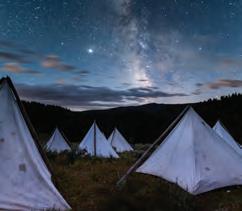

million acres of pristine wildland in the Bighorn National Forest, encompassing 1,200 miles of trails, 30 campgrounds, 10 picnic areas, 6 mountain lodges, legendary dude ranches, and hundreds of miles of waterways. The Bighorns offer limitless outdoor recreation opportunities.




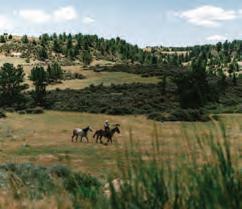
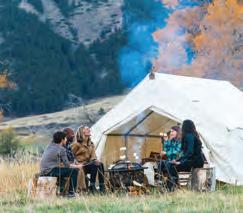

101
restaurants, bars, food trucks, lounges, breweries, distilleries, tap rooms, saloons, and holes in the wall are spread across Sheridan County. That’s 101 different ways to apres adventure in the craft capital of Wyoming. We are also home to more than 40 hotels, motels, RV parks, and B&Bs.



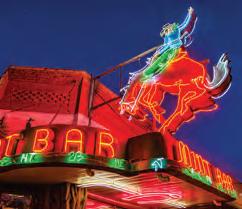
seasons in which to get WYO’d. If you’re a skijoring savant, you’ll want to check out the Winter Rodeo in February 2022. July features the 92nd edition of the beloved WYO Rodeo. Spring and fall are the perfect time to chase cool mountain streams or epic backcountry lines.

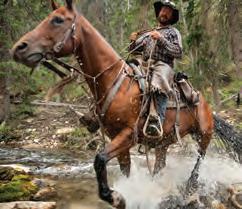
Sheridan features a thriving, historic downtown district, with western allure, hospitality and good graces to spare; a vibrant arts scene; bombastic craft culture; a robust festival and events calendar; and living history from one corner of the county to the next.


4
∞ WIWP-230221-003 Sheridan Tourism.indd 1 1/10/2023 10:00:45 AM
Print the Legends
WHO’S KIDDING WHO?
I was grateful the cover of your Autumn 2022 Wild West labeled part of your magazine’s contents as “Tales of Billy the Kid.” The issue’s assortment of articles about and around the character of Billy the Kid contained a delicious stewpot of facts, assertions, suppositions and conjectures that stimulated my imagination but confused my cognitive digestive tract about just what was clearly known and not known about one William H. McCarty, aka William H. Bonney, a 19th-century resident of New Mexico Territory. The articles were well-written and laid out artfully on the pages of your glossy magazine, which makes it all the more dyspeptic that the combination of the articles’ ingredients made it very difficult to sort verifiable information from educated guesses. Of course, several of the authors were conscientious about qualifying their speculations, but others were not. I suppose in the free market of ideas the consumer is well advised to check out the authenticity of any written statements themselves; your term “tales” points readers in that scrutinizing direction.
Jeff Schwehn Las Cruces, N.M.
Editor responds: “Recollections of the Kid” author Mark Iacampo notes clearly in his article how these tales told in later years about the Kid are questionable. As for the other articles, they are written by authors who have done thorough research. No matter what qualifications an author has, however, information in any article about Billy is due further scrutiny, as there remain plenty of uncertainties in the story of his life and career.
I’m disappointed to see that a painting [see above] based on a thoroughly discredited photo alleging to show Billy the Kid was used in Mark Iacampo’s article “Recollections of the Kid.” The tintype this painting depicts went up for auction in 2019 and went unsold. For just one example of the many reasons it went unsold: While the owner claimed a provenance (without documentation) that connected the tintype to a friend of Billy’s when it went up for auction in 2019, in 2016 he admitted there was no provenance when he tried selling it on eBay. Publishing depictions of a debunked photo gives it an air of legitimacy and can lead readers to believe there’s a strong chance it could be Billy (there’s not). I expect better from Wild West as a respected Western history publication.
Corey Recko Hudson, Ohio
Editor responds: We share your concern for historical accuracy, but our use of the depiction of the Kid playing poker surely adds no legitimacy to the debunked photo from which it was taken. After all, we ran the painting in an article presenting recollections of people who had met the Kid or said they had. As author Iacampo stated, such tales should be taken with a large grain of salt. Thus, the painting seemed fitting for the article. Yes, it was based on a photo someone misrepresented as showing Billy—though few people in the know recognize it as such. There wasn’t room in the caption to get into all that, but Wild West has repeatedly stated there is only one authenticated photo of the Kid—and he isn’t playing poker in that one.
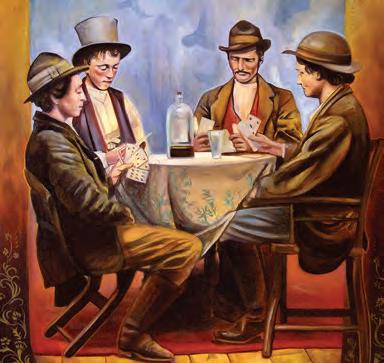
WAYNE’S WORLD
[Re. “John Wayne, Big As Life,” Collections, by Linda Wommack, Autumn 2022:] Everything’s bigger in Texas, so it shouldn’t be a surprise that larger-than-life John Wayne has found a home there in the new museum John Wayne: An American Experience. This museum lies deep in the heart of Texas at the Fort Worth Stockyards, in America’s cowboy capital—a perfect venue for the legendary individual who played cowboys in such classics as Red River and The Cowboys. A rugged John Wayne at 6-foot-4, together with his “Feo, fuerte y formal” (“Ugly, strong and dignified”) credo, and his incorruptible virtues and principles of hard work, discipline, integrity, fairness, loyalty, courage and patriotism ( otherwise known as the “Cowboy Code”) capture the epitome of a cowboy. This beautiful museum not only honors and celebrates Duke’s huge film legacy, but also pays tribute to the same strong American values for which Wayne proudly stood.
Paul Hoylen Deming, N.M.
Send letters by email to wildwest@historynet.com Please include your name and hometown @WildWestMagazine
Editor responds: Any museum that spurs further interest in the West and history, not to mention Western film history, is always welcome. The Autumn 2022 issue also featured editor David Lauterborn’s interview with Ethan Wayne [historynet.com/ ethan-wayne-interview], who succeeded his brother Michael as president of the family-run John Wayne Enterprises and director of the John Wayne Cancer Foundation. It was Ethan who spearheaded efforts to create the Fort Worth museum, and his father’s positive influence continues under his able direction.
WILD WEST SPRING 2023 8 LETTERS SARA BLOODWOLF
Sara Bloodwolf based her oil on canvas Regulators on a debunked photo of the Kid and cohorts, thus it suited writer Mark Iacampo’s collection of “Kid tales” to a T.
WIWP-230400-LETTERS.indd 8 1/26/23 8:29 AM
Survival of the Sharpest

That first crack of thunder sounded like a bomb just fell on Ramshorn Peak. Black clouds rolled in and the wind shook the trees. I had ventured off the trail on my own, gambled with the weather and now I was trapped in the forest. Miles from camp. Surrounded by wilderness and watching eyes. I knew that if I was going to make it through the night I needed to find shelter and build a fire... fast. As the first raindrops fell, I reached for my Stag Hunter Knife
Forget about smartphones and GPS, because when it comes to taking on Mother Nature, there’s only one tool you really need. Our stunning Stag Hunter the ultimate sidekick for surviving and thriving in the great outdoors. Priced at $149, the Stag Hunter can be yours today for an unbelievable $79! Call now and we’ll include a bonus leather sheath!
A legend in steel. The talented knifemakers of Trophy Stag Cutlery have done it again by crafting a fixedblade beauty that’s sharp in every sense of the word. The Stag Hunter sports an impressive 5⅓" tempered German stainless steel blade with a genuine deer stag horn and stained Pakkawood™ handle, brass hand guard and polished pommel. You get the best in 21st-century construction with a classic look inspired by legendary American pioneers.

But we don’t stop there. While supplies last, we’ll include a pair of $99 8x21 power compact binoculars and a genuine leather sheath FREE when you purchase the Stag Hunter Knife.

Your satisfaction is 100% guaranteed. Feel the knife in your hands, wear it on your hip, inspect the craftsmanship. If you’re not completely impressed, send it back within 30 days for a complete refund of the item price. But we believe that once you wrap your fingers around the Stag Hunter’s handle, you’ll be ready to carve your own niche into the wild frontier.
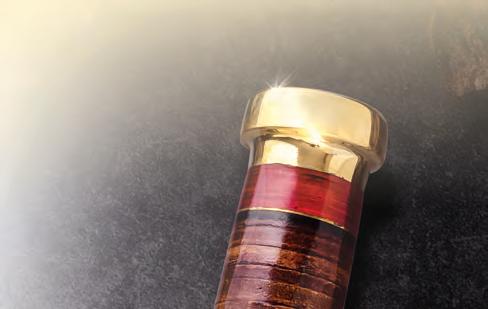
Stag Hunter Knife $149*

Offer Code Price Only $79 + S&P Save $70

Your Insider Offer Code: SHK352-09













You must use the insider offer code to get our special price.


14101 Southcross Drive W., Ste 155, Dept. SHK352-09 Burnsville, Minnesota 55337
• 5 1/3" fixed German stainless steel blade (9 3/4" total length) • Stag horn and Pakkawood™ handle • Includes leather sheath Stauer ®
of
www.stauer.com
Rating
A+ 1-800-333-2045
is only for
who
the
Not shown actual size.
*Discount
customers
use
offer code versus the listed original Stauer.com price.
When it’s you against nature, there’s only one tool you need: the tempered steel Stag Hunter from Stauer—now ONLY $79!
Stauer… Afford the Extraordinary . ® TAKE 47% OFF INSTANTLY! When you use your INSIDER OFFER CODE “This knife is beautiful!” — J., La Crescent, MN
feel of
knife is unbelievable... this an incredibly fine instrument.” — H., Arvada, CO EXCLUSIVE FREE Stauer 8x21 Compact Binoculars -a $99 valuewith your purchase BONUS! Call today and you’ll also receive this genuine leather sheath! WIWP-230221-008 Stauer Stag Hunter Knife.indd 1 1/5/2023 3:17:02 PM
“The
this
10 Interesting Westerners With Ties to Colorado


1 Bent Brothers William and Charles Bent partnered with Ceran St. Vrain in the best known trading post west of the Mississippi. Established in 1833 on the Santa Fe Trail in what today is southeastern Colorado, Bent’s Fort was a gathering spot for travelers, trappers and traders. The Bent brothers forged lasting relationships with the Cheyennes and Arapahos.
2 Kit Carson Christopher “Kit” Carson began his career trapping beaver in the Colorado Rockies and hiring on as a hunter at Bent’s Fort. In the 1850s he served as an Indian agent, working for peace on behalf of his friend Ute Chief Ouray. Late in his career he commanded Fort Garland before taking up ranching in the San Luis Valley. Carson died at Fort Lyon on May 23, 1868, and was initially buried beside wife Josefa at their home in Boggsville.
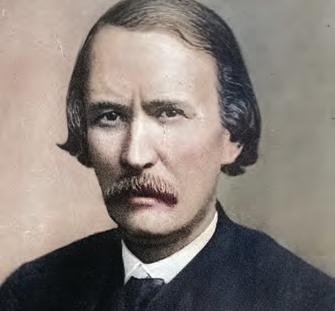
3 Chief Ouray Born in 1833, the year of the shooting stars in tribal lore, the Ute chief sought peace with the U.S. government and preservation of his tribe’s hereditary lands at the height of the Indian wars. By life’s end he and wife Chipeta lived in a six-room house on a 300-acre farm

along the Uncompahgre River near Montrose. Following his death on Aug. 24, 1880, despite Ouray’s best efforts, the government relocated the Utes to reservations in Utah.
4 Buffalo Bill Cody William Frederick Cody earned his reputation as an Army scout, his nickname as a buffalo hunter for the railroads and fame for touring worldwide with the best known Wild West show in American history. At age 13, however, he’d reportedly earned little during the 1859 gold rush to what would become Colorado. In later life he repeatedly visited his sister in Denver, where he died on Jan. 10, 1917. Cody is buried atop Lookout Mountain near Golden.
5 Doc Holliday Tubercular dentist turned professional gambler and gunman John Henry Holliday came West for his health. After risking his life in Tombstone, Arizona Territory, backing the Earp brothers in the O.K. Corral fight and aftermath, Holliday made his way to Colorado, where he gambled in Trinidad, Pueblo and Leadville. The reputedly curative waters of Glenwood Springs failed to remedy his tuberculosis, and he died there on Nov. 8, 1887.
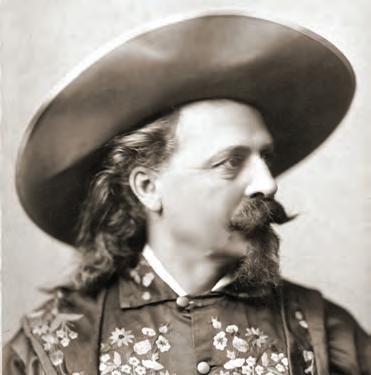
WILD WEST SPRING 2023 10 DENVER PUBLIC LIBRARY (5) FROM TOP: ROBERT G. MCCUBBIN COLLECTION; RENELIBRARY, CC BY-SA 4.0; ALAMO TRUST
ROUNDUP
Chief Ouray
Buffalo Bill Cody
Ann Bassett
Baby Doe Tabor
WIWP-230400-ROUNDUP.indd 10 1/26/23 8:30 AM
Kit Carson
6
Baby Doe Tabor
The beautiful Elizabeth Bonduel McCourt divorced her worthless first husband in 1880, moved to Leadville and met silver magnate Horace Austin Warner “Haw” Tabor, who left his wife of 25 years to marry Baby Doe. Alas, Horace died destitute in 1899, leaving the widowed Baby Doe penniless once again. Her body was found frozen to her cabin floor in 1935.
A Better Remembrance
7 Alferd Packer
Self-proclaimed wilderness guide Packer and five fellow travelers suffered in the San Juan Mountains during the harsh winter of 1874. The only one to emerge alive, Packer later confessed to cannibalism. Though he denied having killed the others, evidence suggested otherwise. Convicted of manslaughter, he served 18 years before being paroled in 1901. Packer died on April 23, 1907, in Deer Creek and is buried in Littleton Cemetery, a stone’s throw from this writer’s house.

8 Margaret Brown A celebrated survivor of the 1912 sinking of RMS Titanic, this Colorado socialite, activist and philanthropist is best remembered as the “Unsinkable Molly Brown.” Known to family and friends as “Maggie,” she married mining engineer James Joseph Brown in Leadville in 1886, and in 1894 the successful couple bought a Victorian mansion in Denver preserved today as the Molly Brown House Museum. Maggie died in her sleep on Oct. 26, 1932.
9 Tom Horn He served at times as a scout, soldier, range detective and Pinkerton agent, but Horn became notorious as a paid-for-hire killer. In 1900, while working for the Swan Land & Cattle Co. in northwest Colorado, he gunned down suspected rustlers Mat Rash and Isom Dart. In 1902 Horn was convicted of having murdered 14-year-old rancher’s son Willie Nickell near Iron Mountain, Wyo., and on Nov. 20, 1903, he was hanged in Cheyenne. His brother brought Tom’s body to Boulder for burial.
On March 3, 2023, amid anniversary observations for the 1836 Battle of the Alamo, the historic site in San Antonio will open a two-story exhibition hall and collections building—the first building of an ongoing redevelopment plan and the newest since the 1950s. The new building (see artist’s sketch below photo of Alamo facade) will occupy the corner of the compound directly behind the iconic chapel. Its 10,000 square feet of gallery space will center on the 430-item collection of Alamo and Texana artifacts donated by British rock star Phil Collins and the recently purchased collection of Spanish colonial artifacts from acclaimed Alamo artist Don Yena and wife Louise. The latter includes more than 400 items used by
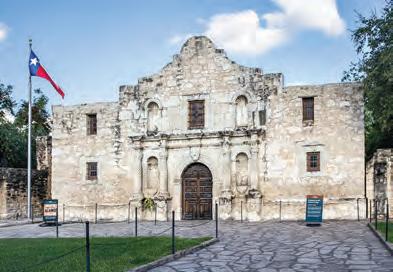
WEST WORDS
‘Shake that [Alexander] McSween outfit up till it shells out and squares up and then shake it out of Lincoln. I will aid to punish the scoundrels all I can. Get the people with you.…Have good men about to aid [Sheriff William] Brady and be assured I shall help you all I can, for I believe that there was never found a more scoundrely set than that outfit’
10
Ann Bassett The first white child born in Browns Park, an isolated northwest Colorado valley notorious for rustling and illegal land grabs, Ann Marie Bassett was in the thick of the action for much of her life. After Tom Horn’s 1900 killing of Mat Rash, her fiancé, Bassett sought vengeance against Horn’s employer, cattle baron Ora Haley. Tried twice for cattle rustling, she was found not guilty both times. In an interview given just before her death on May 8, 1956, Bassett said, “I did everything they said I did and a helluva lot more.”
—Linda Wommack
settlers and indigenous peoples of the Southwest, everything from swords and cannons to kitchen utensils, farming implements and ranching gear. Yena also donated six of his large paintings depicting Spanish Texas and the battle, including the 36-by-60-inch oil First Light, Gunsmoke, Bayonets and Texas History (see historynet.com/don-yena).
The ongoing $388 million overhaul of Alamo Plaza —a partnership between the city, Texas’ General Land Office and the Alamo Trust—will include a new visitor center and museum in which the collections will ultimately be housed. “When people leave the Alamo,” said trust executive director Kate Rogers, “We don’t want them to say, ‘Is that it?’”
—In a letter from Las Cruces, New Mexico Territory, on Feb. 14, 1878, district attorney William L. Rynerson wrote this to James Dolan and John Riley, members (with Lawrence Murphy and others) of a competing economic and political faction in Lincoln, just four days before the killing of McSween associate John Tunstall triggered the Lincoln County War.

WILD WEST SPRING 2023 11 DENVER PUBLIC LIBRARY (5)
FROM
TOP: ROBERT G. MCCUBBIN COLLECTION; RENELIBRARY, CC BY-SA 4.0; ALAMO TRUST
WIWP-230400-ROUNDUP.indd 11 1/26/23 8:30 AM
Wounded Knee Relics
The Founders Museum in Barre, Mass., recently returned some 150 culturally significant artifacts, several with reported ties to the 1890 Wounded Knee battle turned massacre, to Oglala Sioux and Cheyenne representatives of South Dakota’s Pine Ridge and Cheyenne River Indian reservations, respectively. Upward of 200 Lakotas and 31 U.S. soldiers were killed at Wounded Knee. The museum obtained the artifacts more than a century ago from salesman and circus impresario Frank Root, who donated the items after having used them in a traveling show. The 1990 Native American Graves Protection and Repatriation Act calls on federally funded institutions to return such artifacts. As a private institution, the Founders Museum isn’t bound by the act, but its association considered repatriation the respectful thing to do. For years the Wounded Knee Survivors Association has pressed a Scottish museum to return beaded moccasins, a war necklace and a child’s bonnet collected in the aftermath of the 1890 tragedy. Glasgow’s Kelvingrove Art Gallery and Museum acquired its artifacts in 1891 from former soldier and Lakota interpreter George Crager, who had traveled to Scotland with Buffalo Bill Cody’s Wild West. In 1998 the museum repatriated a Ghost Dance shirt (intended to protect its wearer from bullets) to the tribe, but the association had not then requested the return of the other three items.
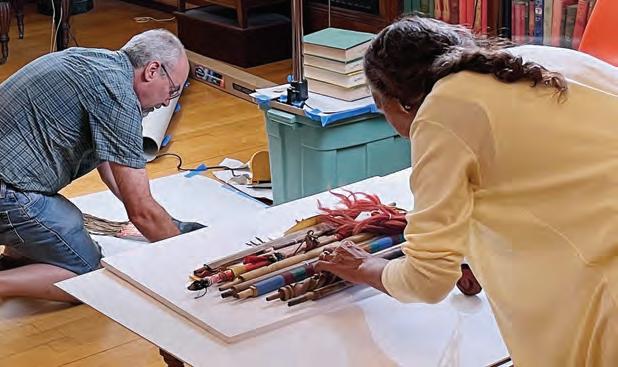
FAMOUS LAST WORDS
And the Wister Goes to…
Western Writers of America has chosen prolific Oglala/Sicangu Lakota writer Joseph M. Marshall III as its 2023 Owen Wister Award honoree for lifetime contributions to Western literature. It will present him with the award—a bronze bison by artist Robert Duffie—at WWA’s annual convention, June 21–24 in Rapid City, S.D. He will also be inducted into the Western Writers Hall of Fame at the Buffalo Bill Center of the West

and such nonfiction titles as The Day the World Ended at Little Bighorn (2007) and The Journey of Crazy Horse (2004). Born in 1945, he was raised on South Dakota’s Rosebud Indian Reservation. Lakota is his first language, and many of his books relate tribal history, customs and beliefs. “ Lila pilamayaya pelo—I thank you very much,” Marshall said on hearing the news. “[This] is an affirmation for me that I pursued the right dream.” Previous Owen Wister honorees include historians Robert M. Utley and Eve Ball and Pulitzer Prize–winning Kiowa writer and poet N. Scott Momaday.
Yellow Journalism
in Cody, Wyo. An author of fiction and nonfiction, a historical consultant and a small-screen actor, Marshall is known for his novels The Long Knives Are Crying (a 2009 Spur Award finalist about the Battle of the Little Bighorn) and Hundred in the Hand (a 2007 work about the 1866 Fetterman Fight)
Seeking to piggyback on the success of the Paramount neo-Western TV series Yellowstone, starring Kevin Costner, the on-demand service Fox Nation hired the actor to narrate its recent fourepisode documentary Yellowstone: One-Fifty , marking the sesquicentennial of that national park. The series features spectacular footage of such highlights as Yellowstone Falls, Grand Prismatic Spring, Old Faithful and the Lamar Valley. Unfortunately, as often happens when Hollywood meets history, history suffers. Costner contends that Congress, with the complicity of big business (“powerful people who wanted the land for themselves”), sent geologist Ferdinand V. Hayden and his scientific party to the region in 1871 to “tear it to shreds in the name of progress,” and that it was Hayden who had a change of heart and lobbied for its protection. But the alleged “battle between the regular guy against the impossibly huge behemoth that is the United States government” never happened. For one, it was Congress that funded the expedition, Hayden taking his orders from the Department of the Interior. For another, investment banker Jay Cooke (financier of the Northern Pacific Railway) was among the most vocal proponents for Yellowstone’s preservation as a national park and provided the expedition with the services of artist Thomas Moran, whose monumental paintings of Yellowstone were seminal in convincing Congress to protect it. On March 1, 1872, President Ulysses S. Grant signed the act that created the park. At one point in Yellowstone: OneFifty inappropriately grand music accompanies the spectacle of a bison scratching itself on a tree —consider that one more reason to watch this beautiful footage with the sound turned down.
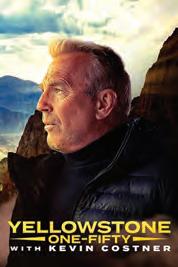
WILD WEST SPRING 2023 12 TOP: PHILIP MARCELLO (ASSOCIATED PRESS); BOTTOM: JOHNNY D. BOGGS
‘Very uncomfortable necktie’
WIWP-230400-ROUNDUP.indd 12 1/26/23 9:01 AM
—Convicted of having killed a jailer during a failed April 1883 escape attempt from the Pima County jail in Tucson, Arizona Territory, Joseph Casey said these words from the gallows on April 15, 1884, as Sheriff Bob Paul cinched a noose around his neck. Moments later, just before the trap was sprung at 1:07 p.m., Casey called out, “Turn her loose—goodbye!”
explore THE HISTORY AND LORE OF THE WILD WEST
The WILD WEST HISTORY ASSOCIATION is dedicated to providing publications and forums for the enlightenment and enjoyment of anyone interested in Wild West history, facilitating and encouraging research, study, writing, presentation, and preservation of the history and lore of the people, events, and places that made the American West “wild” in the last half of the nineteenth century …the lawmen, outlaws, gunfighters, rustlers, vigilantes, feuds, shady ladies, saloons, cowtowns, and mining camps …along with recognizing and honoring those individuals and institutions that make significant contributions to the knowledge and preservation of Wild West history and lore.
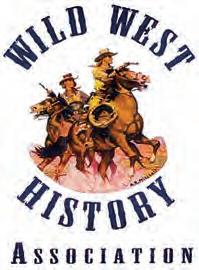
Enjoy our annual ROUNDUP held somewhere in the West every July. This year’s ROUNDUP will be held in San Antonio, Texas, July 12–15, 2023, at the Menger Hotel where we’ll be celebrating the 200th anniversary of the founding of the Texas Rangers, and much, much more.
Become a member and receive our quarterly JOURNAL, containing the latest research, informative articles, authentic photographs, book reviews, and more, defining “the good, the bad, and the ugly” in the Wild West.
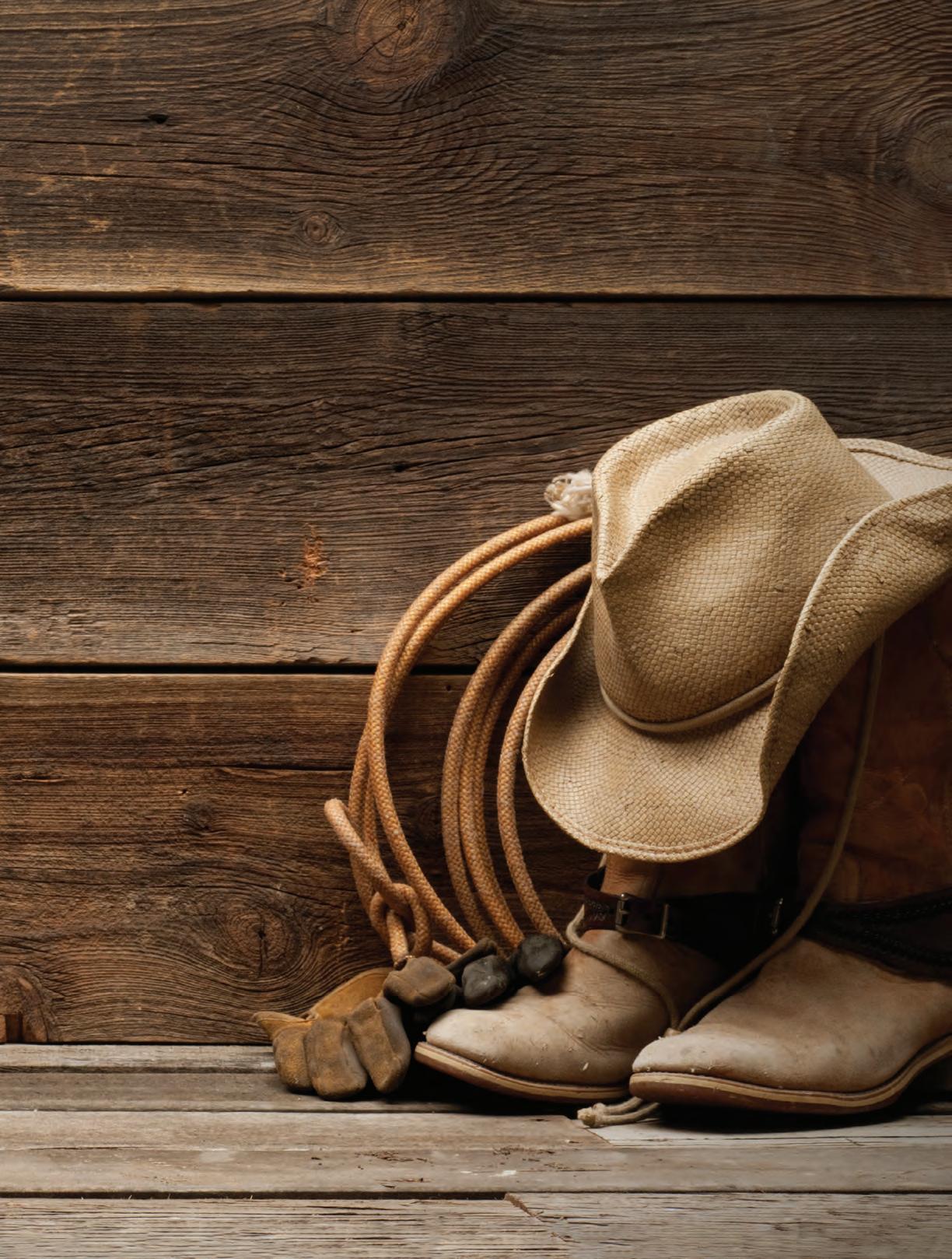
WILDWESTHISTORY.ORG
ROYYOUNG AD-01.23.indd 1 1/3/23 3:52 PM
SEE YOU LATER...
ANDREW PRINE
Actor Andrew Prine, 86, perhaps best known for portraying Lincoln County War storeowner Alexander McSween in the 1970 Western Chisum, died while visiting Paris on Oct. 31, 2022. Over his half century on the big and small screen he appeared in numerous episodes of such classic Western TV series as Gunsmoke, Bonanza, The Virginian and Wagon Train and the films Bandolero! (1968) and Rooster Cogburn (1975). As host of the Encore Western Channel show Conversations With Andrew Prine he interviewed such notable Western actors as Eli Wallach, Harry Carey Jr. and Patrick Wayne, as well as Mark Rydell, who directed John Wayne in The Cowboys (1975).
MARY McCASLIN

Folk singer Mary McCaslin, 75, whose 1974 album Way Out West garnered her attention, died on Oct. 2, 2022. Though she was never a household name, lyrics from the title song of her 1974 release still resonate with fans of the Old West: My family left home when I was a child / To head out West, all open and wild / I couldn’t wait to gallop the prairie on a pony / But we passed over the plains and on down / Into the great stucco suburb forest / The people there all held my dreams in jest / Somehow I grew to spite them / Way out West.
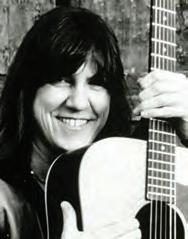
DON EDWARDS
Cowboy singer, songwriter, guitarist and Western musicologist Don Edwards, 86, died in Hico, Texas, on Oct. 23, 2022. Two of his several albums are in the Folklore Archives of the Library of Congress, and he appeared on-screen as Smokey in Robert Redford’s The Horse Whisperer (1998). His legacy prompted none other than “Singing Cowboy”
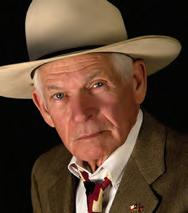
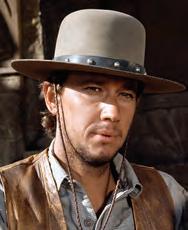
Gene Autry to once say to Edwards, “I’m proud and honored to be riding the same trail as you.”
Pueblo Pottery
“Grounded in Clay: The Spirit of Pueblo Pottery” is showing at the Museum of Indian Arts & Culture in Santa Fe through May 29, 2023, and will get plenty more exposure in years to come, including stops at New York’s Metropolitan Museum of Art (July 13, 2023–June 4, 2024), Houston’s Museum of Fine Arts (Oct. 27, 2024–Jan. 19, 2025) and the St. Louis Art Museum (March 9–June 1, 2025). Organized by the Indian Arts Research Center of the School for Advanced Research in Santa Fe and the Vilcek Foundation in New York and curated by the American Indian communities it represents, the traveling exhibition features more than 100 historic and contemporary clay Pueblo pots. “Pottery permeates the lives of Pueblo peoples,” says Elysia Poon, director of the Indian Arts Research Center. “For many, it is impossible to divorce the pieces from the people.”
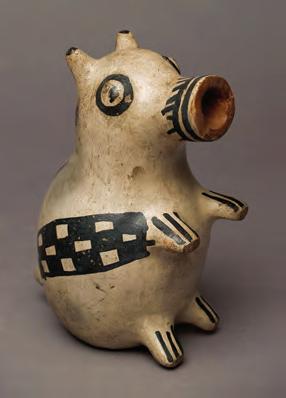
Playing Indian
Sacheen Littlefeather, 75, who died in Novato, Calif., on Oct. 2, 2022, achieved Hollywood notoriety in 1973. Claiming to be a White Mountain Apache, she attended that year’s Academy Awards ceremony on Marlon Brando’s behalf and refused his best actor Oscar for The Godfather in protest for the way American Indians had been depicted in film. Only trouble is, Littlefeather wasn’t her name, and she wasn’t an Apache but of Mexican heritage, born Maria Louise Cruz in Salinas, Calif., in 1946. On refusing Brando’s Oscar she was jeered from the stage. Two weeks before her death the Academy of Motion Picture Arts and Sciences hosted an evening in Littlefeather’s honor and issued her a formal apology. “We Indians are very patient people,” she told attendees. “It’s only been 50 years!” Cruz was neither the first nor last Hollywood type to have feigned Indian ancestry. Among the most visible was Italian American actor Espera Oscar de Corti, aka Iron Eyes Cody, best known for appearing as a crying Indian chief in an early 1970s series of Keep America Beautiful TV ads decrying pollution.
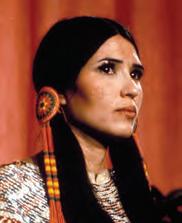
Ship of Gold
On Sept. 12, 1857, the 278foot side-wheel steamship Central America sank amid a hurricane in the Atlan tic Ocean some 160 miles off the Carolinas. Lost with the ship were 425 of its 578 passengers and crew. Many of the passengers were men returning from the Califor nia Gold Rush, and Central America’s holds held a cargo of gold worth an estimated $765 million in today’s dol lars. Expeditions to the wreck between 1988 and 2014 recovered gold and artifacts, but legal wrangles kept much of the find off the auction market until recently. On Dec. 3, 2022, Holabird Western Americana Collections [holabirdamericana.com] of Reno, Nev., offered 270 artifacts from the famed “Ship of Gold,” netting nearly $1 million. Fetching the top bid was the oldest known pair of miner’s heavyduty work pants (above), which fetched $114,000 —the highest price ever paid for a pair of jeans, despite parents’ claims to the contrary.
WILD WEST SPRING 2023 14
LEFT, FROM TOP: TCD/PROD.DB (ALAMY STOCK PHOTO); STUART BRININ (FLI ARTISTS); DONALD KALLAUS; TOP RIGHT: ZUMA PRESS, INC. (ALAMY); BELOW: HOLABIRD WESTERN AMERICANA COLLECTIONS; BOTTOM LEFT: MUSEUM OF INDIAN ARTS AND CULTURE, SANTA FE WIWP-230400-ROUNDUP.indd 14 1/26/23 8:30 AM
The Amazing Telikin One Touch℠ Computer The Smart, Easy Computer for Seniors !
● Easy One Touch Menu!
● Large Fonts
200% Zoom
● 100% US Support
● Large Print Keyboard

If you find computers frustrating and confusing, you are not alone. When the Personal Computer was introduced, it was simple. It has now become a complex Business Computer with thousands of programs for Accounting,Engineering, Databases etc. This makes the computer complex.
You want something easy, enjoyable, ready to go out of the box with just the programs you need. That’s why we created the Telikin One Touch computer.
Telikin is easy, just take it out of the box, plug it in and connect to the internet. Telikin will let you easily stay connected with friends and family, shop online, find the best prices on everything, get home delivery, have doctor visits, video chat with the grandkids, share pictures, find old friends and more. Telikin One Touch is completely different.
One Touch Interface - A single touch takes you to Email, Web, Video Chat, Contacts, Photos, Games and more.

Large Fonts, 200% Zoom – Easy to see easy to read.












Secure System – No one has ever downloaded a virus on Telikin
Voice Recognition - No one likes to type. Telikin has Speech to Text. You talk, it types.

Preloaded Software - All programs are pre-loaded andset up. Nothing to download.
100% US based support – Talk to a real person who wants to help. Telikin has great ratings on BBB and Google!




Secure System No Viruses!
Speech to Text You talk, It types!
Great Customer Ratings
This computer is not designed for business. It is designed for you!
"This was a great investment."
Ryan M,CopperCanyon, TX
"Thank you again for making a computer for seniors"
Megan M,Hilliard, OH
"Telikin support is truly amazing.”
NickV,Central Point, OR Call toll freeto find out more!
Mention Code 1185 for introductory pricing
60 Day money back guarantee
844-215-3127
WIWP-230221-007 Journey Health & Lifestyle WOW Computer.indd 1 1/5/2023 2:49:18 PM
Copyright Telikin 2022
Following His Nose
IN HIS BIOGRAPHY OF ‘BIG NOSE GEORGE’ PAROTT AUTHOR MARK MILLER SEEKS TO DEMYTHOLOGIZE THE INFAMOUS WYOMING HIGHWAYMAN
BY CANDY MOULTON
On March 22, 1881, convicted murderer Big Nose George Parott, having filed the rivets off his shackles with a smuggled pocketknife, tried to escape from the Carbon County Jail in Rawlins, Wyo. After striking jailer Bob Rankin over the head, however, Parott was persuaded at gunpoint by Rankin’s wife, Rosa, to return to his cell. Parott was just a couple of weeks shy of his scheduled execution for the ambush killing of Union Pacific detective Tip Vincent and Carbon County Deputy Sheriff Bob Widdowfield after a bungled 1878 train robbery. On the night of Parott’s escape attempt an impatient mob rushed the jail, dragged him from his cell and hanged him from a telegraph pole on Front Street in Rawlins.
Former Wyoming State Archaeologist Mark Miller had heard about Parott’s misdeeds, trial and lynching from the time he was a boy, for the county sheriff at the time of the outlaw’s trial and lynching had been Miller’s great-grandfather Isaac “Ike” Miller. The younger Miller and other archaeologists later studied the relevant crime scenes, as well as Parott’s skull, for in the wake of the outlaw’s death doctors had sawn off his skullcap to examine his “criminal brain.” Doctor John Osborne went a step further, having strips of Parott’s skin made into a pair of shoes. The bad doctor even wore the shoes to his Jan. 2, 1893, inaugural as governor of Wyoming.
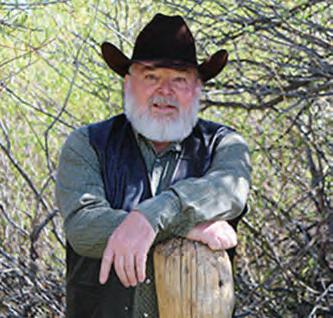
Miller recently spoke with Wild West about his recent biography Big Nose George: His Troublesome Trail , in which the author relates the macabre details and seeks to get at the truth about the outlaw’s life, criminal career, trial and death.
How did you establish who killed Vincent and Widdowfield?
They were first identified by their partners in crime to other outlaws and eventually to authorities under threat of lynching. The murder indictments in the Carbon County Clerk of Court records list eight murderers on each formal accusation, written down after a grand jury and sworn to by authorities. Their names came from outlaw “confessions,” and Big Nose George confirmed them during his court proceedings.
Who were the murderers?
Big Nose George Parott, Dutch Charley [Burris], Jack Campbell, Frank James, Joe (or John) Minuse, Tom Reed, Frank Tole, Sim Wan and John Wells.
How was your great-grandfather Miller involved?
Citizens of Carbon County elected my great-grandfather Isaac C. Miller as sheriff in November 1880 while George Parott sat in jail awaiting trial for murder. Once elected, Ike would be responsible to conduct the sentence of hanging Parott in April 1881.…Vigilantes hanged him in town while Ike was away on business in Sand Creek.
Why did Big Nose George return to the headlines in the 20th century?
The most significant event was the 1950 discovery of a whiskey barrel buried near Front Street in Rawlins that contained the sk eletal remains of an adult male missing the skullcap on his cranium. Lillian Heath had been a medical assistant to Dr. Thomas Maghee and Dr. John Osborne in the early 1880s, and Dr. Osborne gave her Parott’s skullcap when they studied the outlaw’s brain. She was still alive in 1950 and sent the skullcap to the barrel discovery site, where the two pieces of cranium were refit perfectly. This solid chain of custody proved the identity of the skeleton in the barrel. This discovery rekindled stories of the outlaw legend and influenced the perspective citizens hold today about the desperado.
Describe the related DNA work you engaged in as state archaeologist.
A research team consisting of myself, Dr. George Gill, graduate student Kristi McMahan and research scientist Rick Weathermon were able to assemble all the physical evidence remaining from the Big Nose George story in 1995. The Union Pacific Museum gave permission to Dr. Gill to remove a small piece of hide from Parott’s skullcap for DNA. The sample has not been run and is still in storage in case a future DNA study is called for. In addition, we measured the skull, analyzed the dental pattern, estimated age, race and sex. Weathermon studied superpositions of photographs taken of the skull, death mask and only known photo of the outlaw, showing they all were likely from the same individual. A stature estimate was impossible, because the postcranial bones had disappeared. The Wyoming State Crime Lab indicated the lighter components of a pair of Dr. John Osborne’s shoes in the Parott collection were consistent with human flesh.
To read the full interview visit historynet.com.
WILD WEST SPRING 2023 16 INTERVIEW MARK E. MILLER
WIWP-230400-INTERVIEW.indd 16 1/20/23 1:46 PM
Mark Miller
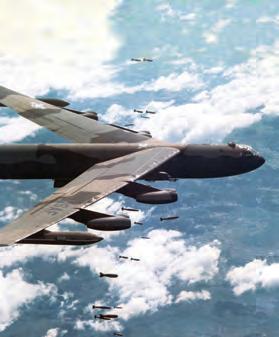


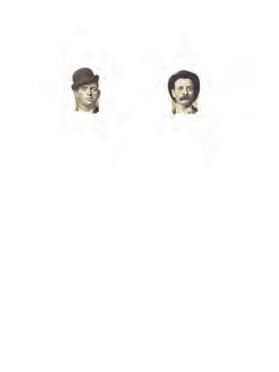





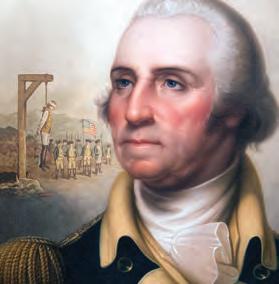

The Day the War Was Lost It might not be the one you think Security Breach Intercepts of U.S. radio chatter threatened lives 50 th ANNIVERSARY LINEBACKER II AMERICA’S LAST SHOT AT THE ENEMY First Woman to Die Tragic Death of CIA’s Barbara Robbins HOMEFRONT the Super Bowl era WINTER 2023 WINTER 2023 Vicksburg Chaos Former teacher tastes combat for the first time Elmer Ellsworth A fresh look at his shocking death Plus! Stalled at the Susquehanna Prelude to Gettysburg Gen. John Brown Gordon’s grand plans go up in flames MAY 2022 In 1775 the Continental Army needed weapons— and fast World War II’s Can-Do City Witness to the White War ARMS RACE THE QUARTERLY JOURNAL OF MILITARY HISTORY WINTER 2022 H H STOR .COM JUDGMENT COMES FOR THE BUTCHER OF BATAAN THE STAR BOXERS WHO FOUGHT A PROXY WAR BETWEEN AMERICA AND GERMANY PATTON’S EDGE THE MEN OF HIS 1ST RANGER BATTALION ENRAGED HIM UNTIL THEY SAVED THE DAY JUNE 2022 JULY 3, 1863: FIRSTHAND ACCOUNT OF CONFEDERATE ASSAULT ON CULP’S HILL H In one week, Robert E. Lee, with James Longstreet and Stonewall Jackson, drove the Army of the Potomac away from Richmond. H THE WAR’S LAST WIDOW TELLS HER STORY H LEE TAKES COMMAND CRUCIAL DECISIONS OF THE 1862 SEVEN DAYS CAMPAIGN 16 April 2021 Ending Slavery for Seafarers Pauli Murray’s Remarkable Life Final Photos of William McKinley An Artist’s Take on Jim Crow “He was more unfortunate than criminal,” George Washington wrote of Benedict Arnold’s co-conspirator. No MercyWashington’s tough call on convicted spy John André HISTORYNET.com February 2022 CHOOSE FROM NINE AWARD - WINNING TITLES Your print subscription includes access to 25,000+ stories on historynet.com—and more! Subscribe Now! HOUSE-9-SUBS AD-11.22.indd 1 12/21/22 9:34 AM
‘The Peerless’
More than a decade before sharpshooter Annie Oakley joined Buffalo Bill Cody’s Wild West, dancer Giuseppina
Morlacchi garnered headlines performing with Cody in the traveling Western stage drama Scouts of the Prairie. Dime novelist and entrepreneur Ned Buntline, who hastily wrote the three-act Western script in December 1872, had the Italian-born prima ballerina play an Indian princess named Dove Eye. The male stars of Buntline’s theatrical company were Cody and John Baker “Texas Jack” Omohundro, notable Army scouts who played themselves onstage. Landing Morlacchi was quite a coup for Buntline. Since making her U.S. debut in New York City in 1867, she had become the most sought-after dancer in the country, introduced the can-can to American audiences and earned the nickname “The Peerless.” Photo collector Tony Sapienza said that when graceful Giuseppina performed the “grand gallop can-can” on Jan. 6, 1868, in Boston, where this photograph was taken, her interpretation of the high-stepping dance left the audience breathless. In Scouts of the Prairie she not only remembered her lines better than her costars, but also found romance with one of them. On Aug. 31, 1873, she married Omohundro at St. Mary’s Catholic Church in Rochester, N.Y. Morlacchi continued to perform with her dance troupe and star with her husband in Western dramas. But tragedy was to strike the young couple when 33-year-old Texas Jack died of pneumonia in Leadville, Colo., on June 28, 1880. With that Morlacchi stopped touring. A scant six years later, on July 23, 1886, she died of cancer at age 49 in Billerica, Mass. (For more on both Omohundro and Morlacchi see “‘Texas Jack’ Takes an Encore,” by Matthew Kerns, in the April 2022 Wild West.)
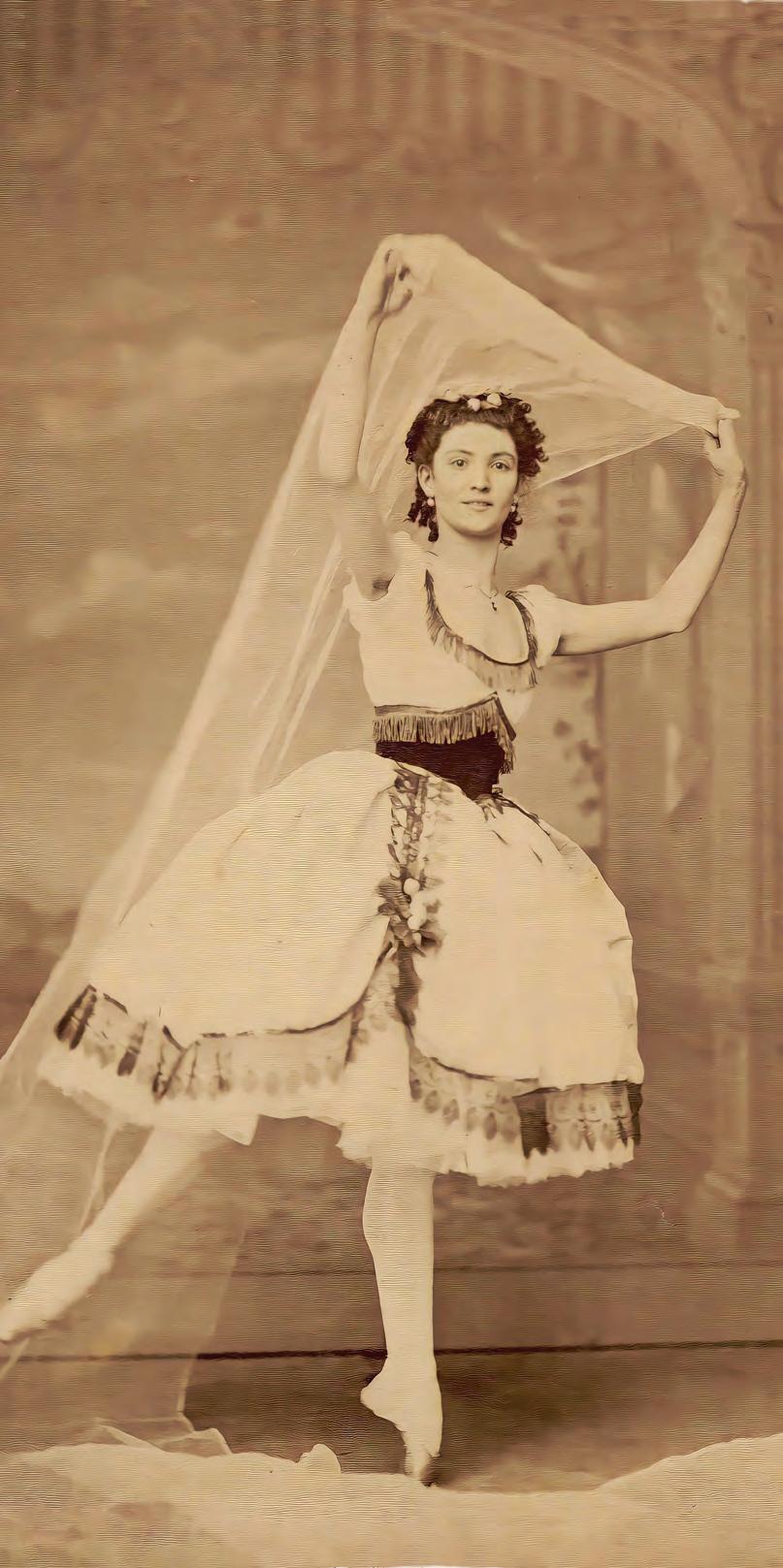
TONY
COLLECTION 18 WILD WEST SPRING 2023 WESTERNERS
SAPIENZA
WIWP-230400-WESTERNERS.indd 18 1/20/23 1:46 PM
“I’’ve gotten many compliments on this watch. The craftsmanship is phenomenal and the watch is simply pleasing to the eye.”
—M., Irvine, CA


“GET THIS WATCH.”
—M., Wheeling, IL 27
In the early 1930s watch manufacturers took a clue from Henry Ford’s favorite quote concerning his automobiles, “You can have any color as long as it is black.” Black dialed watches became the rage especially with pilots and race drivers. Of course, since the black dial went well with a black tuxedo, the adventurer’s black dial watch easily moved from the airplane hangar to dancing at the nightclub. Now, Stauer brings back the “Noire”, a design based on an elegant timepiece built in 1936. Black dialed, complex automatics from the 1930s have recently hit new heights at auction. One was sold for in excess of $600,000. We thought that you might like to have an affordable version that will be much more accurate than the original. Basic black with a twist. Not only are the dial, hands and face vintage, but we used a 27-jeweled automatic movement. This is the kind of engineering desired by fine watch collectors worldwide. But since we design this classic movement on state of the art computer-controlled Swiss built machines, the accuracy is excellent. Three interior dials display day, month and date. We have priced the luxurious Stauer Noire at a price to keep you in the black… only 3 payments of $33. So slip into the back of your black limousine, savor some rich tasting black coffee and look at your wrist knowing that you have some great times on your hands.


An offer that will make you dig out your old tux. The movement of the Stauer Noire wrist watch carries an extended two year warranty. But first enjoy this handsome timepiece risk-free for 30 days for the extraordinary price of only 3 payments of $33. If you are not thrilled with the quality and rare design, simply send it back for a full refund of the item price. But once you strap on the Noire you’ll want to stay in the black.
this
and handassembled parts drive
classic
Take Mine
Stauer… Afford the Extraordinary ® 27-jewel automatic movement • Month, day, date and 24-hour, sun/ moon dials • Luminous markers • Date window at 3’ o’clock • Water resistant to 5 ATM • Crocodile embossed leather strap in black fits wrists to 6½"–9" Stauer Noire Watch $399† Your Cost With Offer
$99 + S&P Save $300 OR 3 credit card payments of $33 + S&P 1-800-333-2045
Code: NWT536-06 You must use this offer code to get our special price. Stauer ® 14101 Southcross Drive W., Ste 155, Dept. NWT536-06 Burnsville, Minnesota 55337 www.stauer.com † Special price only for customers using the offer code versus the price on Stauer.com without your offer code. Rating of A+ Exclusive Offer—Not Available in Stores Back in Black: The New Face of Luxury Watches “...go black. Dark and handsome remains a classic for a reason” — Men’s Journal WIWP-230221-010 Stauer Noire Watch.indd 1 1/5/2023 3:08:48 PM
jewels
masterpiece. I’ll
Black…No Sugar
Code
Offer
The Not-So-Great CPR Train Robbery
THE TRIO OF AMATEURISH BANDITS DIDN’T WEAR MASKS OR HAVE AN ESCAPE PLAN, AND THREE LAWMEN WERE KILLED IN THE AFTERMATH
 BY TERRY HALDEN
BY TERRY HALDEN
The three Russians were acquaintances. Two were recent immigrants, while the third had been in North America for a time. Hard labor in the copper mines of Butte, Mont., had not fulfilled their idea of the “American Dream.” There had to be an easier way to make a living. They considered train robbery. As it was less common north of the border, they resolved to rob a Canadian train.
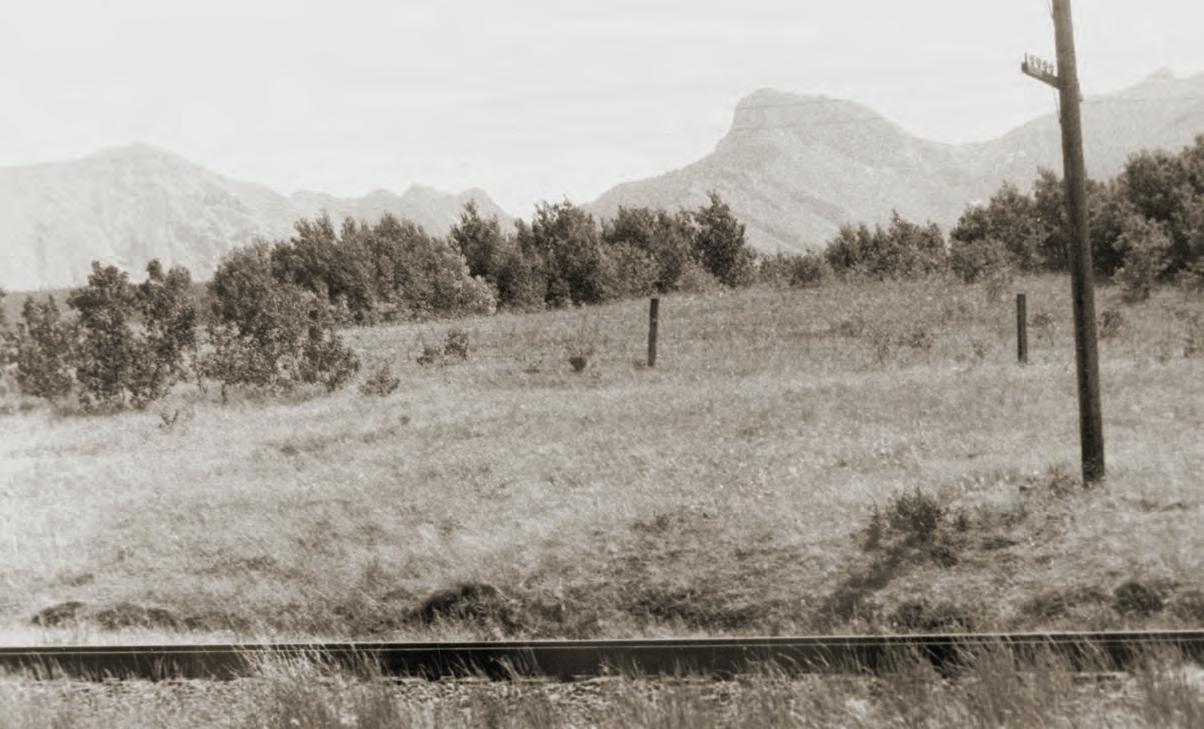
On Monday, Aug. 2, 1920, a warm summer’s day in southern Alberta, Canadian Pacific Railway (CPR) passenger train No. 63 chugged west. Soon entering the Rocky Mountains, it passed in turn through the neighboring towns of Bellevue, Frank, Blairmore and Coleman. Back in the baggage car Bill Staples readied freight to be unloaded at Sentinel, the next stop, at a passenger’s request.
Conductor Sam Jones checked the time on the prized gold pocket watch he’d recently purchased in Lethbridge. On returning it to his breast pocket, he found himself staring down the barrel of a semiautomatic pistol. As the gunman ushered Jones back to the baggage car to join Staples, the conductor was able to surreptitiously tug the emergency cord once. Three pulls would have called for an immediate stop, putting everyone in danger. Once signaled the train crew to stop at the next convenient place, which was Sentinel.
Meanwhile, two other robbers were relieving male passengers of their valuables, while leaving female passengers alone. On finishing their collection, the pair joined the third robber in the baggage car. As the train slowed for the stop at Sentinel, they jumped off and ran into the brush south of the tracks. The inept trio, who had ignored the safe containing several hundred dollars, made off with little more than $400 and Jones’ gold pocket watch. Authorities soon telegraphed descriptions of the suspects to Royal Canadian Mounted Police (RCMP) and Alberta Provincial Police (APP) stations in the area. Also joining the hunt were CPR detectives—two of them, William R. MacLeod and Albert Robine, having suffered the ignominy of being robbed. Jones informed lawmen the trio had boarded the train in Lethbridge, and police there soon identified the suspects as Tom Bassoff, George Arkoff and Ausbey Auloff, Russians from south of the border with prior arrests on minor charges.
Authorities blocked all roads, stopped and searched every train, and investigated numerous sightings. The following Saturday, August 7, APP Constable James Frewin got a tip that two men answering the descriptions of the fugitives had entered a café in Bellevue. Frewin investigated with fellow Constable F.W.E. “Fred” Bailey and RCMP Corporal Ernest Usher.
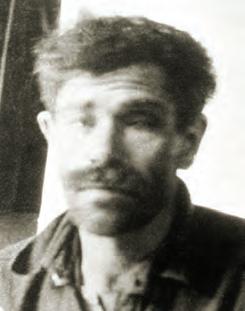
WILD WEST SPRING 2023 20 TOP: UNIVERSITY OF CALGARY; LEFT: GLENBOW MUSEUM, CALGARY GLENBOW MUSEUM, CALGARY
The backbone of the Canadian Rockies hemmed in the tracks south and north of the robbery site near Sentinel, Alberta, forcing the trio of fugitives to flee east or west with authorities close on their heels.
WIWP-230400-GUNFIGHTERS.indd 20 2/6/23 8:52 AM
GUNFIGHTERS & LAWMEN Tom Bassoff
Bailey stood by the rear door of the restaurant while Frewin and Usher strode through the front door. The only diners were Bassoff and Arkoff, who shared a booth. Drawing their sidearms, Frewin and Usher cautiously approached. When Frewin saw Arkoff reach for his coat, which hung beside the booth with the butt of a gun sticking out, the constable opened fire, emptying his gun and then backing away to reload. Usher, who had his gun trained on Bassoff, did not fire. Responding to the shots, Bailey rushed in and over to the booth. Frewin, in a “shell-shocked” state at having shot a man for the first time, left the restaurant. It was then, police later determined, Bassoff saw an opportunity, yanked his Mauser pistol and opened fire.
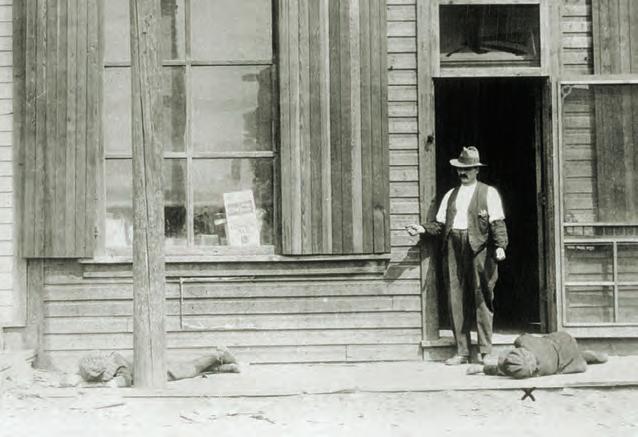
Witnesses outside the restaurant said that after hearing several shots, they watched Corporal Usher back out the front door and turn to descend the step when he caught a bullet in the back. Constable Bailey followed, immediately stumbling over Usher, who lay crumpled on the ground with his head in the doorway. Next came Arkoff, who staggered up the street and collapsed, dead from his wounds. Finally, Bassoff emerged. As Bailey tried to rise, Bassoff fired once into the top of his skull. At that Usher stirred, and Bassoff emptied his gun into the wounded constable before taking off west on foot. Searchers later lost his trail.
By nightfall the manhunt had drawn more than 200 possemen, including police from as far away as Calgary. Anyone with a gun was sworn in and told to shoot on sight. This proved disastrous. On Sunday evening, August 8, Special Constable Nick Kyslik and APP Constable J. Hidson were searching a cabin near the railroad tracks when a slow-moving freight train rumbled past. Kyslik must have seen something suspicious on the train, as he leapt from a window and chased after it. In the twilight all Hidson saw was a running figure. Figuring they had flushed the suspect from the cabin, he yelled “Stop!” Kyslik, unable to hear over the train noise, kept running, so Hidson fired, killing his partner.
Not until Wednesday evening, August 11, did CPR detectives, responding to reports of a suspect limping along the tracks near Pincher Station, capture Bassoff. Despite the bullet wound to his leg, the fugitive had limped 25 miles east over four days and somehow managed to elude 200 possemen. The following Tuesday, August 17, he was arraigned in Fort Macleod before Magistrate Harold P. Burrell on charges of holding up a CPR train and murdering two police officers. The charges were held over, as that afternoon there was a massive double funeral for the slain lawmen. A local man, Bailey left a wife and two young children. Corporal Usher was a native of Ireland with no known relatives in Canada.
On October 13th, with Justice Maitland McCarthy presiding, Crown prosecutor E.J. MacDonald was ready to proceed when someone noticed there was no council for the defense. The judge duly appointed local attorney Donald J. Matheson and gave him an hour to confer with his client. Ballistic evidence revealed Usher had four bullet wounds in his right arm and one in his body from the Luger found on Arkoff, but the corporal had nine other wounds in his body, any one of which could have been fatal, from a Mauser. Bailey had one wound from a bullet that entered his skull through his peaked cap, also from a Mauser. When Bassoff was arrested, he had on his person an empty 10-shot Mauser. That evidence alone sealed his fate.
It took the jury less than an hour to bring in a guilty verdict. The judge condemned Bassoff to hang on December 22.
According to Bassoff, after the heist the trio had argued about the best escape route, and Auloff had headed west, taking Jones’ watch as his share of the loot. APP Sergeant John D. Nicholson reasoned Auloff had probably crossed the border to find work in the Western States, where Russians dominated the lumbering business. With the help of local police Nicholson visited lumber camps and dives across Oregon and Washington, but he had no luck. A break finally came in January 1924 when Portland city police wired then Assistant Superintendent Nicholson with news Jones’ stolen watch had been pawned, and they had identified a suspect. Nicholson sent detective Ernest P. Schoeppe to Portland, only to discover the suspect was not Auloff. Under questioning, the man admitted having bought the watch from an acquaintance in Butte, Mont. On a promise authorities would drop the charge against him, he took Schoeppe to the Butte home of that acquaintance. The man who answered the door was Auloff, who had returned to his old job. Schoeppe arrested the fugitive and turned him over to Butte police.
Waiving extradition, Auloff was returned to Alberta and convicted at trial of armed robbery, for which he received a seven-year sentence. On April 5, 1926, three years into his sentence, Auloff died in prison of respiratory disease brought on by his years underground. Thus what had started six years earlier as an amateurish attempt at a holdup ended up costing three lawmen and, ultimately, three bandits their lives.
WILD WEST SPRING 2023 21 TOP: UNIVERSITY OF CALGARY; LEFT: GLENBOW MUSEUM, CALGARY GLENBOW MUSEUM, CALGARY
WIWP-230400-GUNFIGHTERS.indd 21 2/6/23 8:52 AM
An officer reenacts the deadly Aug. 7, 1920, shooting at a café in Bellevue, east of the robbery site. When Alberta Provincial Police Constables James Frewin and Fred Bailey and Royal Canadian Mounted Police Corporal Ernest Usher confronted fugitives Tom Bassoff and George Arkoff, Bailey, Usher and Arkoff were killed, and Bassoff fled.
PIONEERS & SETTLERS Sarah
the Survivor
THIS HARDY TEXAS PIONEER WITNESSED THE DEATHS OF MANY A LOVED ONE AND ESCAPED CAPTIVITY BY COMANCHE RAIDERS
BY CHUCK LYONS
By life’s end Sarah Creath McSherry Hibbins Stinnett Howard could claim five surnames, one from her birth and one each from her four husbands. Along the way she had suffered more hardship on the Texas frontier than most pioneers, man or woman. Described in her youth as “a beautiful blonde…graceful in manner and pure of heart,” she had watched as two of her husbands, her only brother and one of her children were killed in front of her and had lost a third husband in mysterious circumstances. She herself had been captured by Comanches and escaped, making a perilous and painful journey before stumbling bruised and bleeding into a camp of Texas Rangers. But she had survived.
Originally from the vicinity of Brownsville, Ill., where she was born Sarah Creath around 1810, Sarah married John McSherry
while still a teenager. In 1828 the newlyweds moved south, settling in DeWitt’s Colony, along the Guadalupe River in south Texas, then a Mexican province. In 1829 a son was born to them. Then tragedy struck.
On an otherwise pleasant day that year, around noon, John left the cabin to fetch water from a nearby spring. Moments later Sarah heard yelling and opened the cabin door to the sight of Indians killing and scalping her husband. She quickly slammed and barred the door, locking herself and the baby inside, then grabbed John’s rifle, determined to defend herself and the baby as best she could. While she waited in the still cabin, the Indians slipped away as quietly as they had come.
Around twilight a man named John McCrabb happened by. Seeing what had happened and hearing Sarah’s story, he placed her and the baby on his horse and led them through the
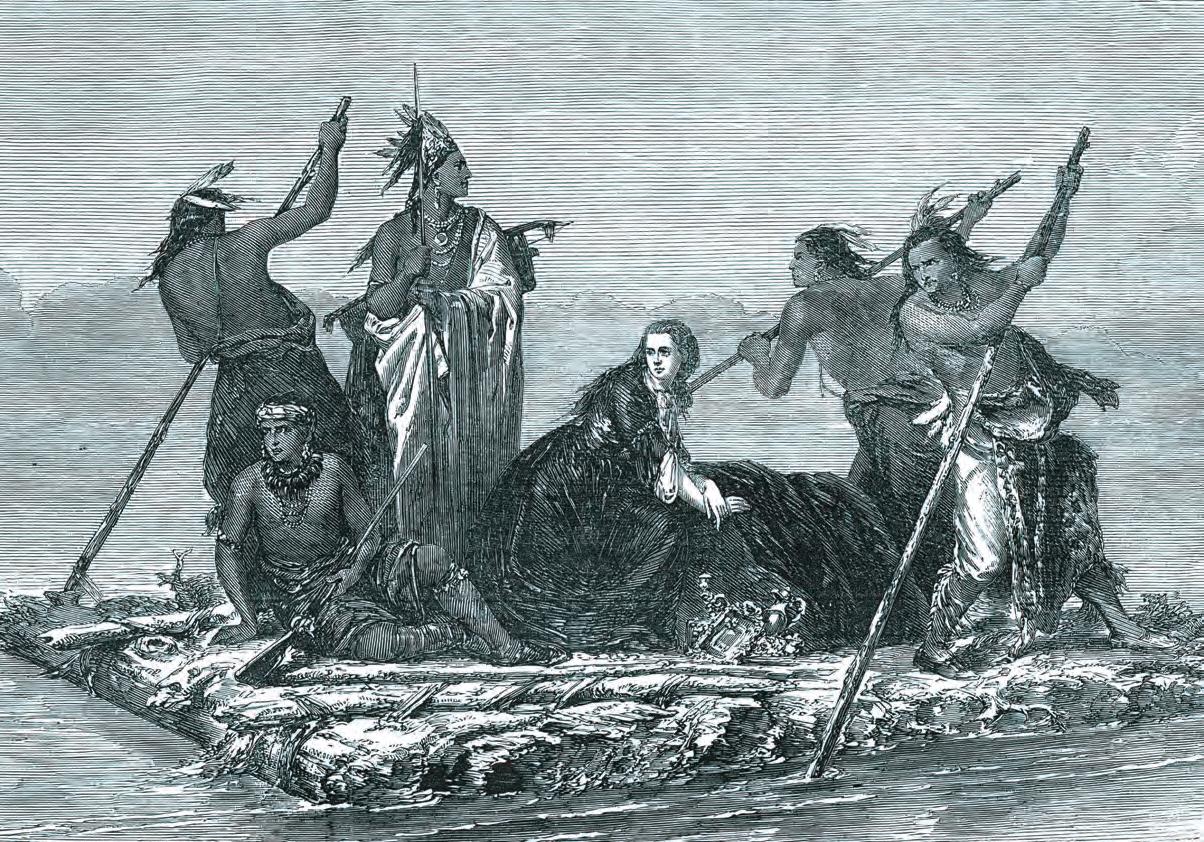
WILD WEST SPRING 2023 22 SAN ANTONIO CONSERVATION SOCIETY FOUNDATION GRANGER
WIWP-230400-PIONEERS.indd 22 1/20/23 1:47 PM
Opposite: A romanticized 1858 engraving depicts a lone female captive being carried off by Comanche warriors. Real-life captive Sarah Creath McSherry Hibbins Stinnett Howard witnessed the murders of two husbands, her brother and a child by Comanches.
darkness to the home of the McSherrys’ nearest neighbors, Andrew Lockhart and family, some 10 miles upriver. Mother and child remained with the Lockharts several months until Sarah remarried, to a well-off Guadalupe Valley man named John Hibbins (also given as Hibbons or Hibben). In 1835, after having given birth to a second child, Sarah returned to Illinois with her two children to visit relatives. In early 1836 they returned to Texas by way of New Orleans, accompanied by Sarah’s only brother, George Creath. In February the four met up with John Hibbins at Columbia, Texas (present-day West Columbia) on the Brazos River, setting out from there by ox cart bound west for the Guadalupe Valley. They never made it. Fifteen miles from home, they were attacked by a band of 13 Comanches who killed Sarah’s husband and brother, took her and the children prisoner, and rode north.
“They traveled slowly up through the timbered country,” John Henry Brown wrote in his 1880 book Indian Wars and Pioneers of Texas, “securely tying Mrs. Hibbins at night and lying encircled around her.” The next day one warrior, weary of listening to the cries of Sarah’s infant, killed it by smashing its head against a tree as Sarah helplessly watched. Days later the party crossed the Colorado River deep in Comancheria and relaxed the security in which they held their captives.
Sarah faced a crossroads. Though she realized there was a chance to escape, she knew she could not make it away safely with her young son, so she made the heartrending decision to leave him. Wrapping him in a buffalo robe, she quietly slipped out of the Indian camp and into the darkness.
“Daylight found her but a short distance from camp, not over a mile or two,” Brown wrote, “and she secreted herself in a thicket from which she soon saw and heard the Indians in pursuit. The savages compelled the little boy to call aloud, ‘Mama! Mama!’ But she knew that her only hope for herself and child was in escape and remained silent.”
When Sarah was certain the Comanches had given up their search, she pressed on through the heavy brush and down the Colorado, eventually stumbling across a riverside cabin in which 18 Texas Rangers had just settled down to their evening meal. Though she’d walked only 10 miles, it had taken her 24 hours. “She was so torn with thorns and briars, so nearly without raiment and so bruised about the face that her condition was pitiable,” Brown wrote.
The Rangers, under the command of Captain John J. Tumlinson Jr., quickly saddled up and went after the Comanches. The next morning, after a brief but hard fight, they rescued Sarah’s child. Sarah and son next went to live among the families Harrell and Hornsby, near the site of presentday Austin, and fled with them as the Mexican army that had taken the Alamo in March moved north. They eventually found refuge with former Dewitt’s Colony neighbor Claiborne Stinnett, and in the spring of 1837 Sarah and Claiborne married. In 1838 Stinnett was elected sheriff of Gonzales County. That fall the sheriff disappeared while returning north to Gonzales from Linnville, on Lavaca Bay. He was thought to have been killed, either by Indians or, as Brown believed, by two runaway slaves. Regardless, Sarah was again a widow. By then, though still shy of 30 years old, she had been widowed three times and seen her brother, one child and two husbands killed before her eyes. On May 29, 1839, she married her fourth and final husband, Phillip Howard. In June 1840 the couple left the Guadalupe Valley and moved west to the San Juan Capistrano Mission south of San Antonio. On arrival they were subjected to an Indian raid, Sarah’s son barely escaping capture a second
time. The Howards later moved farther down the San Antonio River to southern Goliad County. There they experienced more Indian raids and again fled, this time to the vicinity of present-day Hallettsville, in Lavaca County. Finally finding peace there, Sarah gave birth to three daughters, and her husband was named a county judge. In their later years the Howards moved once more, settling in Bosque County, where Sarah died on March 28, 1870, of natural causes. She had been with Phillip for more than half of her 60 years—her reward after long years of hardship.
In 1840, after having lost family members to raids and escaped captivity in Comancheria, Sarah moved to the San Juan Capistrano Mission (above) south of San Antonio with fourth husband Phillip Howard. Further raids prompted two more moves before the couple settled in Lavaca County, Texas. The Howards lived out their days in peace in Bosque County.

WILD WEST SPRING 2023 23 SAN ANTONIO CONSERVATION SOCIETY FOUNDATION GRANGER
WIWP-230400-PIONEERS.indd 23 1/20/23 1:47 PM
One warrior, weary of listening to the cries of Sarah’s infant, killed it by smashing its head against a tree as Sarah helplessly watched
WESTERN ENTERPRISE Photographer in Motion
IN 1902 COLORADO-BASED PHOTOGRAPHER HARRY BUCKWALTER TEAMED UP WITH FILMMAKER WILLIAM SELIG TO MAKE ‘REEL’ WESTERNS
BY DAVID M c CORMICK
On Oct. 9, 1904, amid production on the film The Hold Up of the Leadville Stage (or Robbery of the Leadville Stage), a real shootout occurred. The crew and some two dozen cast members were filming the climactic holdup scene in the foothills of Colorado Springs, Colo., when a wagonload of Eastern tourists happened on the location. Hearing gunshots and witnessing a man falling to the ground, armed men among the tourists opened fire on the make-believe highwaymen, wounding film executive William Selig in the arm. Meanwhile, the director rushed
toward the dudes, waving his arms and beseeching them to cease fire. By the time the Easterners holstered their six-shooters, they’d fired nearly a dozen rounds. Fortunately for cast and crew, the trigger-happy tourists proved pitiable shots, otherwise the affray might have resulted in alltoo-real bullet-ridden bodies.
The director who came to the rescue was Harry H. Buckwalter. Realizing Americans had long been captivated with the lore and legends of the Old West, he was among the first to film what have since been branded Westerns. A photojournalist turned filmmaker, Buckwalter teamed up with William Selig, owner of Selig Polyscope Co., around the turn of the 20th century. Over the next decade the pair produced assorted rudimentary, histrionic narratives for rapt theatergoers. Buckwalter served as producer, director and cameraman, while Selig distributed the films. Though Buckwalter’s production career was brief, it was prolific. Between 1901 and 1913 he completed nearly 50 Western-themed films, some simple scenic panoramas, others action narratives with unpolished plots.

Born in Reading, Pa., on Nov. 1, 1867, Harry Hale Buckwalter first ventured West at age 16. Colorado’s striking vistas prompted an interest in photojournalism, leading him in turn to The Denver Republican and the Rocky Mountain News. As a photographer and roving reporter for the latter, he was soon making headlines. To highlight Buckwalter’s stories, staff artists initially reproduced his photos as wood block-illustrations.
Buckwalter was fearless. On Aug. 12, 1894, having enlisted local balloonist Ivy Baldwin, he prepared to shoot a series of aerial photographs of Denver and environs. When the weight of both men proved too much for the balloon to lift, Buckwalter made the ascent solo from Elitch Gardens. The resulting article, “Dancing in the Air,” featured his sweeping landscapes—early Western photojournalism at its best.
By 1900 Buckwalter had left the Rocky Mountain News to pursue a career as a freelance photographer. He soon found himself working on the railroads, notably the Colorado Midland (CM), taking promotional photographs of trackside scenery. That lucrative work stirred his interest in capturing objects in motion, and he experimented with various high-speed shutters. The sideline paid off, as New York–based Prosch Manufacturing Co., which made early photographic equipment, paid $100 for an enhanced shutter devel-
WILD WEST SPRING 2023 24 TOP: DENVER PUBLIC LIBRARY; RIGHT: MARGARET HERRICK LIBRARY DENVER PUBLIC LIBRARY
WIWP-230400-ENTERPRISE.indd 24 1/20/23 1:47 PM
Drawn west as a teen, Buckwalter earned fame as an enterprising Colorado photojournalist who in 1894 photographed Denver and environs from the basket of a balloon. Motion pictures soon lured him away.
oped by Buckwalter. With his newly honed skill he was soon capturing still images of moving trains, rodeos and other action subjects. It was a short hop from there to motion pictures. For the well-paying CM Buckwalter filmed “travelogues,” early documentaries of spectacular Western routes.
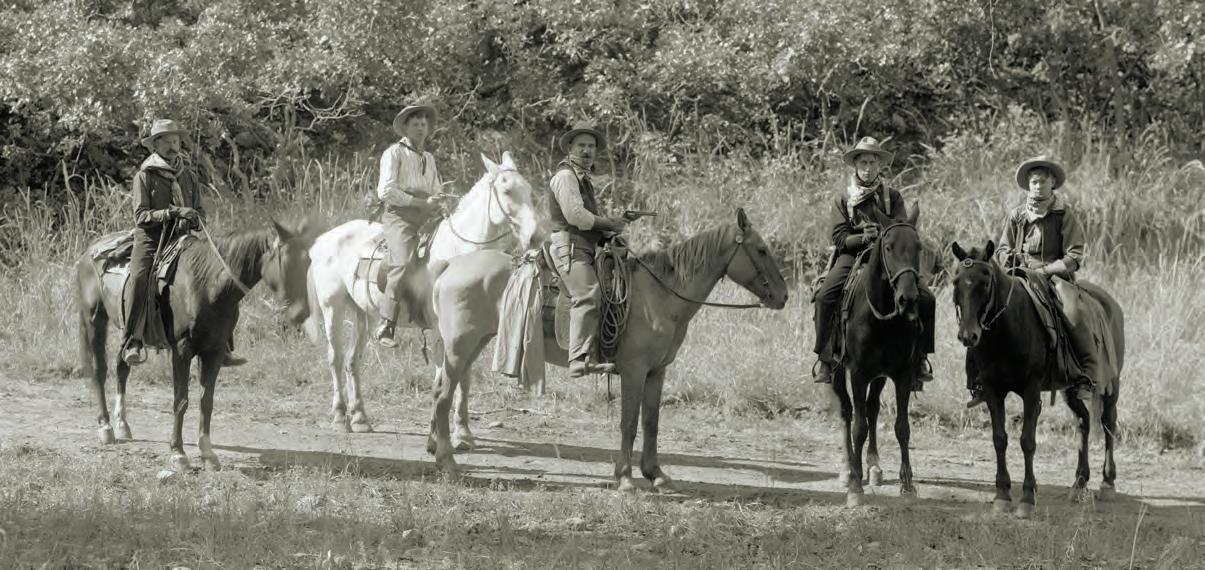
By 1902 Buckwalter had a number of travelogues under his belt. With those he began his association with Selig, suppling the enterprising motion picture executive with 19 short films for Polyscope’s 1902 catalog. With runtimes between 1 and 3 ½ minutes, “shorts” was certainly an apt label. There were no plots, just uninterrupted action. Such travelogues as Panoramic View of Hell Gate and Panorama of Ute Pass brought the CM passengers and Buckwalter interested clients.
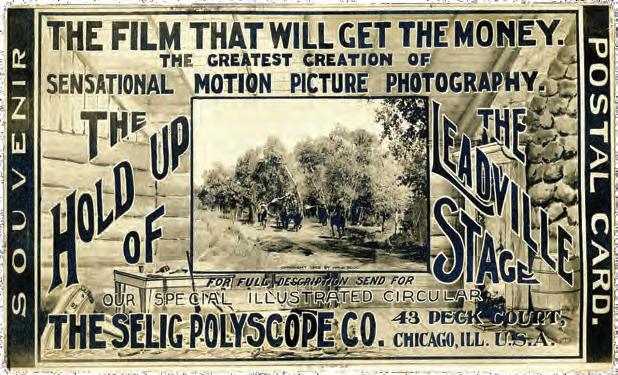
At least one of Buckwalter’s shorts never made it to the screen. In the spring of 1905, on invitation, he was filming President Theodore Roosevelt and party returning from a hunt in Glenwood Springs, Colo., when Gertrude Buell Dunn, a local correspondent for a Denver newspaper, rode up and “photobombed” the president. The attractive young woman was not only riding astride but also dressed in rather risqué fashion with rolled-up sleeves and ankles showing beneath her skirts. An incensed Roosevelt had administration officials confiscate Buckwalter’s reel and hundreds of snapshots taken by local residents, though The Denver Times managed to skirt the ban and publish a photo of Dunn.
Buckwalter was ever the innovator. For his part in a 1906 advertising blitz for the Santa Fe Railroad and city of Albuquerque the filmmaker placed his camera on the front of a trolley car that was to run the length of Railroad Street (present-day Central Avenue). To ensure he would capture sufficiently interesting action, Buckwalter pitched a story for the September 2 edition of The Albuquerque Morning Journal, asking “every man woman and child” to show up on Railroad Street at 11:30 the next morning “to show the rest of the United States what a real crowd looks like.” The chance at “stardom” brought the crowds, and Buckwalter’s resulting travelogue, Albuquerque, New Mexico, City Tour, captured the business district at its busy best.
Not all of Buckwalter’s films lacked a plot. Among his earliest was the 4-minute 1902 short The Girls in the Overalls , which dramatized a true
story about the orphaned son and seven daughters of Gunnison, Colo., rancher Regis Vidal and wife Albine. When their parents died, the siblings worked to keep the ranch going. The film, which captures the Vidal orphans at work and play, brought them public attention and offers of help. More action-packed Buckwalter titles included the aforementioned Hold Up of the Leadville Stage and Tracked by Bloodhounds; or, A Lynching at Cripple Creek (1904).
Buckwalter’s swan song in the film business was a documentary on the final phase of construction of the Panama Canal. Once out of motion pictures, he transformed himself into a pioneering radio broadcaster. Harry Buckwalter took his own final bow at age 62 on March 7, 1930. Soon after his death, wife Carrie Emmajean Fuller donated his collection of glass plate negatives to the since closed Colorado History Museum. Today almost all his films are lost to time, though Tracked by Bloodhounds is viewable on YouTube.
WILD WEST SPRING 2023 25 TOP: DENVER PUBLIC LIBRARY; RIGHT: MARGARET HERRICK LIBRARY DENVER PUBLIC LIBRARY
WIWP-230400-ENTERPRISE.indd 25 1/20/23 1:48 PM
Top: The action got a little too realistic on the set of Buckwalter’s 1904 Western The Hold Up of the Leadville Stage when extras hired to play highwaymen came under fire from trigger-happy tourists fully fooled by the mock robbery. Thankfully, they proved terrible shots.
Pranking the ‘Cowboy Artist’
GARY LYNN ROBERTS PAYS HOMAGE TO CHARLES M. RUSSELL IN CHARLIE AND THE PRANKSTERS
BY JOHNNY D. BOGGS
Ahandful of mischievous cowboys are enjoying a night on the town, setting off firecrackers beneath a packer’s horses outside a saloon, in Gary Lynn Roberts’ 36-by-50-inch oil on canvas Charlie and the Pranksters. Roberts describes the scene as “a night out, too much to drink and perhaps even a local rivalry—a group of young cowboys bringing a lot of excitement to town.”
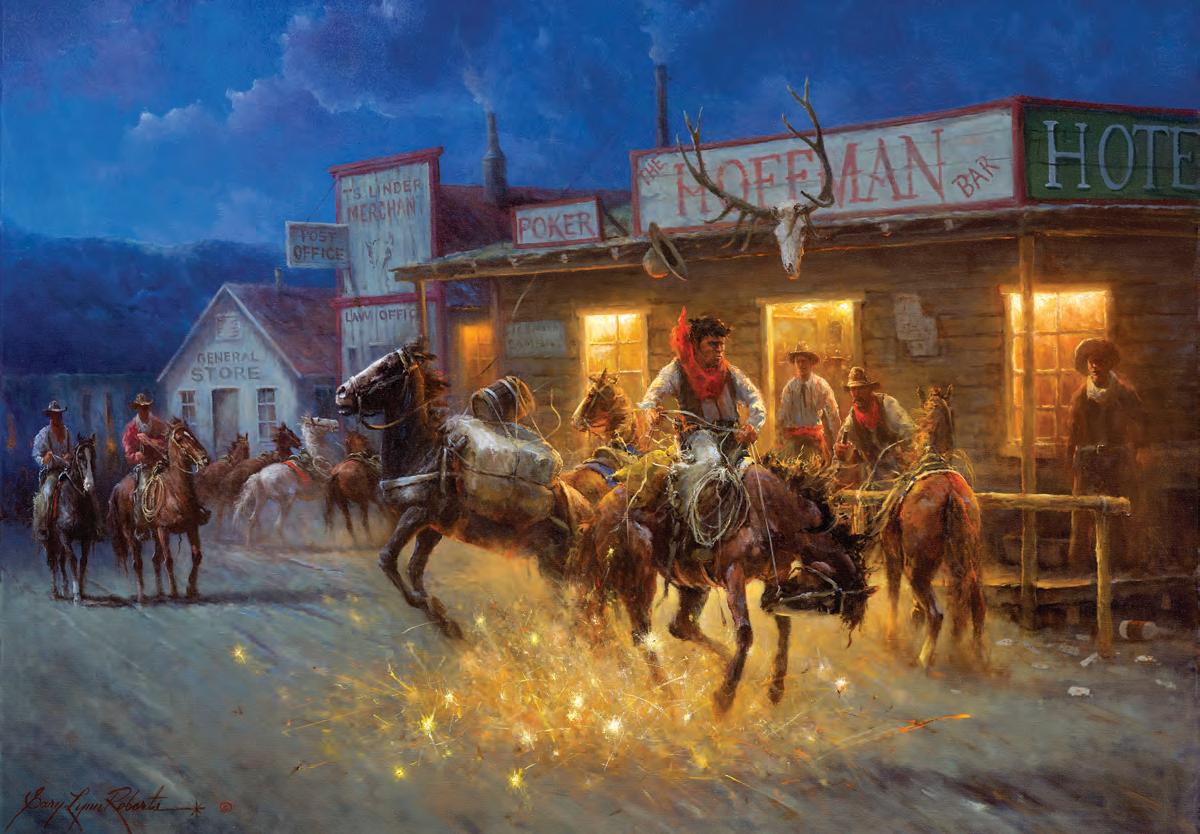
If the work appears to echo Charlie Russell’s iconic 1909 oil on canvas In Without Knocking which depicts a group of boisterous, gun-toting cowboys literally riding into a saloon—well, that was the artist’s intention. The
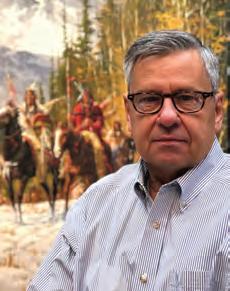
buildings are modeled after those in Russell’s painting, and the saloon in Roberts’ work is also named the Hoffman Bar.
“Charlie and the Pranksters depicts a scene as might have been told by Charlie himself,” says the artist, “being right in the middle of all the commotion.” Roberts rendered the painting for the C.M. Russell Museum in Great Falls, Montana, which sold the original in 2018 to an anonymous New York collector for $30,000. A native of Texas, Roberts [GaryLynnRoberts. com] lives and paints in the Bitterroot Valley of western Montana, where he moved in 2008 with wife Nancy and daughters
WILD WEST SPRING 2023 26 GARY LYNN ROBERTS, GARYLYNNROBERTS.COM (6)
Gary Lynn Roberts’ lively oil on canvas Charlie and the Pranksters echoes Charles M. Russell’s 1909 work In Without Knocking, depicting downtime hijinks on a street in the same fictional Montana cow town.
ART OF THE WEST
Gary Lynn Roberts
WIWP-230400-ARTOFTHEWEST.indd 26 1/20/23 1:50 PM
Mary and Anna. It’s perhaps no surprise he chose to pay tribute to Russell, though his career path began long before his move north.
“For as long as I can remember, all I ever wanted to do was be a painter,” Roberts says.
Throughout childhood he was steeped in art. His father, Joe Rader Roberts (1925–82), studied at the California School of Fine Arts in San Francisco, became a noted Western artist and was designated Texas State Artist in 1974–75. His mother, Nelda, was also a painter. Several of their portraits of Rangers hang in the Texas Ranger Hall of Fame & Museum in Waco.
“My dad was a great influence,” Roberts says. “We shared a strong passion for art. At a young age he instilled in me a strong work ethic. My father took art seriously and believed in learning the fundamentals first. For years he pounded that into me.
“At the age of 14 I got my start in the art business by painting signs and lettering windows and
trucks. My mother would drive me around town with my paint box to grocery and furniture stores, where I would paint the windows with weekly specials or holiday scenes.”
Roberts also won his first art award at age 14, at the Houston Livestock Show and Rodeo. But he wasn’t painting full time in those days. “Growing up in Texas, my life revolved around horses,” he says. While training horses and performing in rodeos, he was able to observe them firsthand, which later helped him depict their personalities on canvas.


Other talented artists also mentored Roberts. He received one-on-one training from G. Harvey (born Gerald Harvey Jones, 1933–2017), the American traditionalist whose works were collected by such notables as Lyndon B. Johnson and Margaret Thatcher, as well as A.D. Greer (1904–98), the Oklahoma Territory–born artist known for his Texas landscapes.

A blend of Realism and Impressionism, Roberts’ striking Western oils on canvas include (clockwise from top left) the playfully titled Where You Gonna Put Him? a question these hunters with heavy-laden pack animals will have to answer before bagging any more elk; Ruth 1:16, the referenced Scripture reading in part, “Where you go, I will go”; No Place to Ford (“I have witnessed the swell of the rivers,” Roberts explains of this spring scene); and A Crisp Morning, depicting the artist’s favorite season in a historical retrospective.
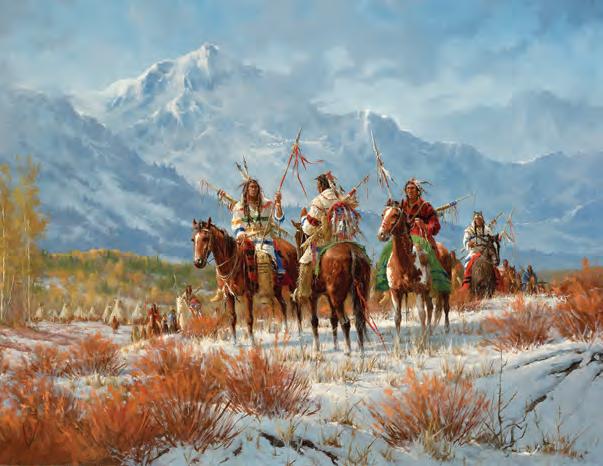
WILD WEST SPRING 2023 27 GARY LYNN ROBERTS, GARYLYNNROBERTS.COM (6)
WIWP-230400-ARTOFTHEWEST.indd 27 1/20/23 1:50 PM
“I have taken that knowledge and experience and molded it into my own style, a mixture of Realism and Impressionism,” Roberts says.
The artist follows no set routine when it comes to painting, and each work is different. “I follow my heart,” he says. “I paint what I am passionate about.”
When does he know a painting is ready?
“No one sees imperfections like an artist,” Roberts says. “There is always something that can be changed. Knowing when a painting is ready can
be difficult, because changing these imperfections can lead to overworking the painting.”
Roberts credits his Christian faith for his success. “My biggest blessing from God is my imagination,” he says.
Though he enjoyed his playful take on Russell’s work, Roberts claims no favorite artist, past or present, but appreciates a broad range of creative works. What’s his take on the future of Western art?
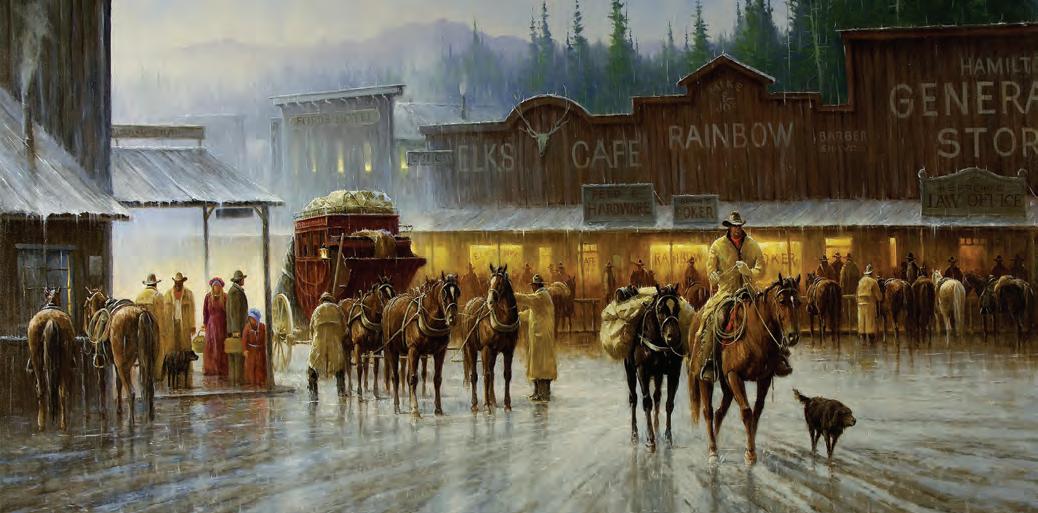
“I am optimistic,” he says. “It represents the history and heritage of America.”
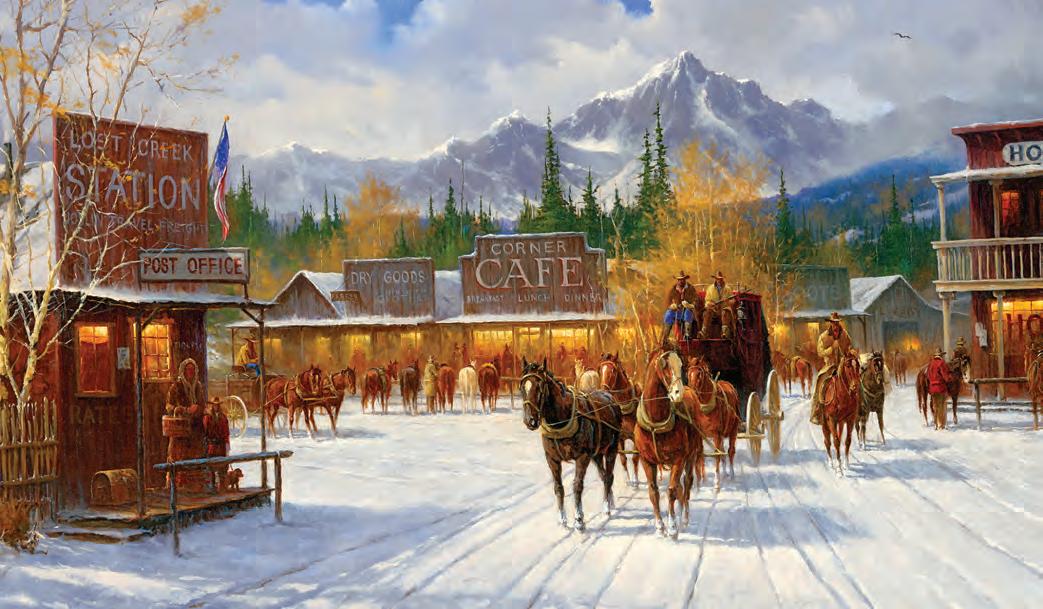
WILD WEST SPRING 2023 28
Top: In Home for the Holidays a woman and her daughter en route to visit family wait at a stage station across the street from glowing shops and services in a small frontier town.
GARY LYNN ROBERTS, GARYLYNNROBERTS.COM (2)
Above: Settlers from back East arrive by stage in town amid a storm in the hopefully titled New Beginnings.
WIWP-230400-ARTOFTHEWEST.indd 28 1/20/23 1:50 PM
TODAY IN HISTORY
JANUARY 30, 1835
ANDREW JACKSON SURVIVED AN ASSASSINATION ATEMPT WHILE ATTENDING A FUNERAL AT THE U.S. CAPITOL. UNEMPLOYED HOUSE PAINTER RICHARD LAWRENCE TWICE TOOK AIM AT JACKSON, MISFIRING BOTH TIMES. IN RESPONSE JACKSON THRASHED HIM WITH HIS CANE. THE CROWD, WHICH INCLUDED U.S. REPRESENTATIVE DAVID CROCKETT, SUBDUED LAWRENCE.
For more, visit HISTORYNET.COM/TODAY-IN-HISTORY
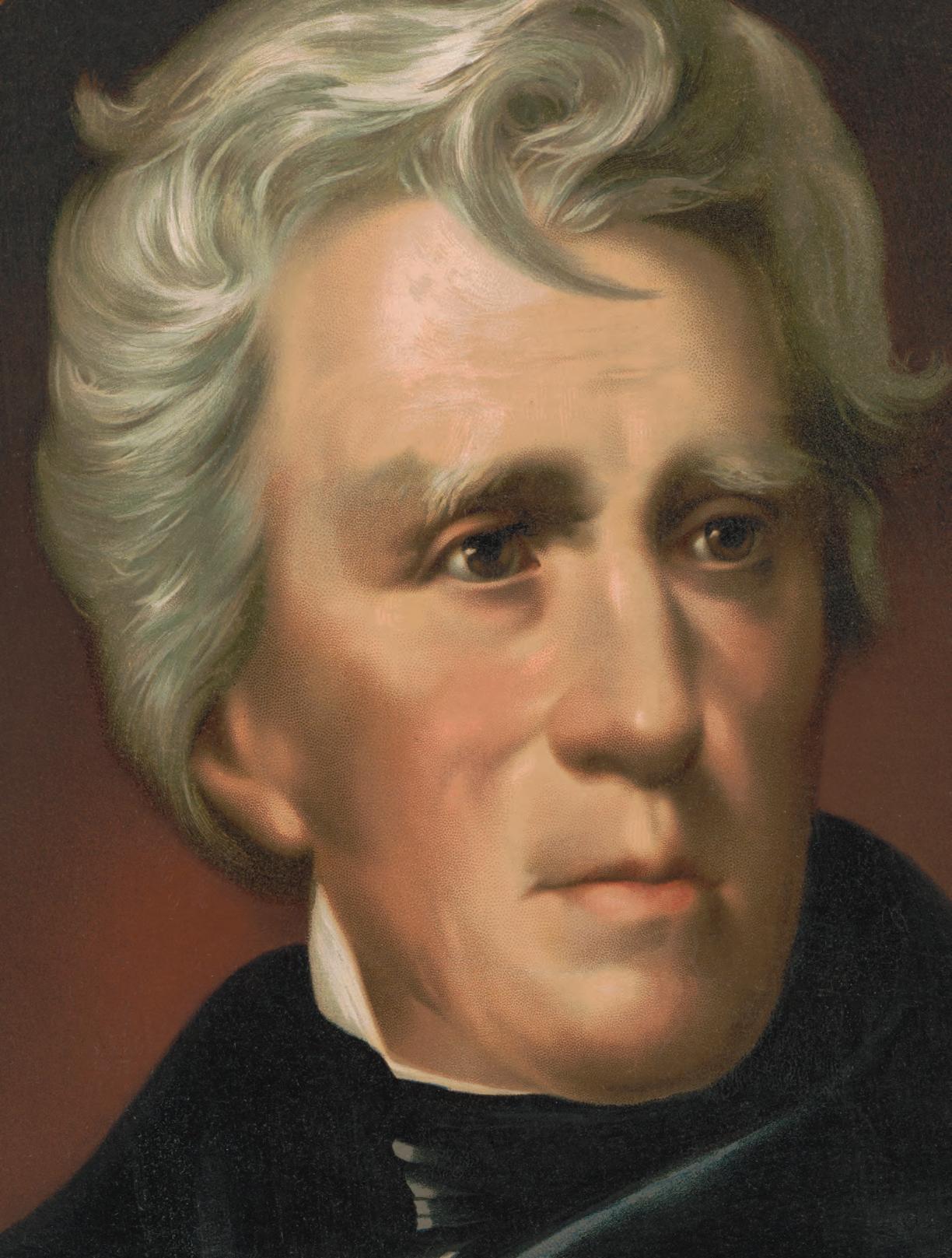
TODAY-JACKSON.indd 22 8/25/22 6:04 PM
INDIAN LIFE
Ride ’em, Cheyennes!
WHEN THE CHEYENNE ACQUIRED HORSES IN THE 18TH CENTURY, THE CONNECTION TRANSFORMED THE TRIBE’S WAY OF LIFE
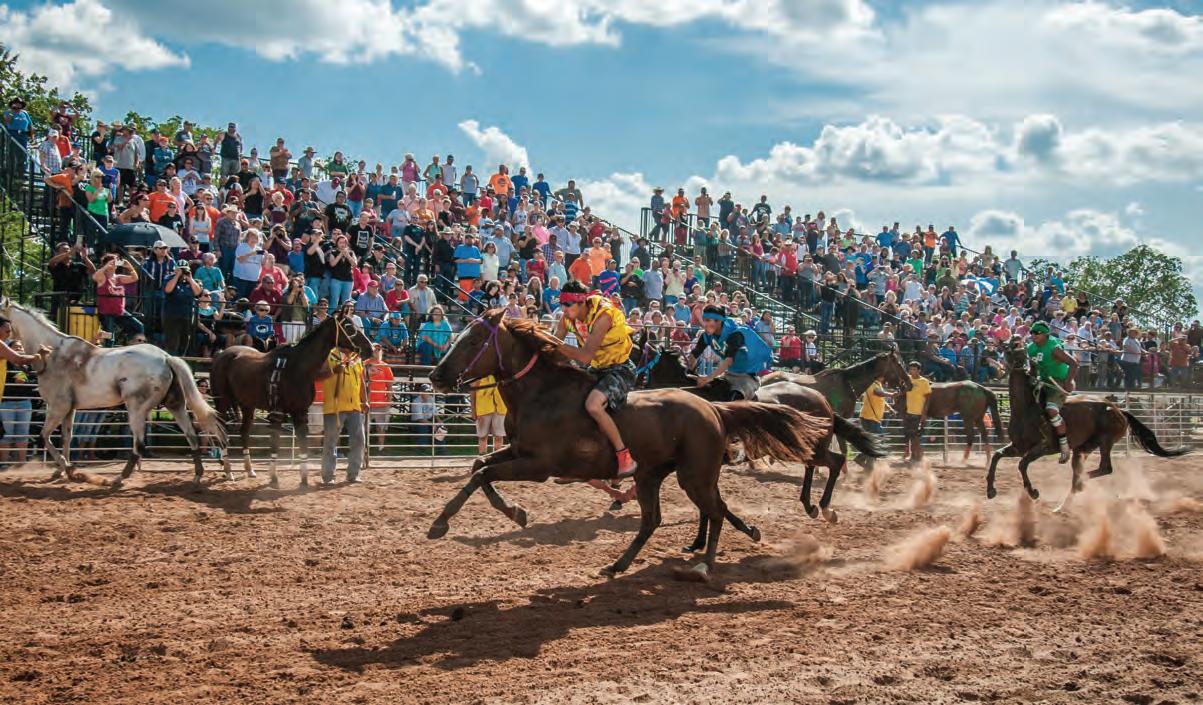 BY DAVID M c CORMICK
BY DAVID M c CORMICK
The Cheyenne hunter’s horse kicked clods of earth skyward as the warrior drove hard alongside the buffalo. Within seconds the experienced hunter let fly several well-placed arrows into the flanks of the charging beast. The shafts sank deep, piercing vital organs and sending the buffalo crashing to the ground. By the time the warrior circled back, his quarry’s labored breathing had ceased.
Such a scenario played out repeatedly on the Great Plains following the introduction of the horse into Cheyenne society, a happenstance that dramatically changed the tribe’s way of life.
When most people think of Plains Indians, what comes to mind are 19th century Cheyenne and Lakota warriors riding hard across open grasslands to bring down their enemies, either bluecoats or rival warriors. But for centuries prior neither tribe lived on the plains, nor were they particularly migratory. The Cheyennes originally hailed from the region between the Great Lakes and the Mississippi River headwaters in what today is Minnesota. In the late 1700s, while Anglos in the 13 colonies back East were immersed in a revolution to free themselves from British rule, the Cheyennes were experiencing
an upheaval of their own. Theirs was not a martial revolution, however, but one of transportation, sparked by the arrival of the horse on the northern Plains. The Cheyennes in turn are thought to have introduced the horse culture to Lakota bands, perhaps as early as 1730. The horses themselves traced their lineage to those brought to North America by 16th century Spanish explorers.
It isn’t exactly known how the sedentary Cheyenne first acquired horses—perhaps by roping free-roaming animals, in trade with other tribes or when fending off mounted enemies (for more on that subject see “Riding Toward a Blue Vision,” Indian Life, by Lance Nixon, in the February 2019 issue). Whatever the scenario, it came as a godsend to the Cheyennes, who had begun to migrate west under pressure from other tribes.
Prior to the introduction of the horse the Cheyenne and other tribes were limited in how and where they could hunt buffalo. The surest method was to drive the great herds en masse to their deaths over steep cliffs known as “buffalo jumps” (for more on that mode of hunting see “Jumping Buffalo,” by Todd J. Kristensen and Michael Donnelly, in the April 2018 issue). Once they were
WILD WEST SPRING 2023 30 LIBRARY OF CONGRESS MICHELLE LAVASQUE
WIWP-230400-INDIANLIFE.indd 30 1/20/23 1:51 PM
In 2016 Perkins, Okla., hosted the Ioway Invitational Indian Relay Race, a threehorse relay in which teams from around the country demonstrated riding skills passed down over generations. Northern Cheyenne Linwood Hisbadhorse, of Lame Deer, Mont., helped organize the event.
mounted, Cheyennes could achieve kills anywhere the buffalo roamed.

The average Cheyenne family of the plains numbered eight individuals and possessed 10 or more horses. While that may seem extraneous to a modern-day two-car family, the Cheyennes needed every mount in their remuda. One horse would carry the heavy buffalo hide lodge cover; another two would lug the lodgepoles; two others would serve as pack animals, carrying victuals and sundry camp items; three ridden by women would drag travois on which the children rode; and the final two were held in reserve as reliable buffalo-hunting horses. A family might also own draft horses or mules.
The Cheyennes bred light riding horses just over 14 hands high (roughly 4 ½ feet) at the withers, typically paints with patchwork coats of black or brown on white. The men and boys of the tribe reserved the swiftest stallions and geldings for the hunts. Horses were set out to graze, never hobbled or tethered. Riders forged exceptional bonds with their ponies, as a rule treating them kindly, though captured horses reportedly received no such consideration.
Cheyennes living between the Platte and Arkansas rivers plied an especially profitable trade in stolen Mexican and Spanish horses. They also bartered with white traders, exchanging buffalo hides for rifles and ammunition. But that relationship changed with the influx of settlers. Emigrant trails and trade routes interrupted the buffalo ranges, while an uptick in the killing of the woolly beasts by sport hunters and Indians trying to fill orders for Eastern buyers decimated the herds. Between 1872 and ’82 the measure of buffalo hides sent eastward reached 1 million a year, leaving the prairies littered with bleached bones. Infighting among tribes over the extents of hunting grounds and increasingly hostile interactions between Indians and interlopers raised tensions on the plains.
By the mid-1800s the Cheyennes were justly esteemed for their horsemanship. An experienced rider could remain astride his pony yet keep both hands free to let loose arrows or fire a carbine. Bands of such adept Cheyenne warriors raised havoc, attacking settlers’ cabins, railroad camps and passing emigrant wagon trains alike, leaving dead in their wake, running off cattle and horses, and absconding with newly acquired mounts and other plunder. When the outcry grew loud enough to bring the muscle of the U.S. Army into play, the Cheyenne raiders were usually able to elude their bluecoat attackers. A notable exception came on July 11, 1869, at Summit Springs, Colo., when a punitive expedition of 5th U.S. Cavalry troopers, with a young Bill Cody and 50 Pawnees serving as scouts, thundered into Chief Tall Bull’s village and dealt a blow to the Cheyennes. By then the tribe had sundered in two. The Northern Cheyennes were ultimately fated to reservation life in Montana Territory, while the Southern Cheyennes and their Southern Arapaho confederates were destined for confinement in Indian Territory (present-day Oklahoma). Before that happened, however, the Northern Cheyennes and their Lakota allies waged the Great Sioux War of 1876, culminating with the defeat of Lt. Col. George Armstrong’s 7th U.S. Cavalry command on Montana Territory’s Little Bighorn River that June 25–26.
Echoes of the horse culture reverberate in Cheyenne art. Tribal ledger art from the period prominently feature men and mounts alike dressed
and painted for warfare, though some works depict more peaceful pursuits, including one in which a mounted Cheyenne courts a woman.
In the end, neither their riding skills nor the great herds of ponies they accumulated could save the Cheyennes from the seemingly ceaseless influx of settlers. The nomadic lifestyle made possible by the horse reverted to a pedestrian one lived within the confines of the reservations.
The Cheyennes’ love affair with the horse did not end there, however. Right up till present tribal members have displayed their horsemanship in fairs, rodeos and the like. Wallace Bearchum, tribal services director for the Northern Cheyenne, points to several annual events that center on equine competition, including the Fourth of July Rodeo, in Lame Deer, Mont.; the Little Bighorn Memorial Ride, near that southeastern Montana battlefield; the Cody Stampede; and the World Championship Indian Relay in Sheridan, Wyo. In 2016 Linwood Hisbadhorse, a Northern Cheyenne from Lame Deer, helped coordinate the inaugural Ioway Invitational Indian Relay Race, in Perkins, Okla., and his team remains among the most celebrated Indian relay teams in the country. Seems natural, as the champion rider is simply keeping up a time-honored tribal tradition.
WILD WEST SPRING 2023 31 LIBRARY OF CONGRESS MICHELLE LAVASQUE
WIWP-230400-INDIANLIFE.indd 31 1/20/23 1:51 PM
In 1905 Edward S. Curtis captured this striking image of a warbonneted Cheyenne chief pausing to rest his mount along Montana’s Rosebud Creek.
LILLY of the Field
ACCOMPANIED BY HIS PACK OF DEVOTED HOUNDS, BIG-GAME HUNTER BEN LILLY GUIDED FAMOUS CLIENTS AND COLLECTED BOUNTIES ON APEX PREDATORS
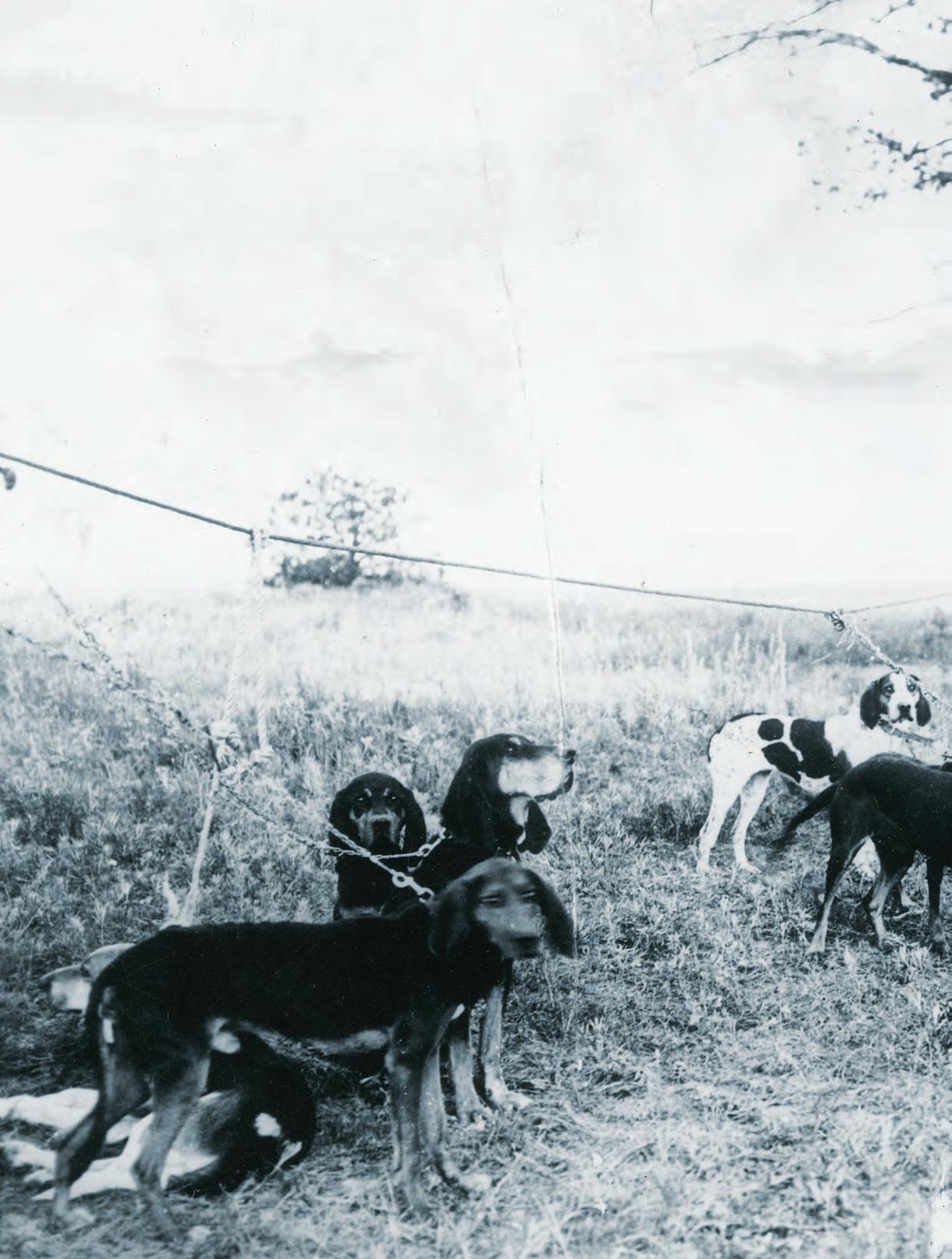 BY AARON ROBERT WOODARD
BY AARON ROBERT WOODARD
WIWP-230400-LILLY.indd 32 1/20/23 1:59 PM
Release the Hounds!
Ben Lilly, who was in his mid-60s when he posed with his hunting dogs here in 1920, doted on his trained hounds. If he wasn’t able to feed them, for example, he too would refrain from eating. But they, like their owner, lived hardscrabble lives.
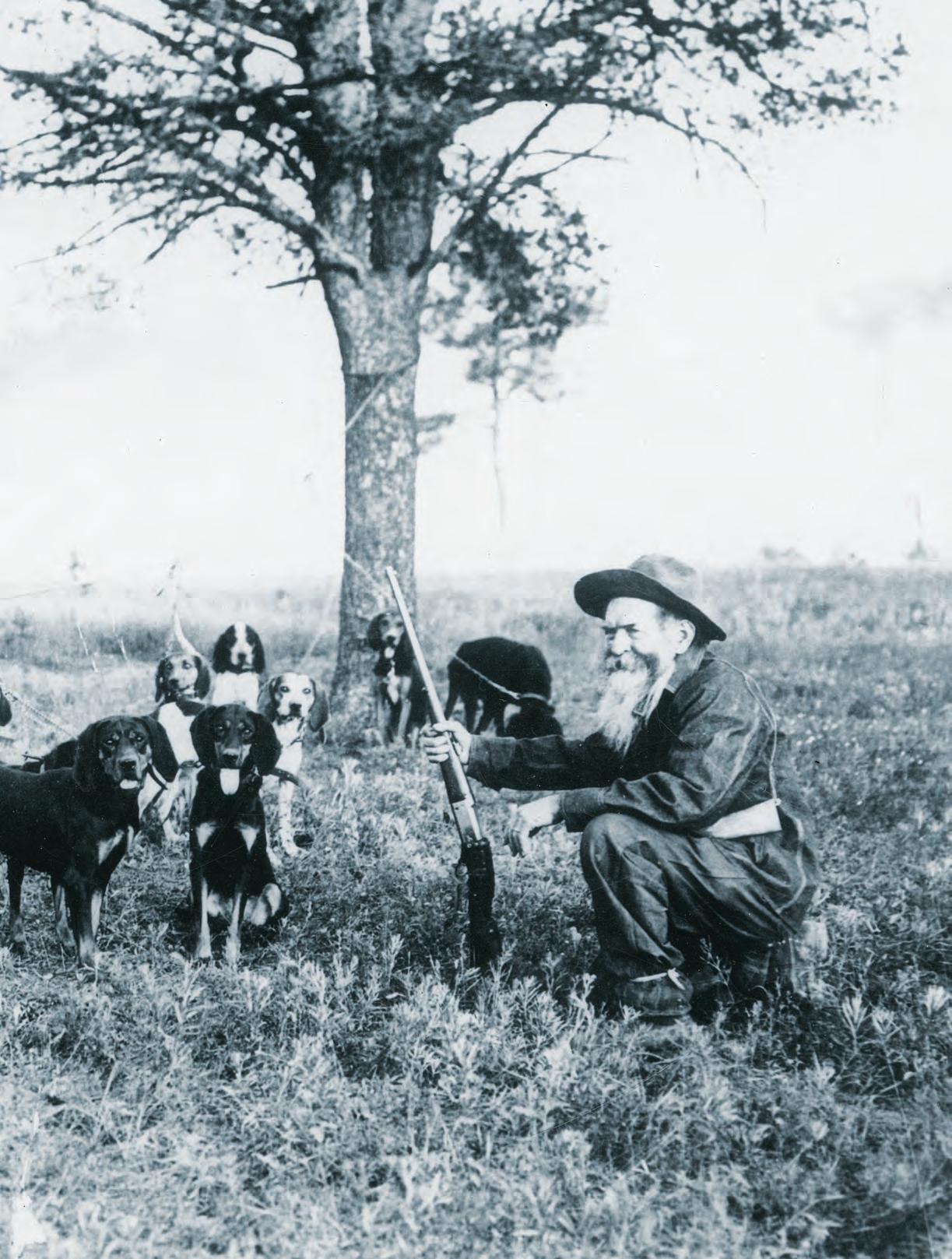
WILD WEST SPRING 2023 33
WIWP-230400-LILLY.indd 33 1/20/23 2:00 PM
In October 1907 U.S. President Theodore Roosevelt set out on a hunting trip in the northern Louisiana canebrake country near Tensas Bayou. There was nothing particularly remarkable about the president’s love of “manly sport” with rifle. He was among the most celebrated hunters in North America. Local politicians and press reporters vied with one another for the opportunity to meet and accompany the nation’s chief executive on his outdoor excursions. One member of the hunting party, however, was quite remarkable. Roosevelt’s handlers had specifically sent word they wanted the services of a legendary big-game hunter known for his personal idiosyncrasies as much as for his peerless tracking and hunting abilities.
In appearance the man looked somewhere between 30 and 40 years old, though in fact he was over 50. A long beard covered the lower half of his face, and his luminous but sorrowful blue eyes coolly appraised all wildlife sign in his path. In an article about the hunt Roosevelt wrote for the newspapers, he shared this vivid description of his tireless guide:
Ben Lilley [sic], the hunter, [was] a spare, fullbearded man with mild, gentle blue eyes and a frame of steel and whipcord. I never met any other man so indifferent to fatigue and hardship. He equaled Cooper’s Deerslayer in woodcraft, in hardi hood, in simplicity—and also in loquacity. The morn ing he joined us in camp, he had come on foot through thick woods, followed by his two dogs, and had neither eaten nor drunk for 24 hours; for he did not like to drink the swamp water. It had rained hard throughout the night, and he had no shelter, no rubber coat, nothing but the clothes he was wearing, and the ground was too wet for him to lie on; so he perched in a crooked tree in the beating rain, much as if he had been a wild turkey. But he was not in the least tired when he struck camp; and, though he slept an hour after breakfast, it was chiefly because he had nothing else to do, inasmuch as it was Sunday, on which day he never hunted nor labored. He could run through the woods like a buck, was far more enduring and quite as indifferent to weather, though he was over 50 years old. He had trapped and hunted throughout almost all the half century of his life, and
Guiding the Hunter in Chief
Among Lilly’s celebrated clients was President Theodore Roosevelt, for whom the hardy hunter tracked bear in Louisiana canebrake country in 1907. It took two weeks, but Teddy got his bear.
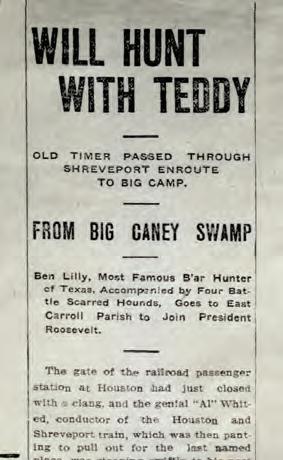
on trail of game he was as sure as his own hounds. His observations on wild creatures were singularly close and accurate. He was particularly fond of the chase of the bear, which he followed by himself with one or two dogs; often he would be on the trail of his quarry for days at a time, lying down to sleep wherever night overtook him; and he had killed over 120 bears.
The man’s name was Ben Lilly, and he may have been the greatest big-game hunter ever to have lived in North America.
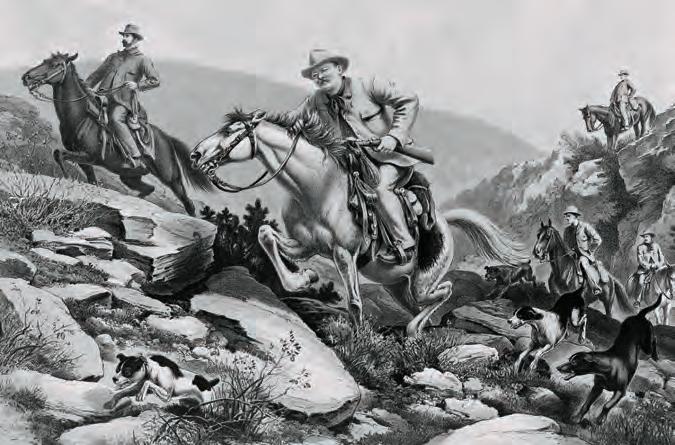
According to biographer J. Frank Dobie, Lilly was born on New Year’s Eve 1856 in Wilcox County, Ala., of Scottish ancestry. At a time when education for females was almost unheard of, Lilly’s mother was a graduate of Mississippi’s Nicholson Female College and later taught astronomy there as a faculty member. Lilly’s six siblings included a college professor and a pipe organist. Ben gravitated toward the inclinations of his male ancestors, who had fought in the American Revolutionary War and the War of 1812 and were skilled blacksmiths. Lilly himself gained renown as an expert knifesmith, forging and tempering his own blades (his favorite liquid for cooling steel was panther oil, which he claimed made his blades stronger). Despite his mother’s best efforts to give him a proper education, Lilly drifted away from the military academy in Jackson, Miss., to which he’d been sent and lost touch with his family for a time. Ben’s Uncle Vernon Lilly eventually stumbled across his truant nephew running a blacksmith shop in Memphis, Tenn. He convinced Ben to move in with him on his cotton farm in Morehouse Parish, La., promising that if the young man did so and helped with the chores, he would inherit everything on the uncle’s death. Within a year Uncle Vernon kept his promise.
The Lilly farm centered on 300 acres of fenced cropland, outside of which sprawled great swaths of untilled swamp and canebrake. Ben never showed any particular enthusiasm for cotton farming, and the surrounding wilderness increasingly drew him away from his work. He quickly mastered the geography, demonstrating a unique ability to find his way through the most tangled and seemingly inacces-
WILD WEST SPRING 2023 34 PREVIOUS SPREAD: SILVER CITY MUSEUM, N.M.; THIS PAGE, TOP: BETTMANN (GETTY IMAGES); LEFT: NEWSPAPERS.COM SIR JOHN SEEREY-LESTER, WWW.SEEREY-LESTER.COM
WIWP-230400-LILLY.indd 34 1/20/23 2:00 PM
sible areas. Acquaintances from that period of his life shared many stories of the young man’s nascent trail-finding and tracking abilities.
Lilly married in 1880, but the union was strained from the beginning. The death of the couple’s young son ended any hope of marital bliss, and they split up. Ben remarried in 1891, but by then he’d begun to spend more and more time away from home, penetrating ever deeper into the wild woods and swamps and seldom returning home unless to reprovision or repair gear. He kept his family—which grew to include two daughters and a son—fed and sheltered with profits from cattle trading, but he refused to be tied to a particular place. He resolved always to be available if the urge to hunt came over him, and he would often stop whatever he might be engaged in at the time to answer the call. Hunting, to him, was almost a religious vocation.
Unlike contemporary bear hunter turned bear conservationist William H. Wright, Lilly never seemed to lose his appetite for hunting and killing bears, mountain lions and other apex predators. While such a position runs counter to present-day politically correct sensibilities regarding game and trophy hunting, Lilly couldn’t be bothered. For one, the opinions others held of him didn’t keep him up at night. For another, he never saw wild animals in any other light than as a challenge for his tracking abilities or an enemy to be exterminated. He was, for better or worse, a man of his time.
Lilly was also a devout Christian who would never work on a Sunday. If the Sabbath arrived in
the midst of a hunt, he would cease all activity and make camp wherever he was. On such occasions, if he lacked fresh meat, Lilly would reach into his provisions bag and pull out an ear of corn for roasting. Such simple fare comprised his diet for weeks at a time. He was also a noted teetotaler, did not smoke and would not even drink coffee, presumably because of the caffeine. The hunter always had a Bible at hand and was well versed in Scripture.
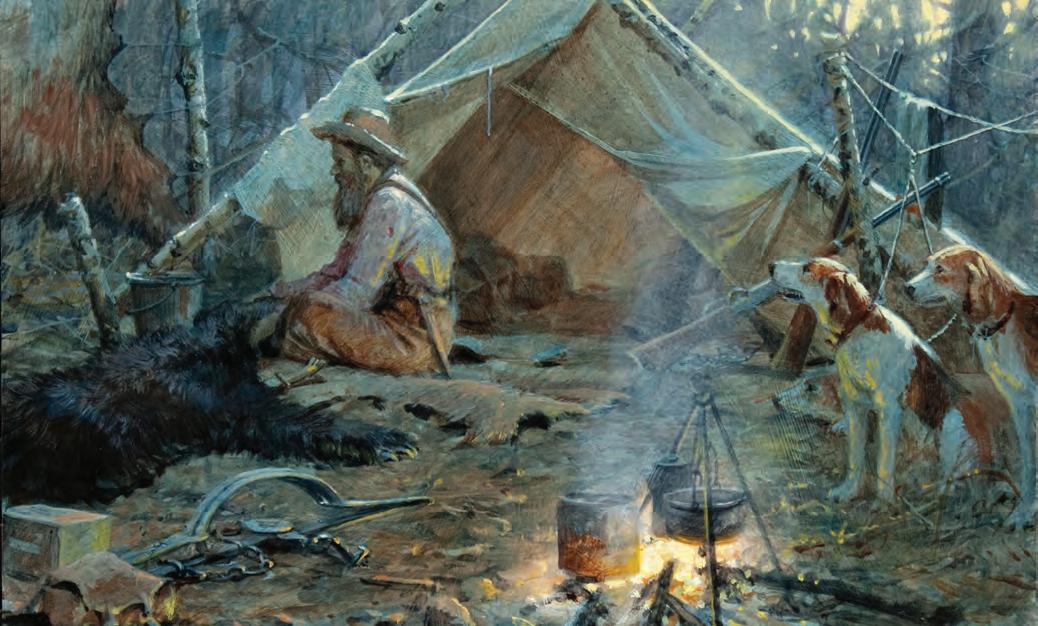
Various witnesses attested to Lilly’s strict adherence to his beliefs. New Mexico rancher Bela Birmingham recalled one especially memorable encounter with the peripatetic hunter. One brisk fall evening while moving horses between pastures in preparation for winter, Birmingham and his brother-in-law made camp, built a fire and set about preparing dinner. They became aware of Lilly’s presence when his pack of hounds sounded close by, apparently hot on the trail of game. Lilly soon hove into view. He was tracking a mountain lion, the hunter explained, but since it was late on a Saturday evening, he would postpone the hunt till Monday, as he never hunted on Sundays.
The ranchers were well supplied with beef, and after Lilly volunteered he hadn’t eaten in two days, they made him supper. He promptly wolfed down three big steaks and six or seven sourdough biscuits. Rising early on Sunday morning, the scruffy hunter cut a hole in a nearby ice-covered pond and jumped in wearing his long underwear—the outdoorsman’s version of a bath.
Bright and early Monday morning, Lilly resumed his pursuit of the mountain lion. By the time the ranchers caught up with him later that day, the hunter had bagged two large lions, including the one he’d been after on Saturday. When Birmingham mentioned having lost his watch somewhere along the trail that morning, Lilly offered to backtrack, locate the missing timepiece and bring it by the ranch house that evening. Birmingham’s route home was long and circuitous. By the time he arrived, he found Lilly and his brother-in-law eating dinner and his watch waiting on the table. Lilly said he’d found it a few feet from the tracks of Birmingham’s horse soon after
WILD WEST SPRING 2023 35 PREVIOUS SPREAD: SILVER CITY MUSEUM, N.M.; THIS PAGE, TOP: BETTMANN (GETTY IMAGES); LEFT: NEWSPAPERS.COM SIR JOHN SEEREY-LESTER, WWW.SEEREY-LESTER.COM
WIWP-230400-LILLY.indd 35 1/20/23 2:00 PM
The Bear-Slayer John Seerey-Lester’s acrylic on panel painting captures Lilly in a quiet moment in camp as he skins a black bear while two of his hounds hope for scraps. Lilly’s “comforts” included a length of canvas and a blanket.
setting back. His remarkable 48-hour display of hunting, discipline, tracking and route-finding duly impressed both ranchers.
Throughout his eccentric life Lilly honed his knifesmithing skills, earning repute as much for the creations of the forge as for the trophies of the hunt. A good knife remains an important tool when hunting in the oft tangled wilderness where big-game animals dwell. According to biographer Dobie, Lilly took pleasure in presenting well-made knives to friends or people he admired. One peculiarity of his knives was that both sides had a sharpened edge. Lilly had come to close grips with bears and believed it of utmost importance that a knife be able to cut in any direction. He also corkscrewed the blades of some knives for easy removal.
The hunter owed his life to one such specially crafted knife. In April 1913 in Arizona’s snowbound White Mountains 56-year-old Lilly ran across sign of a large grizzly. Setting out with a rifle, light gear, no food and a hound tied off on his waist, he tracked the bear for three days, managing to hit it several times with distant rifle shots, but unable to make a killing shot. He continued to follow its tracks and blood trail in deep snow until the bear suddenly appeared, almost ending Lilly’s career on the spot. “Then, right in front of my body, 15 feet away, the bear popped out, charging me,” the hunter recalled. “My first shot hit him center in the breast; that checked him. My second shot was under the eye, about 3 feet away. He fell against my side. I was bogged in snow waist deep.
I couldn’t see the bear’s head. He seemed to be drawing deep breaths. I fired another shot for his heart. I was wearing a knife 18 inches long. I drove it for the heart. That finished him.”
In addition to his famed service as a guide for President Roosevelt, Lilly made headlines guiding a 1921 bear-hunting excursion for Oklahoma oil tycoon W.H. McFadden. McFadden spared no expense for his elaborate, monthslong hunt through the Rocky Mountains from Mexico to Canada. Regardless, Lilly avoided the well-equipped camp and its accompanying creature comforts, preferring his usual ascetic ways. He tried his best to corner a trophy grizzly for his client to shoot, but McFadden’s frequent absences from the party for business reasons sidelined him from the pursuit at several key junctures. The bear ultimately went into hibernation, Lilly left the party, and McFadden came up empty. The failed excursion represents perhaps the only bear that ever escaped the relentless efforts of the master tracker and hunter. Not that Lilly was to blame; McFadden was simply not as dedicated to the pursuit as his 64-year-old guide. Lilly seemed to find his greatest personal satisfaction hunting down and killing apex predators (bears, wolves, mountain lions, etc.) on behalf of various ranchers in the Southwest and, later, for the U.S. Biological Survey and U.S. Forest Service. Western ranchers and stock growers had complained to the U.S. government for decades about the losses such predators inflicted on their cattle herds and sheep flocks. The government responded by offering generous bounties for the skulls and hides of these animals. State and local officials and private ranchers often supplemented such bounties with their own monetary awards. Lilly, of course, wasn’t the only hunter to exploit such opportunities to cash in on wildlife. In fact, around the same time frame two of this writer’s great-uncles were credited with having almost single-handedly cleared out the wolves and coyotes from Monona and Woodbury counties in far western Iowa.
The money Lilly earned by turning in skulls and hides supplemented the fixed salary the government paid him for his services. During his time as a hunter in the federal service he killed 55 mountain lions and a dozen bears—at least those were the ones he reported to his supervisors. He no doubt killed others for the privately offered rewards from Western ranchers. Some sources estimate Lilly killed as many as 1,000 mountain lions over his lifetime.
While the hunt itself was the driving passion and purpose of Lilly’s chosen career, the physical challenges he encountered and overcame were also an important part of his pathos. He seemed to relish reducing himself almost to the level of the animals he pursued. Lilly never carried a tent or sleeping bag, preferring to sleep in the open beneath little more than a length of canvas and a blanket. When the mercury dropped, he would employ various tried-and-true mountain man methods to build a fire, often siting them beside large rocks to better reflect the heat and keep him warm. On some occasions he would build a fire, let it burn down and then scoop out a sleeping berth where the coals had rested. On especially cold nights he would make his bed between two fires. He is not known to have sought treatment for or complained of damage from exposure or frostbite.
Lilly is known to have carried two lever-action rifles—a Winchester .30-30 for hunting mountain lions and smaller game, and a .33 Winchester

WILD WEST SPRING 2023 36 TOP: BETTMANN (GETTY IMAGES); INSET: OKLAHOMA HALL OF FAME SILVER CITY MUSEUM, N.M.
Panther Steaks and Oil Lilly savored mountain lion steaks and used oil rendered from the meat to cool the blades of homemade knives. He spent his waning days of life hallucinating about panthers.
WIWP-230400-LILLY.indd 36 1/20/23 2:00 PM
He seemed to relish reducing himself almost to the level of the animals he pursued
for downing bears. True to form, the old hunter carried his shells in a tobacco sack. On his back he bore a large pack containing flour and other provisions, a knife, an ax and his bedding. He relied on his hunting skills to supply him with meat. Like the mountain men of old, Lilly savored “panther steak” and bear meat.
Lilly was also famed for his pack of devoted hunting hounds, which he trained to track and corner bears and mountain lions. Needless to say, he wouldn’t win the approval of present-day dog lovers. The hunter wouldn’t tolerate a hound that failed to demonstrate the killer instinct with which he himself was endowed. If one failed to meet his standards, Lilly would bring the offender before the other members of the pack, explain the dog’s failings and then kill the errant hound with a gunshot or club.

On the other hand, he was extremely loyal to the dogs that met his high standards. If he couldn’t feed his hounds, he would refrain from eating, and he always fed them from the kills he made with their help. The dogs would often tree lions and corner bears before Lilly delivered the coup de grace with rifle or knife. If they got far ahead of Lilly, they would surround their quarry and then work in relays to get nourishment without leaving the bear or mountain lion unguarded. Lilly took note of those that performed especially well, as did other hunters, who clamored for the pick of the litter of Lilly’s best hounds. He usually struck a hard bargain. Once when offered $300 for a hound descended from a particularly excellent tracker, Lilly would accept no less than $1,000.
Hunting aside, Lilly believed everyone should spend regular time in the great outdoors. “Every man and woman ought to get out and be alone with the elements every day, even if only for five minutes,” he said. “I can’t think at all except when I am out.”
As Lilly advanced in years, the tremendous physical exertions his hunts required began to tell on his previously iron constitution. Though he’d seldom been sick in his youth, in his later years he suffered pneumonia and stomach troubles, the latter brought on, warned a doctor, by
overreliance on a mostly meat diet. Lilly’s mental acuity also went into decline. Among other signs, he would while away his time drawing cartoonlike pictures of bears and other game and then clumsily attempt to paint the pictures with watercolors. A rancher friend finally managed to persuade Lilly to room with him, but it soon became apparent the waning hunter needed fulltime care. Lilly’s daughters were still living, as was a sister, but they couldn’t or wouldn’t take him in. Instead, he was sent to a county farm for indigent residents. Thus penned up, Lilly deteriorated rapidly, eventually hallucinating about hunting mountain lions and bears while wasting away in bed. He died of natural causes just shy of his 80th birthday on Dec. 17, 1936, near Silver City, N.M., and is buried in that city’s Memory Lane Cemetery. In many ways Lilly was the last of that intrepid breed of American frontiersmen who helped tame the West, though he’d remained wild as long as he could. Such independence was an enduring part of his legacy.
Aaron Robert Woodard, who writes out of Hartsford, S.D., teaches history and government at Purdue University Global and American history at Bellevue University. A frequent contributor to Wild West, he wrote the feature “The Scout Who Straddled Two Worlds,” about half blood Johnnie Bruguier, for the Winter 2023 issue. For further reading he recommends Ben Lilly’s Tales of Bear, Lions and Hounds, edited by Neil B. Carmony, and The Ben Lilly Legend, by J. Frank Dobie.

WILD WEST SPRING 2023 37 TOP: BETTMANN (GETTY IMAGES); INSET: OKLAHOMA HALL OF FAME SILVER CITY MUSEUM, N.M.
WIWP-230400-LILLY.indd 37 1/20/23 2:01 PM
When I’m 64 It was at that impressive age Lilly guided a monthslong bear hunt for Oklahoma oil executive W.H. McFadden (inset left). Though the party covered much of the Rocky Mountain crest from Mexico to Canada, a distracted McFadden came up empty. There was no showdown like that depicted in this period engraving.
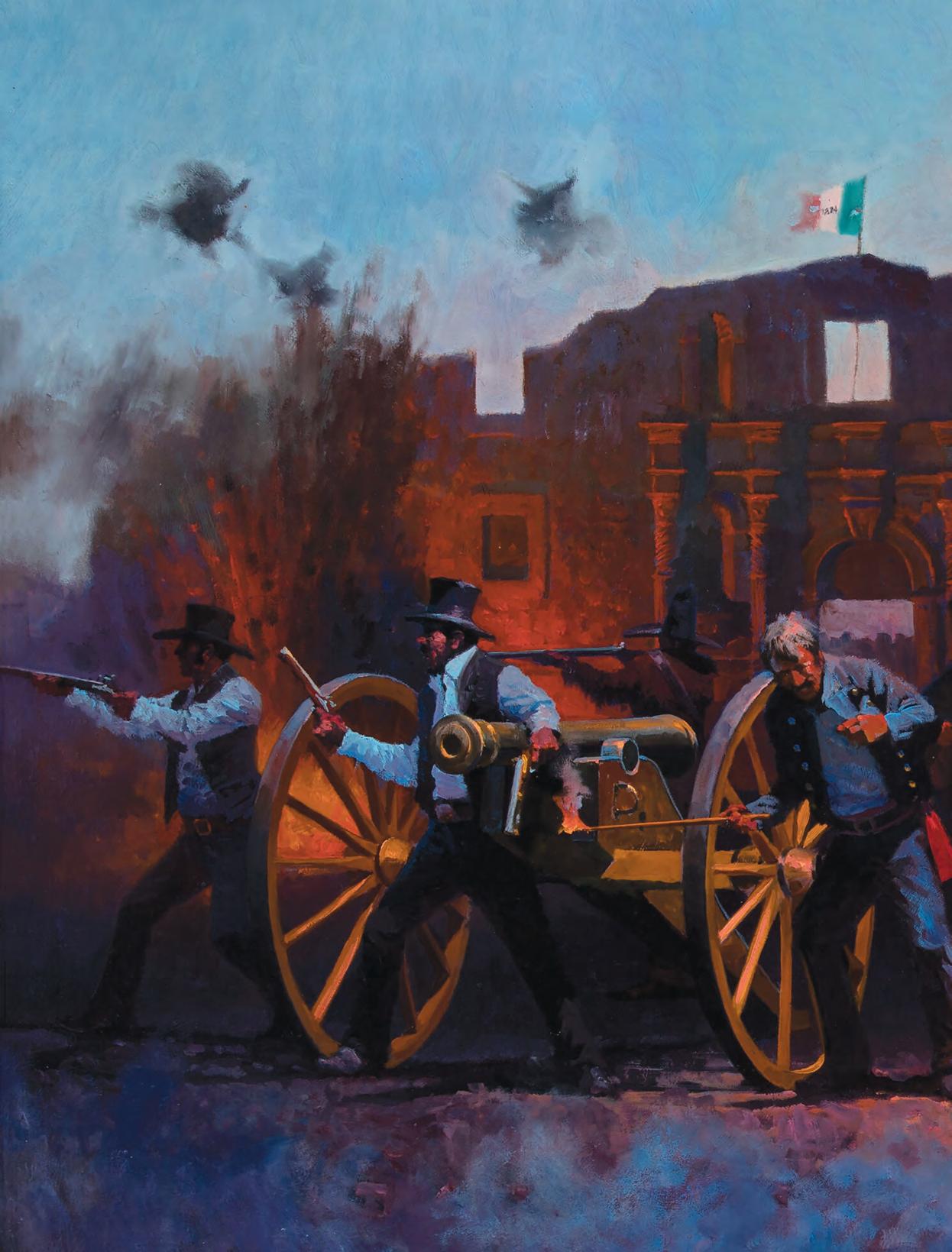
38 WILD WEST SPRING 2023 WIWP-230400-ALAMO.indd 38 1/26/23 9:56 AM
The Forgettable Alamo Frauds
WERE ‘UNCLE JIMMY’ CANNON AND LOUIS SCHILLING HARMLESS FIBBERS OR CALLOUS CON MEN TRAMPLING ON THE REMEMBRANCE OF FALLEN HEROES?
BY RON J. JACKSON JR.
The Battle of the Alamo
Dan Mieduch’s painting has that sense of the legendary that permeates most such depictions of the March 6, 1836, last stand at the San Antonio mission. Unfortunately, decades later charlatans emerged to relate spurious claims of having survived the clash.
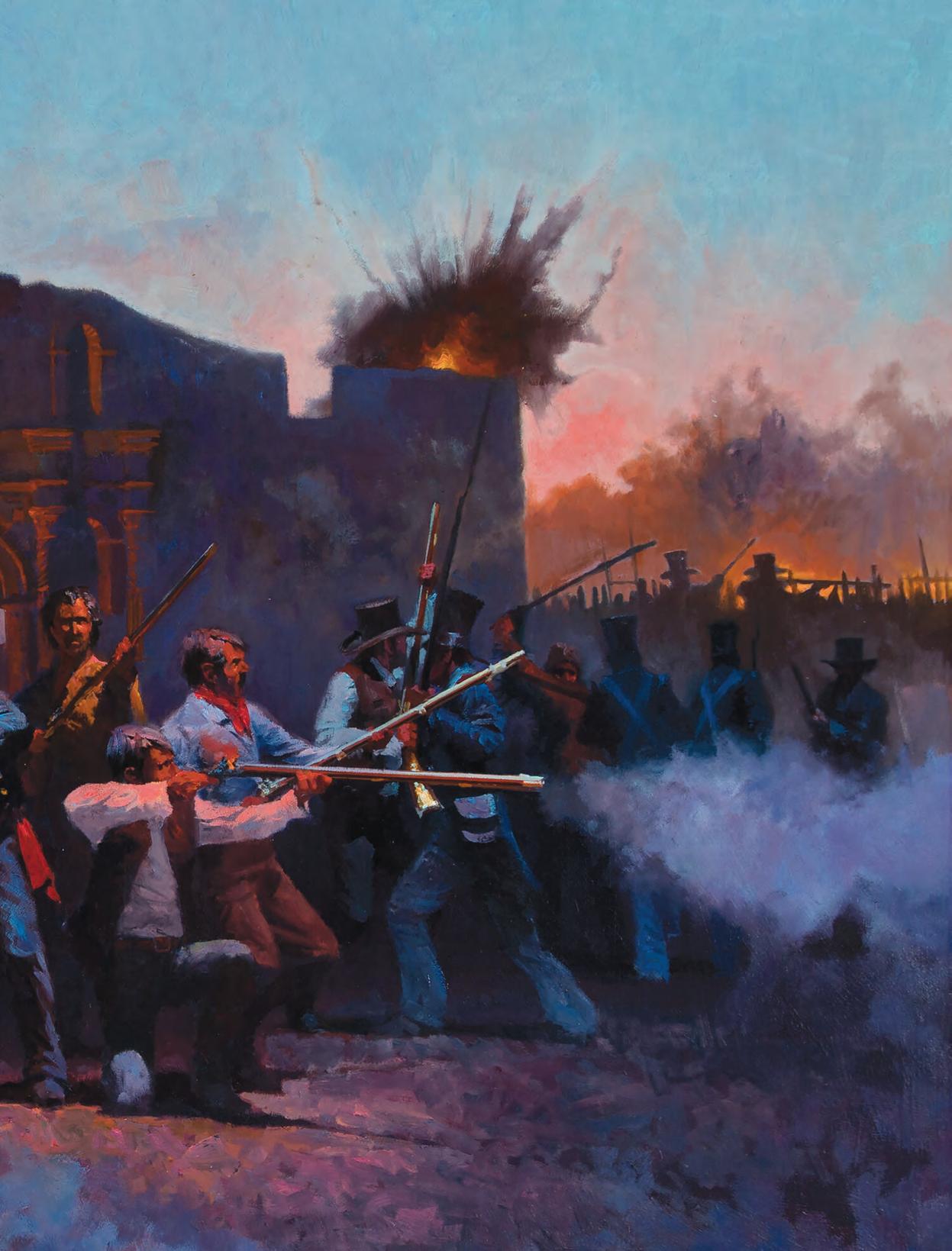
MIEDUCH WIWP-230400-ALAMO.indd 39 1/26/23 9:56 AM
DAN
Frontier relics William James Cannon and Louis C. Schilling shared much in common. Each roamed the American West, attracted or sought the attention of newspaper reporters, loved to talk, had a shadowy past, had a hand in killing at least once as a private citizen and claimed the distinction of being an Alamo survivor.
Cannon and Schilling shared one more thing in common: Both were prolific liars.
Cannon, who embraced the down-home moniker “Uncle Jimmy,” made his first known claim to have survived the Battle of the Alamo (Feb. 23–March 6, 1836) in the summer of 1885 in a letter to Texas Secretary of State Joseph Wilson Baines (the maternal grandfather of future president Lyndon Baines Johnson). Presumably seeking a pension or some other restitution for his imagined service in San Antonio, Cannon reportedly told the secretary he could “present proofs” to establish his claim, prompting one Texas reporter to declare, “If it turns out to be a fact, it will be a historical sensation, as it has never been believed any male escaped that awful massacre of patriots on March 6, 1836.”
The writer likely meant any adult male Alamo defender, setting aside the disputed survival story of Mexican soldier turned Texan revolutionary Brigido Guerrero (see sidebar, P. 42).
More than a dozen women and children, as well as at least three adult slaves, survived the final assault on the Alamo compound. Among the noncombatants who escaped death that day was Juana Navarro Alsbury, along with her 11-month-old son, Alejo Perez Jr.—the youngest survivor. In 1857 the Texas Legislature granted Alsbury a pension for her service at the Alamo as a nurse to Colonel Jim Bowie.
A few days after Cannon’s “survival story” hit newsstands in 1885, Alsbury refuted his claim in a San Antonio newspaper. Alas, no one seemed to listen, and she died at her son’s home three years later, on July 23, 1888. By then Cannon’s fictional accounts of life on the frontier had stretched all the way to Washington, D.C., where that October at the National Hotel the “Child of the Alamo” held court to anyone who would listen. A Washington Post correspondent described an old man whose long white hair draped an aged face beneath a broad sombrero—“a present from General [and U.S. Minister to Mexico Edward S.] Bragg,” Cannon claimed. “He has led a most eventful life, which would furnish the foundations of a dozen
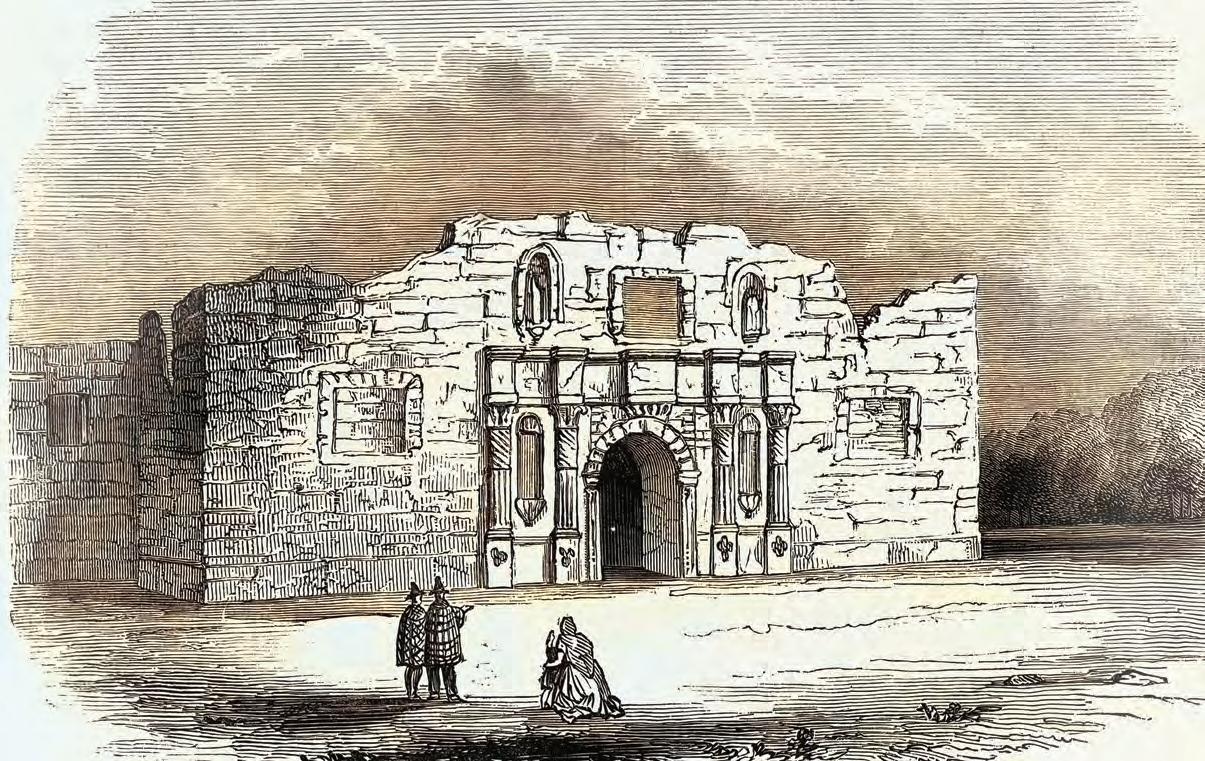
WILD WEST SPRING 2023 40 ARTOKOLORO (ALAMY STOCK PHOTO) TOP: PROJECT GUTENBERG; ABOVE: RON J. JACKSON, JR. COLLECTION
“Anyone who undertakes to correct Texas history will find little time for anything else. Bogus heroes and messengers of defeat multiply with years”
—THE DALLAS TIMES HERALD , MARCH 3, 1889
Cannon proved fast and loose with the specifics of his alleged escape during the final assault
WIWP-230400-ALAMO.indd 40 1/26/23 9:57 AM
The Legendary Church Misconceptions about the Alamo extend to its structure. The bell-shaped facade in most depictions wasn’t added until the Army made renovations in the 1850s. This correct illustration dates from 1844. Faulty renderings at least do no harm.
lurid dime novels,” the reporter wrote of Cannon, who also claimed to have been a former scout, interpreter and Mexican War veteran. The report revealed the reputed reason for Cannon’s visit: “A claim for some 7,000 acres of valuable Texas lands brings him to Washington.”
Six months earlier “Colonel Cannon” had popped up in Milwaukee, reportedly to be treated for a gunshot wound to the leg he claimed to have received “in 1886 while chasing Geronimo’s band in New Mexico.” In an interview with The Milwaukee Sentinel he stitched such a tangled patchwork of stories that the paper flatly stated he held “a wealth of confused Western frontier lore in his head.” Still, the newspaper recognized entertaining copy and happily published Cannon’s ramblings, including his outlandish claims about extensive land holdings. He also dubiously claimed to have personally known such frontier legends as David Crockett, James Bowie, George Crook, Sitting Bull, Kit Carson and Buffalo Bill Cody. Cannon sought to bolster his claims by flashing various papers and documents, which the unimpressed Milwaukee reporter concluded had been “furnished him by good-natured wags.” For example, the old-timer showed the reporter two letters purportedly mailed to him from London by Buffalo Bill. The missives expressed that Cody’s Indian performers missed “Uncle Jimmy” and inquired how Cannon was progressing on a forthcoming autobiography. Intrigued, the reporter asked his subject how he’d become acquainted with Buffalo Bill. Cannon’s answer stretched even the bounds of fiction.
“How did I?” he replied. “I raised him. Got him on Salt Creek, 3 miles from Fort Leavenworth, where his father was shot by pro-slavery men before he was born.”
In fact, Isaac Cody, the famed showman’s father, had been stabbed twice after having delivered an anti-slavery speech in Kansas in 1854. A few years later, in April 1857, he died from a respiratory infection likely exasperated by lingering effects of the stabbing. By then, however, young Bill Cody was 11 years old and already helping to support his mother and siblings.
No subject seemed to spark more theatrics in Cannon—or garner more attention for him—than the Battle of the Alamo. On April 7, 1895, the Fort Worth Gazette published an interview with Uncle Jimmy, during which, the reporter noted, his “sharp eyes glistened, and his hand instinctively went to his side as if to once more grasp the musket he held on that occasion.”
“So, you would like to know about the Alamo?” Cannon began. “Well, I am the only man who was present at the siege and lived to tell of it. Yes, I remember it as clearly as though it was only yesterday.”
Or perhaps not, for Cannon’s clarity wavered between versions of his survivor’s tale, his stated age at the time of the battle often proving a telltale. In an 1887 interview, for example, he said he was “a boy of 7” when Mexican General Antonio López de Santa Anna’s army overran the Alamo. In an April 1895 interview Cannon claimed he’d been 24 during the siege. Just days later, in still another interview, he told a reporter he’d been a “boy of 14.”
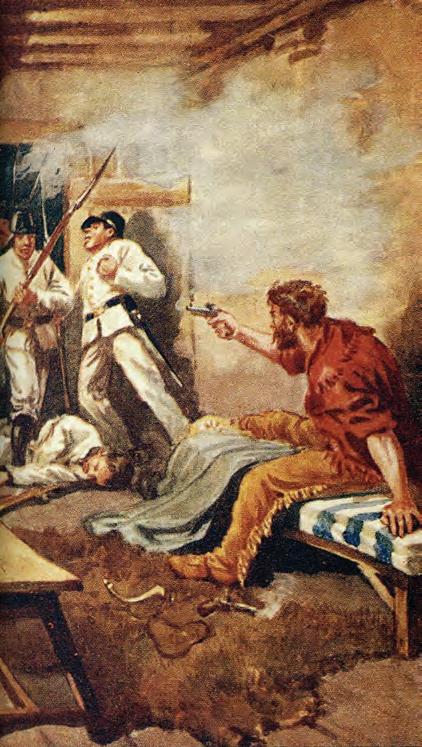
Cannon proved just as fast and loose with the specifics of his alleged escape during the final assault. In an 1887 version he claimed to have been
seated by Bowie’s bedside, under the care of a Mexican woman (presumably Alsbury), when a Mexican soldier entered the room and shot the legendary knife fighter in the head, splattering blood and brains on them both—or so ran Cannon’s wild imagination. The Mexican woman, he then claimed, “hid me in an old cistern.” When retrieved from the cistern some hours later, the boy learned of the slaughter of his father, mother and three siblings. Placed in the care of a man who promised to escort him to relatives, the saga continues, he and the man fell under attack by Comanches two days out from San Antonio, and Cannon was taken captive.
In an 1890 interview Cannon said he’d escaped the compound when a Mexican woman attached to Santa Anna’s forces mercifully bore him to safety. By April 1895 his escape featured María Andrea Castañon Villanueva, popularly known to San Antonians as Madam Candelaria. In that
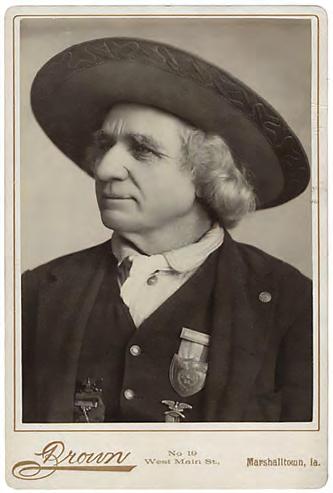
WILD WEST SPRING 2023 41 ARTOKOLORO (ALAMY
TOP:
STOCK PHOTO)
PROJECT
GUTENBERG; ABOVE: RON J. JACKSON, JR. COLLECTION
Cannon by Bowie’s Side
WIWP-230400-ALAMO.indd 41 1/26/23 9:57 AM
Alamo fraud “Uncle Jimmy” Cannon (at left) claimed to have been by the ailing Jim Bowie’s bedside when Mexican soldiers entered the room to kill the colonel, as depicted above. But Cannon’s memory strayed all over the Alamo map, and in differing accounts he professed to have been either 7, 14 or 24 years old.
Friend or Fraud?
Brigido Guerrero’s story of survival at the Alamo is surely thrilling. But is it true?
In the fall of 1878, more than four decades after the Battle of the Alamo, Guerrero applied for a pension with officials in Bexar County, Texas, swearing in writing to be the only actual defender to have survived.

In his testimony Guerrero claimed to have entered the Alamo as a soldier with Lt. Col. William Barret Travis in early February 1836 and remained in the garrison until Mexican soldiers overwhelmed the compound on March 6. Once the enemy had breached the walls and all appeared lost, Guerrero entered a roomful of women and convinced them to conceal him under some bedding. There he remained hidden until nightfall, when he quietly made his escape.
However, Guerrero had made an earlier claim with a major plot twist: He had escaped with his life only after having convinced Mexican soldiers he had been a
Claims That Made Good Copy

version Madam Candelaria spirited the boy from the Alamo disguised in a sombrero and blanket. Cannon then hid in the nearby house of a local priest for “a day or two” before strolling out of San Antonio unmolested, presumably because he “talked Mexican like a native.”
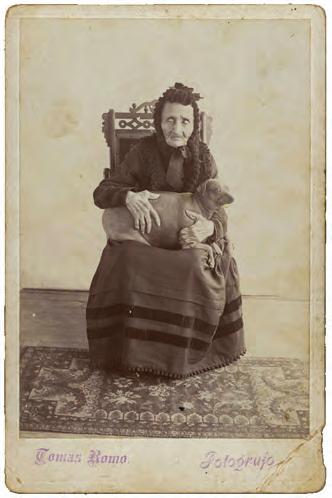
Texian prisoner. Bexar County records indicate Guerrero had filed a claim of service during the Texas Revolution as early as 1838, though it didn’t specifically state whether he had defended the Alamo. That 1838 claim was denied for unspecified reasons. Regardless, Guerrero eventually received a pension from the state for his participation in the Siege of Bexar and the Battle of Concepcion.
In his 1882 book The Alamo City Guide, San Antonio, Texas author Stephen Gould noted Guerrero had “steadfastly maintained the truth” of his Alamo survival story since 1843, though “his veracity is doubted by many of the early inhabitants.” —R.J.J.
Louis (or Lewis) Schilling’s claim to Alamo fame was equally sensational and also unsupported by eyewitness accounts or official documents. In the spring of 1913 newspapers widely reported that the 81-year-old “Civil War hero, sole survivor of the Alamo and adopted son of Kit Carson” was living in poverty in a tiny shack in Reno, Nev., barely surviving on crackers and water. He claimed to have been but 4 years old in 1836 when trapped inside the compound with his family. (The 1910 U.S. Census for San Diego County records Schilling as having been born in Texas to a French mother and German father in June 1832, a date that could place him at the Alamo in 1836 around the age he claimed.) He told reporters his mother and sister had been killed during the battle, and he’d narrowly escaped death only by hiding beneath an old bacon box.
Schilling’s first known claim to have been an Alamo survivor had come three years earlier, on Feb. 21, 1910, while traveling through Yuma, Arizona Territory, en route home to San Diego. The Yuma Examiner described “Captain Schilling” as one who holds the “unique distinction of being the only survivor of the Alamo.” As proof he produced a medal bearing an engraving of the Alamo on one side and the words Presented by Congress for Conspicuous Bravery on the reverse. Later accounts describe Schilling as “the possessor of a gold medallion, made of a Spanish doubloon, commemorating his escape from the massacre, presented to him by the State of Texas. One side is lettered In Remembrance of Davy Crockett.”
Whether the articles are describing the same medal is uncertain, as is the authenticity of such an award, though the state did issue gold medals to some veterans of the Texas Revolution. For example, in April

WILD WEST SPRING 2023 42 FROM LEFT: CHON KIT LEONG (ALAMY STOCK PHOTO); NATIONAL PORTRAIT GALLERY, SMITHSONIAN INSTITUTION; SOUTHERN METHODIST UNIVERSITY LIBRARIES CLOCKWISE FROM TOP RIGHT: CALIFORNIA DIGITAL NEWSPAPER COLLECTION; EVERETT COLLECTION (ALAMY STOCK PHOTO); LIBRARY OF CONGRESS; NEWSPAPERS.COM
Among Cannon’s outlandish stories were claims to have raised Buffalo Bill Cody (above left) from boyhood and an elaborate Alamo survival story in which María Andrea Castañon Villanueva (aka Madam Candelaria, above right) strolled past soldiers with young Jimmy disguised in a sombrero and blanket.
WIWP-230400-ALAMO.indd 42 1/26/23 9:58 AM
Did Guerrero hide under bedding in the Alamo?
1909, amid 73rd anniversary observances of the Battle of San Jacinto, the Legislature presented 94-year-old former Private Alfonso Steele a “handsome gold medal.” For his part, Cannon routinely appeared in public with military medals dangling from his lapels. His favorites were M exican War badges and an elaborate Grand Army of the Republic medal worn by fraternal members who served in the Union Army during the Civil War. Regardless of the authenticity of such awards, Schilling, like Cannon, suffered ever widening credibility gaps as his narratives grew increasingly more outlandish. His claim as an “adopted son of Kit Carson” is almost certainly hogwash, as no mention of him has been found in the literature of Carson.
For reasons known only to Schilling, he spent his waning years crafting a life story that largely never happened. A June 1919 interview in the California monthly Grizzly Bear offers a glaring example. In it he claimed to have accompanied “Pathfinder” John C. Frémont on his first three expeditions west and was with him when “the very first wooden building was put up in San Francisco.” Schilling even gave his father a co-starring role in the tale he wove, claiming the latter had settled in Galveston in 1807, fought with Maj. Gen. Andrew Jackson at the Battle of New Orleans, organized the first company of Texas Rangers and been personally appointed secretary of state of the Republic of Texas by founding president Sam Houston—a distinction, in readily verifiable fact, held by Stephen F. Austin.
Ironically, Schilling had no need for such embellishment. Official documents and early news reports reveal a fascinating, albeit violent, life story.

From Service to Stolen Valor
Louis Schilling served in the Union Army during the Civil War before his life turned dark, marked by brutal killings, his Alamo fantasies and other delusions. He ended life penniless yet was buried with honors.
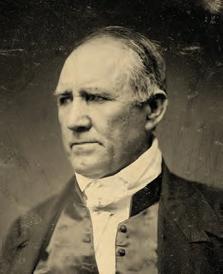
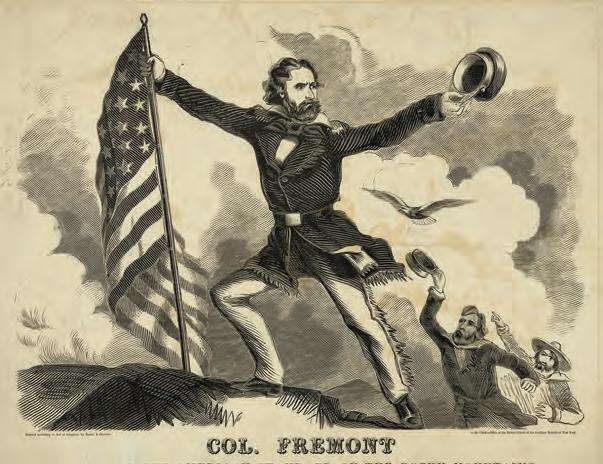

Military records show he had in fact served in the Union Army during the Civil War, with the 4th Independent Battalion of the Ohio Cavalry, from July 2, 1863, to Feb. 16, 1864. Digging deeper into Schilling’s past, Texas historian Sloan Rodgers discovered he’d been twice wounded in combat, in his chest and right leg. Rodgers also unearthed darker postwar accounts that paint a portrait of a hotheaded barber by trade with a knack for killing. One deadly encounter took place Feb. 17, 1869, in Arizona Territory. Schilling was a passenger on a wagon train bound west from the stage station at Tyson’s Wells to the mining town of La Paz. En route a fight erupted between Schilling and a teamster named Charles “Dutch Charley” Fink. Fink tried to shoot Schilling, who then plunged a knife into his adversary’s chest, killing him instantly. Schilling voluntarily surrendered to authorities, spent six days in jail and was released when a grand jury determined he’d acted in self-defense.
Thirteen years later Schilling claimed another life in the Texas border town of Laredo. At the time he ran a barber shop at the front of the Commercial Hotel, which also
Above and Beyond All Credibility
In a 1919 interview Schilling claimed to have explored with celebrated “Pathfinder” John C. Frémont (at left) and that his own father had been appointed secretary of state of the Texas Republic by Sam Houston (inset).
WILD WEST SPRING 2023 43 FROM LEFT: CHON KIT LEONG (ALAMY STOCK PHOTO); NATIONAL PORTRAIT GALLERY, SMITHSONIAN INSTITUTION; SOUTHERN METHODIST UNIVERSITY LIBRARIES CLOCKWISE FROM TOP RIGHT: CALIFORNIA DIGITAL NEWSPAPER COLLECTION; EVERETT COLLECTION (ALAMY STOCK PHOTO); LIBRARY OF CONGRESS; NEWSPAPERS.COM
WIWP-230400-ALAMO.indd 43 1/26/23 9:58 AM
The Lynching
William James “Uncle Jimmy” Cannon always wanted to be a hero, and in his travels across the West he represented himself as an Alamo survivor, a decorated Mexican War veteran and an indispensable frontier scout. But his headline-grabbing fantasy life will forever be overshadowed by the night in 1891 he led an all-too-real lynch mob in Omaha, Neb.
The Omaha Daily Bee and Omaha World-Herald related Cannon’s role in the gruesome death of George Smith on Oct. 9, 1891—and the former’s actions were far from heroic. A day earlier authorities had charged Smith (alias Joe Coe, who was black) with the rape of a 5-yearold white girl named Lizzie Yeates and had placed the accused in the Douglas County Jail pending arraignment. Meanwhile, rumors spread, and the Omaha newspapers’ evening editions reported Yeates’ death, prompting thousands of angry citizens to gather outside the jail.
Several of the vigilantes used a thick oak beam as a battering ram on a jail window encased with iron bars. The crowd cheered every blow until the casing broke free. “Let’s go in!” shouted one man eagerly, though no one wanted to be the first, as jailers and police with drawn revolvers stood just inside. At that critical juncture one man stepped forward. “An old, white-haired man, Uncle Jimmy Cannon, who was as much a leader as anyone, said he would go and started to climb into the window,” the Daily Bee reported. Jailer Pat Lynch responded by sticking a revolver point-blank in Cannon’s face. When the latter backed down, the mob hissed.

As the crowd continued to work the beam through the window, forcing back the lawmen, Cannon again
clambered up, this time making it through the opening as the throng cheered. Others instantly followed his lead, pushing inside “like a pack of hungry wolves.” Dozens of vigilantes soon streamed past the authorities, who were either unable or unwilling to hold them back.
By then jailers had placed Smith in a stout iron cage within an inner corridor. But the mob was determined. Using chisels, they breached two thick iron doors in succession to reach his cell. Someone immediately threw a noose around Smith’s neck and yanked him from the cage as others screamed racial epithets and pummeled him with fists and boots.
Meanwhile, a local reporter thought it prudent to summon the girl’s father and seek to ascertain whether Smith was indeed the assailant. Lizzie’s mother had claimed Smith was the man who attacked her child, but she refused to appear in court. On arrival at the courthouse square the girl’s father, D.O. Yeates, revealed that daughter Lizzie was in fact alive and doing well, and while he positively identified Smith, he stopped short of calling for vigilantism. “Men, I am not sure,” he said. “Let the law take its course, and I will be satisfied.”
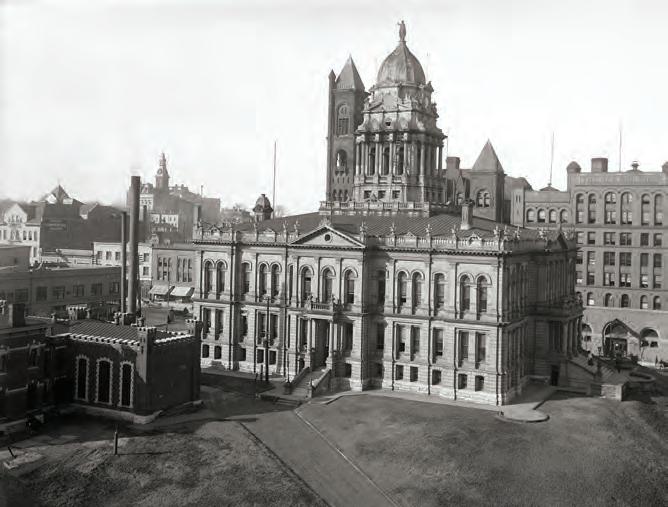
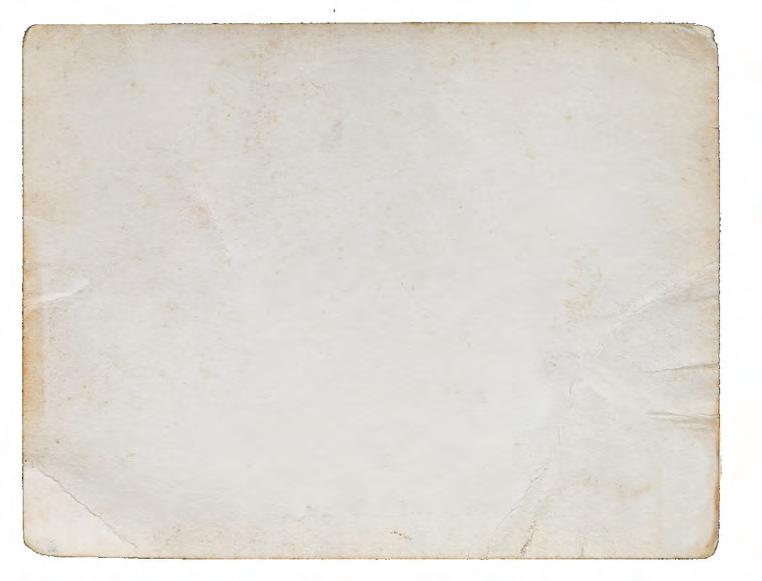
No one listened. The mob wanted blood and shoved the battered prisoner through the busted-out window.
By then the crowd outside had grown to estimated 10,000 onlookers. They cheered lustily as the vigilantes dragged Smith through the street. Bloodthirsty citizens swarmed the doomed man, viciously stomping and kicking him as the leaders dragged him along the pavement to the nearest intersection. One news account described Smith’s clothes as shredded, his flesh bruised and ripped “in a shocking manner.” Within moments his body was dangling from an electric streetcar wire, the muscles in one of his arms convulsing until he finally, mercifully died.
Police charged seven men with Smith’s lynching, including the “old scout” Cannon. But two weeks later assistant coroner Dr. Charles Allison testified under oath that Smith had literally died of fright before the hanging. Based on that testimony, no one stood trial for his murder. Judge Lee Helsley dismissed the charges against Cannon for a lack of witnesses or any evidence he either broke into the cage or hanged the victim. Ever the showman, Uncle Jimmy objected to his dismissal and dramatically declared his desire to “be held and be hung” with his fellow defendants. “When the old hero left the room,” the Daily Bee reported, “he vowed he would come back and see the thing through.”
Judge Lynch had prevailed, and Cannon walked free with more admirers than before. —R.J.J.
WILD WEST SPRING 2023 44 BOSTWICK-FROHARDT COLLECTION, KM3TV, DURHAM MUSEUM TOP: TEXAS STATE LIBRARY; BOTTOM: ROBERT ALEXANDER (GETTY IMAGES)
WIWP-230400-ALAMO.indd 44 1/26/23 10:05 AM
It was Cannon who in 1891 led Omaha vigilantes to drag a falsely accused black man from jail at the Douglas County Courthouse and lynch him.
housed a saloon. On the evening of Sept. 25, 1882, barber Schilling and barkeep Archie Scott got into in a fistfight outside the barber shop. Things turned nasty when Schilling grabbed Scott’s right wrist, bit down on his hand and pummeled him in the face with his free hand. Only when Scott promised to clear out did Schilling release the barkeep’s mangled hand.
Instead of retreating, Scott strode back to the saloon and returned with a Winchester. He found Schilling waiting in the doorway of the barber shop with a double-barreled shotgun. Firing wildly, Scott jammed his rifle. Schilling coolly returned fire, unloading both barrels into the barkeep’s chest. Scott staggered a few yards and groaned before dropping dead on the floor.
In April 1909 Schilling nearly killed another man down along the border. In that incident a Mexican would-be robber pulled a gun on Schilling, only to have the barber yank his Colt .45 and begin blazing away. As the chastened outlaw ran for his life, responding police arrested Schilling. A search of his person turned up three more concealed revolvers. “[Schilling’s] mind is giving away under the strain of his advanced years,” the police report stated in part. “He imagines that he has fallen heir to a large sum of money and that the Mexicans are trying to rob him in revenge for the part he took in the [Mexican] War.”
Cannon may have suffered similar delusions. “His claims to distinction are numerous,” one Wyoming reporter wrote of the latter in 1890. “Many are genuine, but a goodly array had their origin in his own powerful imagination.”
Beyond the embellishments and outright lies, the historical William James Cannon remains elusive, though records do exist for one documented episode in his life—an event so disturbing, it completely overshadows the image of him as little more than a unique frontier character. In 1891 he led a mob that lynched a black man awaiting trial in an Omaha jail (see sidebar, opposite).
Ashes of Fallen
This marble sarcophagus just inside the entrance to San Antonio’s San Fernando Cathedral reportedly holds the ashes of some of the actual heroes of the Alamo, though questions remain even about that contention.
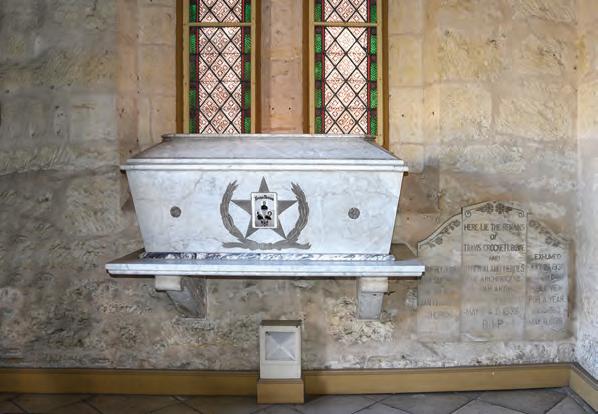
Not that Cannon kept a low profile in its aftermath, for he soon resumed his starring role as Alamo survivor. On June 9, 1893, he repeated his claim in a letter to Texas Governor Jim Hogg, again presumably to secure a pension or some other financial compensation. In the letter he spun perhaps his most creative and confusing narrative of the battle, again unsupported by
Heroes?
eyewitness accounts. In this version Cannon even refers to actual survivor Susanna Dickinson, famed “Messenger of the Alamo,” as his “oldest sister.” Dickinson’s descendants certainly remembered Cannon’s wild claims. Addressing them in 1926, Susanna’s granddaughter Susan Griffith Sterling offered a fitting postscript to the storyteller’s legacy when she proclaimed Cannon “a colossal fraud.” While neither Cannon nor Schilling served alongside the truly heroic defenders of the Alamo, both ended their lives on a military note. William James Cannon lived out his days, possibly into his 90s, as a celebrated resident of the Iowa Soldiers’ Home in Marshalltown, still regaling anyone who would listen with his far-fetched stories. Louis Schilling died of a cerebral hemorrhage on April 7, 1920, and was buried at the Los Angeles National Cemetery with full military honors.
Ron J. Jackson Jr. is an award-winning author from Rocky, Okla., and a regular contributor to Wild West. For further reading he recommends his books Joe, the Slave Who Became an Alamo Legend, Alamo Survivors (both co-authored with Lee Spencer White) and Alamo Legacy, as well as The Alamo Reader, by Todd Hansen, and Eyewitness to the Alamo, by Bill Groneman.

WILD WEST SPRING 2023 45 BOSTWICK-FROHARDT COLLECTION,
TOP: TEXAS STATE
KM3TV, DURHAM MUSEUM
LIBRARY; BOTTOM: ROBERT ALEXANDER (GETTY IMAGES)
The Family of This Alamo Survivor Cried Foul Cannon went so far as to claim kinship with Alamo survivor Susanna Dickinson, the widow of a slain defender. In 1926 Dickinson’s granddaughter denounced “Uncle Jimmy” as “a colossal fraud,” though by then he’d been discredited.
WIWP-230400-ALAMO.indd 45 1/26/23 9:59 AM
Abilene’s Able but Short-lived Lawman
BY ROGER MYERS
Thomas James Smith, better known as “Bear River Tom” Smith, is remembered primarily for having preceded the legendary Wild Bill Hickok as marshal of Abilene, Kan. Smith’s stint in office ran just shy of five months, from June 4 to Nov. 2, 1870. He preferred to use his fists rather than guns to keep order in the raucous cow town, right up until that fall day he was mortally wounded and then nearly decapitated with an ax in the line of duty. While his early life is sketchy on specifics, a 1905 letter to former Abilene Mayor Theodore C. Henry from town constable John Conkie detailed the five lively years Smith spent before becoming marshal. Published in the Nov. 29, 1905, edition of the Abilene Weekly Chronicle, the letter corrects lingering misconceptions about Smith.
While the 1870 U.S. Census records Smith’s age as 40, suggesting he was born in 1830, Conkie wrote that Tom was actually born around 1845 in New York City. Smith was not in Abilene when the census was taken, thus the information about him was likely supplied by the Jacob Ludi family, on whose farm

he lived. Conkie met Smith in late 1865 when the pair formed a mining partnership near Deer Lodge, Montana Territory. That winter they were snowed in and passed the time swapping life stories.
Smith, wrote Conkie, was of “Irish and Scotch stock,” had a “rather limited” education and loved music, spending countless hours practicing Irish and Scottish tunes on his banjo. When spring arrived, the partners worked the diggings and made a little money before selling their claims and moving to Salt Lake City to overwinter. In the spring of 1867 the pair tried their luck in Idaho Territory, only to return to Salt Lake City that fall after a so-so season of prospecting. In 1868 the partners ventured to the diggings near South Pass, in what that July 25 would become Wyoming Territory, but that trip also proved unsuccessful.
Tom Smith
Describing the conditions at South Pass, Conkie noted there was no way of controlling the “rough element” other than with vigilance committees. The camp was plagued by a number of robberies and murders, and the mine owners suspected a man who disappeared about the time one particularly rich miner
WILD WEST SPRING 2023 46 KANSAS STATE HISTORICAL SOCIETY (2)
‘BEAR RIVER TOM’ SMITH STOOD UP TO WYOMING TERRITORY VIGILANTES BEFORE EARNING HIS SPURS AS A KANSAS COW TOWN MARSHAL
WIWP-230400-SMITH.indd 46 1/26/23 8:32 AM
End of the Rail and Trail Abilene’s position in the late 1860s on the Kansas Pacific Railway and at the end of the Chisholm Trail brought rowdy cow hands and ne’er-do wells intent on fleecing them of their wages.
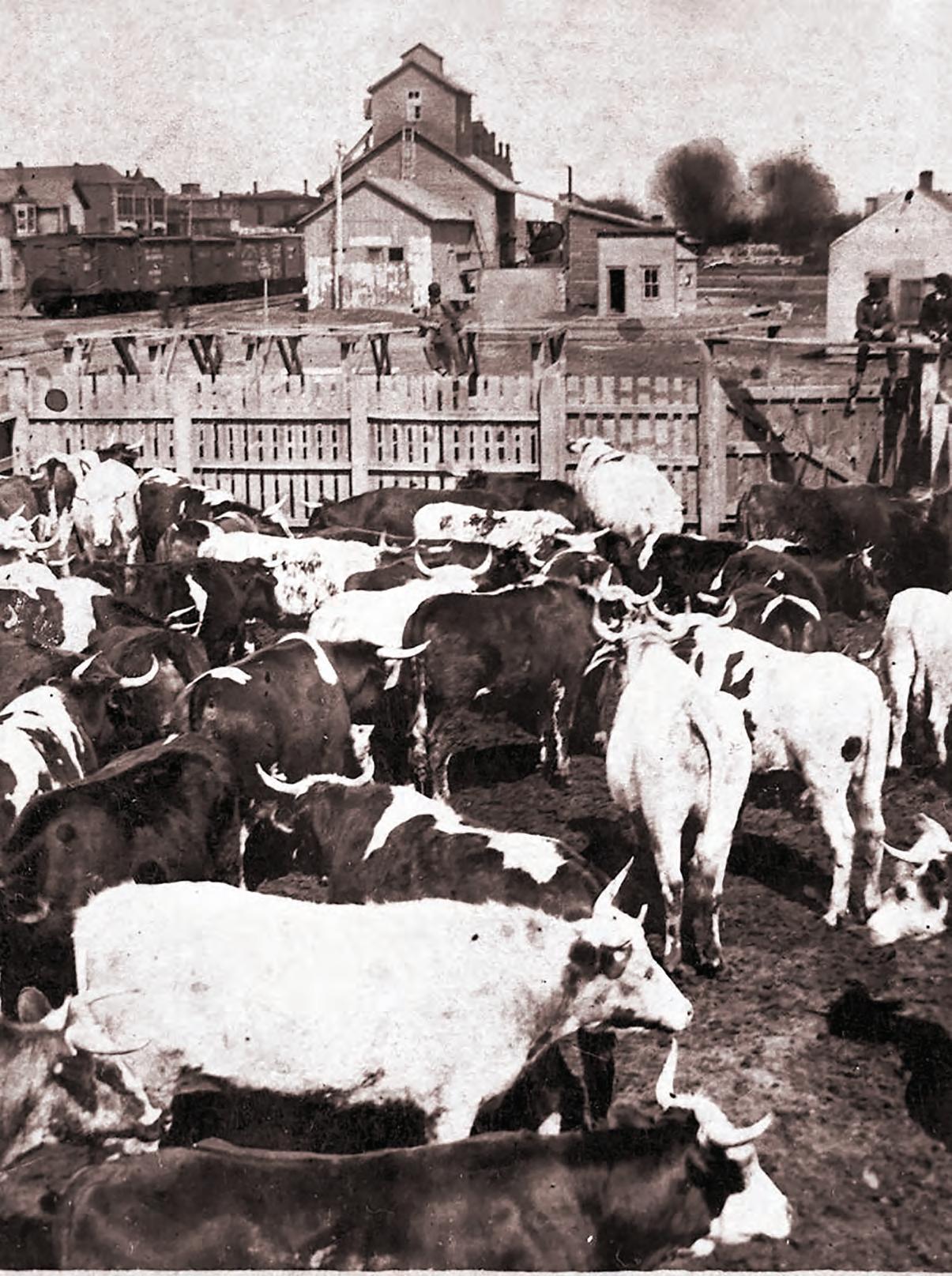
KANSAS STATE HISTORICAL SOCIETY (2)
WIWP-230400-SMITH.indd 47 1/26/23 8:32 AM
had been robbed and nearly murdered. At a subsequent miners’ meeting the owners offered a substantial “dead or alive” reward for the delivery of the suspect.
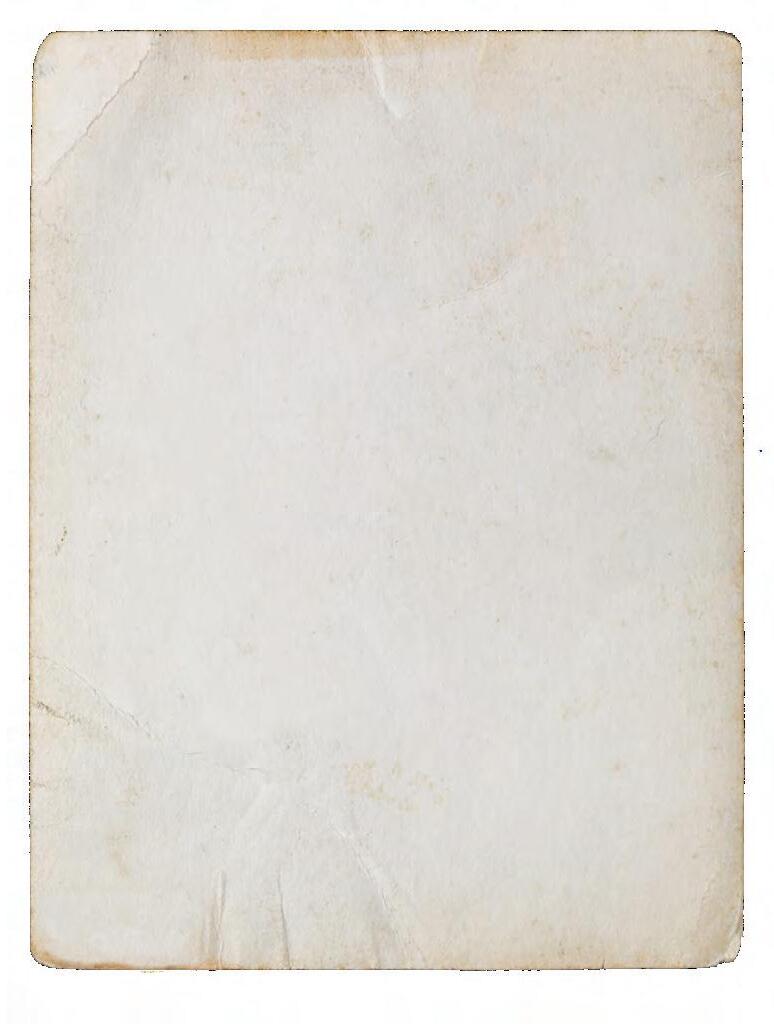
That evening after supper Smith, resolving to bring in the criminal, cleaned and loaded his Henry rifle. The subsequent manhunt was his first such venture, and his only authority was the resolution passed at the miners’ meeting. He was successful, bringing the man into camp the next day, for which he earned both the reward and a good reputation.
A month later the partners traveled some 65 miles southwest to Green River City (present-day Green River, Wyo.), at the mouth of Bitter Creek, where the line of the Union Pacific Railroad was being surveyed. The newspaper that would become Smith’s nemesis, The Frontier Index , and its overtly racist publisher Legh Freeman, arrived around the same time.

The Index came to be called the “Press on Wheels,” as Freeman followed the railroad, publishing the paper in a handful of end-of-track towns in southern Wyoming Territory.

“Tom’s reputation followed him,” Conkie recalled, “and he was appointed marshal.” In fact, on August 6 Smith was elected marshal of Green River City. Assisting him were several officers, including Conkie as a deputy and jailer. Smith did his share of rounding up rowdies, making about half his arrests during one two-week period. As marshal he was also responsible for such mundane duties as collecting property taxes.
While Smith at first allied himself with publisher Freeman in thoughts on what the Democratic Party should be, a falling out between the pair was on the horizon. One particularly nasty accusation against Smith in The Frontier Index involved a “Judge Lacy” of Omaha who one night hurrahed the town after having overindulged in “bourbon cocktails from Pendleton’s.” Freeman alleged that for $50 the “chief of police” had turned a blind eye to Lacy’s shenanigans. The publisher also chided Smith in print for an unpaid city printing debt.

A faction of the Democratic Party nominated Smith for the office of Sweetwater County sheriff in the election of October 13. His popularity in Green River was obvious, as he outpolled H.K. Tompkins among its citizens 294 to 179. But the marshal failed to carry the rest of the county and lost the election. The results, re -
Freeman’s ‘Press on Wheels’ Frontier Index publisher Legh Freeman (far left) arrived in Green River City, Wyoming Territory, around the time Smith was elected marshal. His editorial attacks on Smith sparked a riot after the latter moved on to Bear River City.
WILD WEST SPRING 2023 48 AMERICAN HERITAGE CENTER, UNIVERSITY OF WYOMING TOP: MANSFIELD LIBRARY, UNIVERSITY OF MONTANA; FAR LEFT: AMERICAN HERITAGE CENTER, UNIVERSITY OF WYOMING; LEFT: THE HENRY FORD, DEARBORN, MICH.
Deer Lodge, Montana Territory, 1867
WIWP-230400-SMITH.indd 48 1/26/23 9:03 AM
In the mid- to late 1860s Smith bounced between diggings here and elsewhere in the intermountain West with partner John Conkie. “Tom’s reputation followed him,” Conkie recalled of his partner’s no-nonsense dealings with mining town hard cases.
ported The Frontier Index, sparked a violent exchange between Smith and local attorney James Madison Thurmond:
Shooting Affray — At half past 3 this afternoon some words in regard to the election today passed between J.M. Thurmond and Thos. J. Smith, resulting in a resort to knives and pistols. Deputy Sheriff Ed. Gillman knocked Smith’s pistol up, and it was discharged in the air.
Smith and Conkie moved on almost immediately to Bear River City, Wyoming Territory, where crews were grading the railroad. “Tom was not successful in getting an appointment as marshal at this town,” Smith’s partner recalled, and contemporary news accounts bear that out.
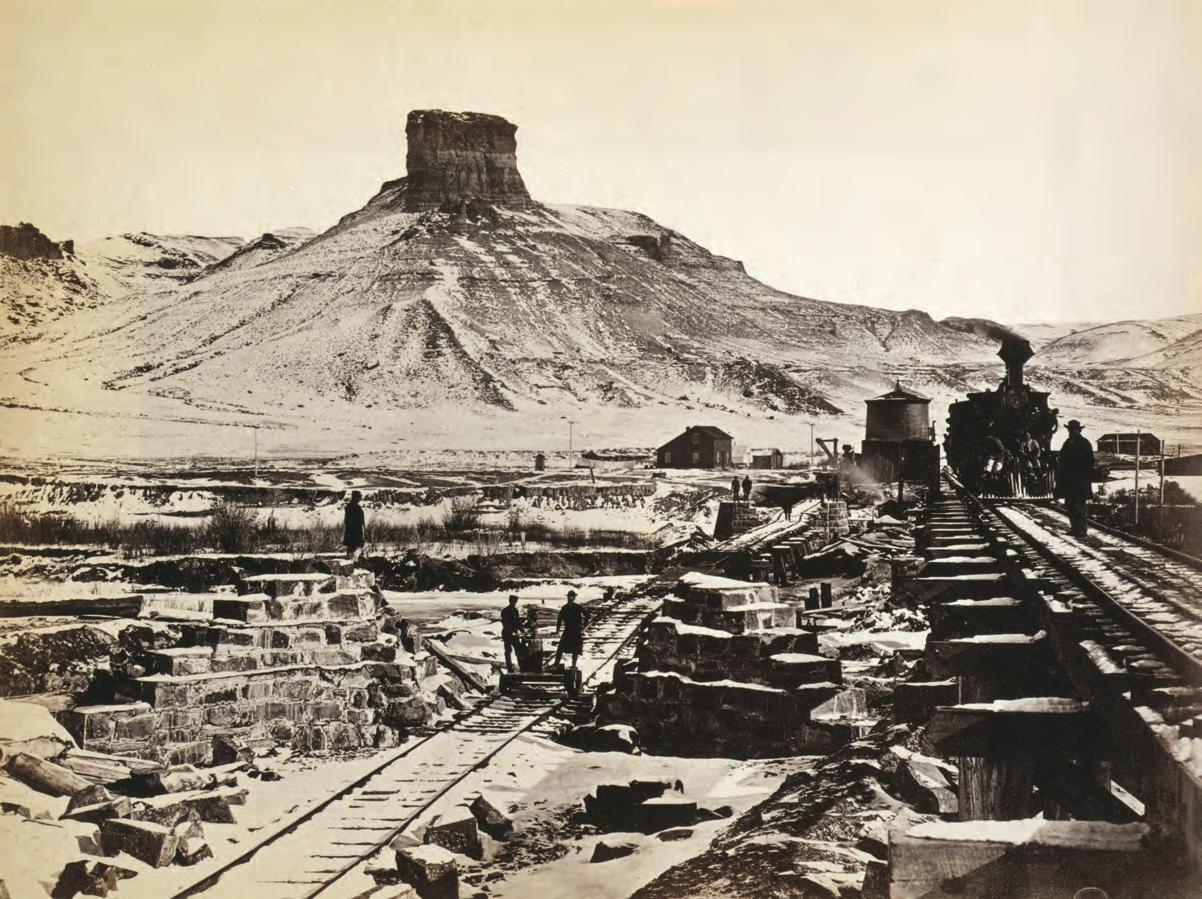
Conkie landed a contract to haul ties from Piedmont to the Union Pacific right of way, while Smith remained in Bear River City. Conkie suggested his partner come to Piedmont, but “[Tom] was drinking and would not come.” Conkie made no men -
Making Tracks...out
tion of Smith’s means of making a living in Bear River City, but he likely worked on the railroad grading crew.
In his 1905 letter Conkie noted The Frontier Index continued to pen “uncomplimentary editorials” about Smith, which finally prompted Tom and a reported 200 followers to raid the newspaper office in Bear River City on November 19, touching off what came to be known as the Bear River Riot. According to the November 23 edition of Salt Lake City’s Deseret Evening News , the disparaging editorials were in regard to Smith’s stint as Green River marshal.
The article also recounts other events leading to the riot:
Mr. [Chance L.] Harris, one of the editors of the Frontier Index, called this morning and related to us the origin of the recent riot at…[Bear] River. He says it originated through the occasional arrest and imprisonment, for drunkenness, of some of the graders, which infuriated their fellow workmen, who determined to release them…and in addition to this the proprietors of the Index had pressed Tom Smith, one of the leaders of the mob at Bear River, but formerly city marshal at Green River, for $70, which he owed them for printing done for the city while at Green River.
The Index office was the first building attacked by the angry mob, according to the November 27 edition of the Virginia City–based Montana Post
WILD WEST SPRING 2023 49 AMERICAN HERITAGE CENTER, UNIVERSITY OF WYOMING TOP: MANSFIELD LIBRARY, UNIVERSITY OF MONTANA; FAR LEFT: AMERICAN HERITAGE CENTER, UNIVERSITY OF WYOMING; LEFT: THE HENRY FORD, DEARBORN, MICH.
WIWP-230400-SMITH.indd 49 1/26/23 8:33 AM
of Town Smith was appointed marshal of Green River City, Wyoming Territory, on Aug. 6, 1868, only to lose election that October 13, days after the arrival of Union Pacific Railroad crews. Legh Freeman’s scathing editorials in The Frontier Index helped push out Smith and haunted him.
On that same date The Border Sentinel, published in Mound City, Kan., provided more details, reprinting a November 20 dispatch to the Missouri Democrat from that paper’s correspondent in Bear River. The mob, according to the dispatch, had set torch to the Index office by 8 a.m. on November 19 and the jail by 1 p.m. The reason its correspondent gave for the riot was the vigilante lynching of “three roughs, November 11th, by the citizens,” an act wholly supported by Freeman in the Index. A follow-up dispatch a day later identified the ringleaders of the riot as men named “Smith and Dailey, [who] were seriously wounded and are not expected to live.”
By nightfall on the 20th the disturbance had quieted down as troops from Fort Bridger approached and the rioters retreated to the mountains. In its wake military authorities arrested Smith and sent him to the penitentiary in Salt Lake City for some weeks, though according to Conkie, Smith was ultimately released, perhaps after having awaited charges that never came.
Soon thereafter Conkie left Piedmont for Cheyenne, where he opened a restaurant and bowling alley. Smith soon joined him and remained in Cheyenne about six months. From there “Bear River Tom”—as he’d been dubbed after having led the uprising against that town’s vigilantes—went to Denver and then Kit Carson, Colorado Territory, where he was hired as an
officer under Town Constable Pat Desmond. Smith served well there, and Theodore Henry, the first mayor of Abilene, heard good things about him.
Henry recalled his Kansas town as “the most famed and godless little city on this continent.” In Abilene’s early days Texas cowboys had nearly full reign during the cattle drive season. One drunken evening they tore down the walls of the nearly completed stone jail. After it was rebuilt, cowboys again raided the jail, pulling the bars from a cell to release one of their own who’d been hurrahing the town. Cal Bascom, who worked for the Union Pacific at Abilene and such other wild towns along the line as Ellsworth and Hays, described Abilene as “wild and woolly and hard to curry, filled with cowmen, gamblers, disorderly women and all around toughs.”
Realizing they had to restore some degree of order, town officials on May 2, 1870, enacted ordinances pertaining to the carrying of firearms, the operation of saloons and bordellos, gambling, the establishment of a police force and related matters that were to go into effect on May 20. The ordinances were only enforced in the most
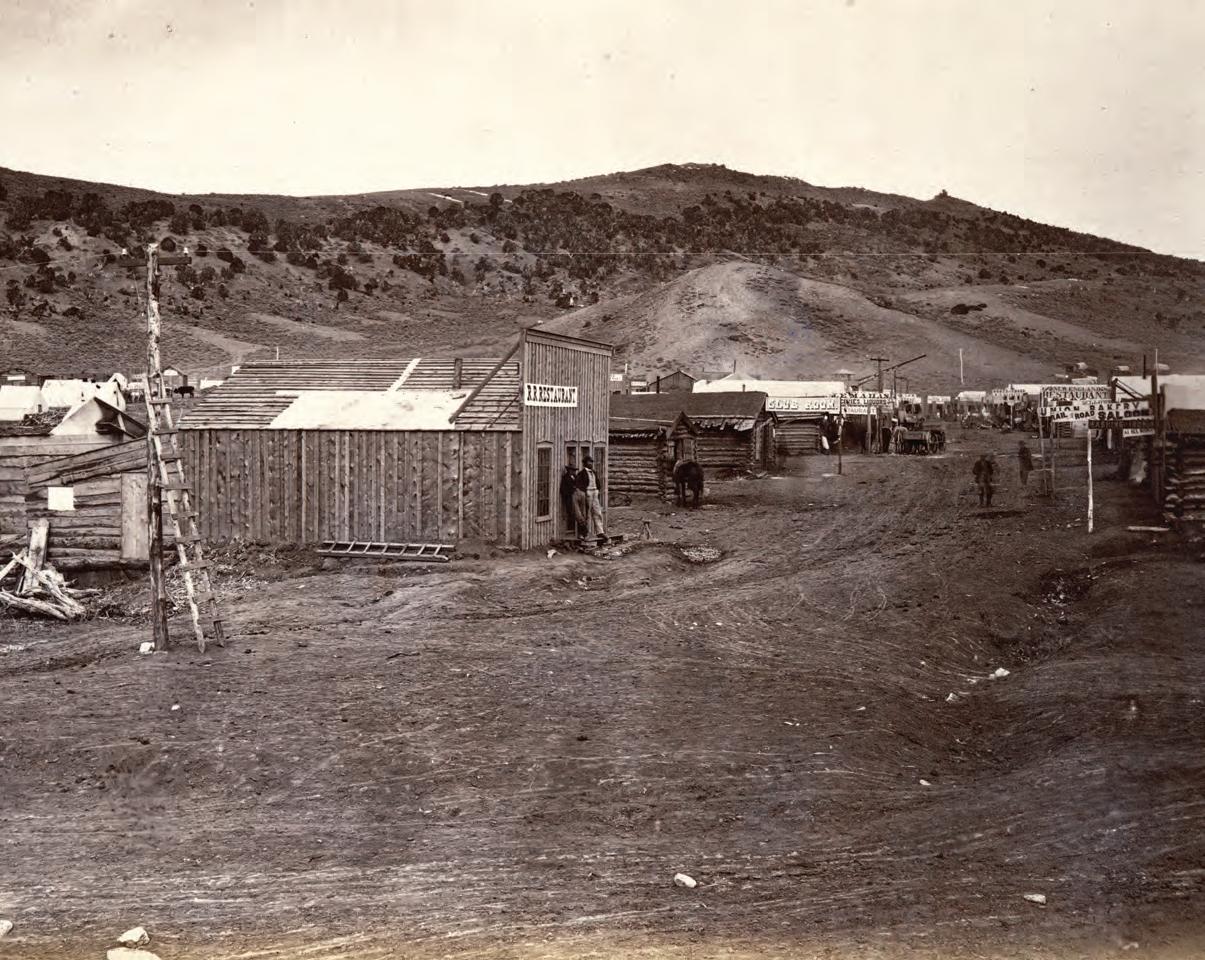
OPPOSITE: NEW YORK PUBLIC LIBRARY; THIS PAGE, TOP: NEWBERRY LIBRARY; RIGHT: KANSAS STATE HISTORICAL SOCIETY
Smith was dubbed ‘Bear River Tom’ after having led the uprising against that town’s vigilantes
Bear River City, Wyoming Territory, 1869
WIWP-230400-SMITH.indd 50 1/26/23 8:33 AM
A year earlier this sleepy-looking mining town was the site of a riot, as Smith and members of the railroad grading crew torched the Index office and the jail after vigilantes reportedly lynched three men. Smith was arrested but later released.
severe cases, however, owing to the economic necessity of retaining the cattle trade.
The town fathers also began fishing about for a city marshal who could stand up to the Texas rowdies whenever they hit town. Among the first applicants they considered was Smith. Years later Henry recalled him as a broad-shouldered, gentle-mannered man standing 5 feet 11 inches and weighing 170 pounds, with auburn hair, a light mustache and gray eyes of a bluish tint. According to the mayor, Smith had come directly east from Kit Carson, Colorado Territory, and had a good reference from a reputable citizen of Abilene. But bullheaded Henry and the other town fathers instead hired a series of incompetent local men, followed by big city “professionals.” Henry recalled:
Successive marshals were tried, failed and in turn resigned. The chief of police of St. Louis was implored to send us a couple of men competent to come and run the town for us. In a few days they appeared, vouched for, to fill our order. Their identity and mission were soon known over town. Every device lawless deviltry could contrive was let loose that day. The brace of “tenderfeet” without tendering their farewell compliments, took the return midnight train for Missouri!
On a Saturday in late May 1870 Mayor Henry finally wired Smith, asking him to reapply for the marshal position. On June 4 the City Council formally hired Bear River Tom at the very respectable sum of $150 per month. Smith immediately made his presence known. Daniel R. Wagstaff, the sheriff of neighboring Saline County in 1870, witnessed an incident that may be the basis for the well-known stories of Smith’s thrashing of “Big Hank” and buffaloing of “Wyoming Frank.”
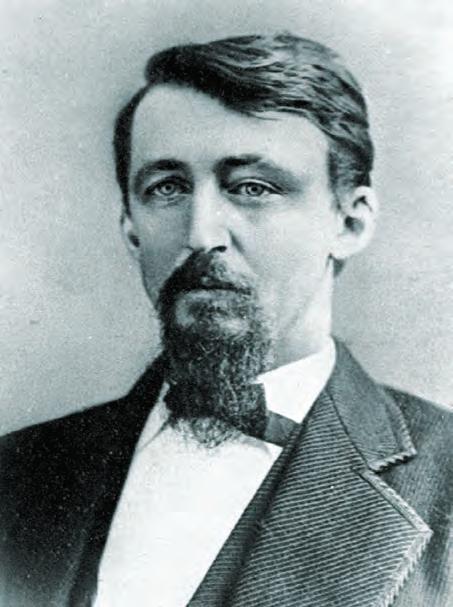

Soon after Smith had been sworn in as marshal, Wagstaff arrived in Abilene to attend a judicial meeting. The two of them had just walked into a saloon when Smith was accosted by a “big, husky cowboy.” The cowboy asked whether the marshal was “the great Tom Smith who claims to be such a fighter,” to which Smith replied, “I’m your huckleberry.” The cowboy shot back that he considered Smith little more than a blowhard. Spying a pistol on the cowboy’s hip, Smith told him it was against the law to carry a firearm in Abilene. “Oh, I’ll carry a gun if I want to,” the cowboy replied
dismissively. Wagstaff noted the abrupt end to the encounter:
Tom simply grabbed that fellow by the shoulders and throat and laid him on his back, put his foot on the cowpuncher’s throat, took his gun away, searched him, slapped his face and gave him 10 minutes to leave town. That’s the way Tom Smith got along with the unruly punchers. He didn’t arrest half of them, although he could have had he wanted to.
XXXXXXXXXX WILD WEST SPRING 2023 51 OPPOSITE: NEW YORK PUBLIC LIBRARY; THIS PAGE, TOP: NEWBERRY LIBRARY; RIGHT: KANSAS STATE HISTORICAL SOCIETY
WIWP-230400-SMITH.indd 51 1/26/23 8:33 AM
The Mayor and His Cow Town Founding Mayor Theodore Henry, above, recalled Abilene (top, in a period illustration) as “the most famed and godless little city on this continent.” City ordinances weren’t enough to keep a lid on crime, so on June 4, 1870, councilmen hired Smith as marshal.
In addition to his town marshaling duties Smith served as a deputy U.S. marshal and was hired as undersheriff by Dickinson County Sheriff J.A. Cramer. Given Cramer’s ill health, Smith assumed many of the sheriff’s duties in Cramer’s absence.
In September 1870 Undersheriff Smith was paid $335.95 for services in the capture of Charles R. “Buckskin Bill” Phillips. Weeks earlier The Abilene Chronicle had reported Philips was wanted for having stolen 10 horses and one mule. Smith and an unnamed assistant set out in pursuit, trailing Phillips 50 miles northwest toward Concordia, Kan. They arrived in Concordia on July 25, only to learn that five days earlier the rustler, who had since shed the mule, had passed within 5 miles of town. From there Phillips had veered east, stopping at Pawnee City, Neb., to dispose of several horses before continuing to his home near Brownville, Neb. It was there Smith caught up with him. On July 28 the intrepid lawman had Judge Alfred W. Morgan issue a warrant for Phillips’ arrest. He then handed the warrant to Nemeha County Deputy Sheriff Hugh Baker, who made the arrest, lodging Phillips in the Brownville jail. Smith then turned for home. En route he stopped in Concordia on August 1 and updated the Concordia Empire on the disposition of the stolen stock. “Bill [Phillips] had sold some of the stock at Pawnee City,” Smith told the paper, “and they [town toughs] attempted to prevent him [Smith] from getting the property by

telling him he had better get out, or he soon would have nothing to go out on.…The sheriff captured nearly all the stock.”
Deputy Sheriff Smith next turned his attention to a notorious shanty town northwest of Abilene’s city limits. The Sept. 8, 1870, edition of the Abilene Weekly Chronicle reported on his closure of the brothels there:
Cleaned Out — For some time past a set of prostitutes have occupied several shanties about a mile northwest of town. On last Monday or Tuesday [September 5 or 6] Deputy Sheriff Smith served a notice on the vile characters, ordering them to close their dens— or suffer the consequences. They were convinced beyond all question that an outraged community would no longer tolerate their vile business, and on yesterday, Wednesday, morning the crew took the cars for Baxter Springs and Wichita. We are told that there is not a house of ill fame in Abilene or vicinity.… Chief of Police T.J. Smith and his assistants and [Police Magistrate] C.C. Kuney Esq. deserve the thanks of the people for the faithful and prompt manner in which they have dis-
WILD WEST SPRING 2023 52 PHOTOQUEST (GETTY IMAGES) TOP: HERITAGE AUCTIONS; BOTTOM: ABILENE CONVENTION & VISITORS BUREAU
Packing ’em in on the Kansas Pacific
The cattle trade called for tough men able to mix it up with stubborn, muscular steers. Abilene needed a marshal able to handle such toughs, and Smith sought to do so without resorting to firearms.
WIWP-230400-SMITH.indd 52 1/26/23 8:33 AM
‘Abilene owes a debt of gratitude to the memory of Thomas James Smith, which can never be paid’
charged their official duties. A grateful community will not forget the services of such efficient officers.
Alas, only five months after being hired to clean up Abilene, Smith was slain in the line of duty. He was killed on Nov. 2, 1870, while attempting to arrest farmer Andrew McConnell for the murder of neighboring rancher John Shea.
On October 23 McConnell had shot Shea through the heart during a heated argument reportedly after having caught the rancher driving cattle across McConnell’s land. After the shooting McConnell summoned a doctor and turned himself in to authorities. At a preliminary examination before Dickinson County Deputy Sheriff Andrew S. Davidson neighbor Moses Miles testified McConnell had acted in self-defense, and authorities released the latter from custody. However, other neighbors soon came forward with information suggesting Miles had lied on McConnell’s behalf, and authorities issued a warrant for McConnell’s arrest.
On November 2 Smith and Deputy James H. McDonald rode out to McConnell’s dugout, where they encountered the farmer and neighbor Miles. When Smith informed the pair he was a deputy sheriff with a warrant to arrest McConnell, the farmer abruptly shot the sheriff through the right lung. Smith returned fire, wounding McConnell. Then the two wounded men began to grapple. Smith had gotten the upper hand when Miles intervened and clubbed Smith with a gun. Finally, taking up an ax, Miles nearly severed the lawman’s head from his body.
Outnumbered and undoubtedly horrified, Deputy McDonald rode back to Abilene and gathered a posse. On reaching McConnell’s dugout, they found Smith’s body, but McConnell and Miles had fled. Three days later, near Clay Center, Kan., a posse captured the fugitives, who were charged with Smith’s murder. Tried and convicted in March 1871 at trial in Manhattan, Kan., they were sent to Kansas State Penitentiary in Lansing, McConnell for a 12-year sentence, Miles for 16 years.
Along Came Hickock
On April 15, 1871, five months after Smith’s murder, Abilene’s city fathers hired James Butler Hickok as marshal. By year’s end they had fired “Wild Bill.”
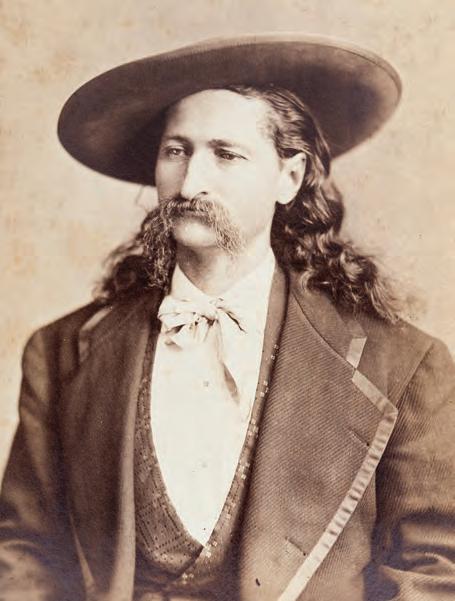
Smith was laid to rest in the Abilene Cemetery on Nov. 4, 1870. The day prior the Weekly Chronicle published a tribute to the tough-as-nails lawman:
He came to this place last spring, when lawlessness was controlling the town…and soon order and quiet took the place of the wild shouts and pistol shots of ruffians who for two years had kept orderly citizens in dread for their lives. Abilene owes a debt of gratitude to the memory of Thomas James Smith, which can never be paid.
On Memorial Day, May 30, 1904, the citizens of Abilene made a down payment on that debt of gratitude by reinterring Smith’s remains in a place of prominence in the cemetery and capping his memorial with a bronze plaque dedicated to “a fearless hero of frontier days, who in cowboy chaos established the supremacy of law.”
‘Fearless Hero of the Frontier Days’
Smith’s initial grave in the Abilene Cemetery was as unassuming as the lawman had been in life. In 1904 citizens had his remains re-interred beneath this memorial dedicated to the marshal “who in cowboy chaos established the supremacy of law.”
Roger Myers, a retired grain business CEO living in Larned, Kan., often writes about Kansas outlaws and lawmen. For further reading he recommends Why the West Was Wild, by Nyle H. Miller and Joseph W. Snell; Ballots and Bullets: The Bloody County Seat Wars of Kansas, by Robert K. DeArment; and Dodge City: Up Through a Century in Story and Pictures, by Fredric R. Young.
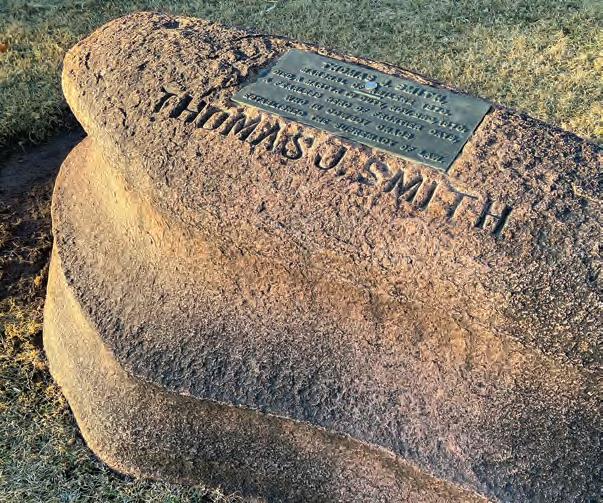
WILD WEST SPRING 2023 53 PHOTOQUEST (GETTY IMAGES) TOP: HERITAGE AUCTIONS;
BOTTOM: ABILENE CONVENTION & VISITORS BUREAU
WIWP-230400-SMITH.indd 53 1/26/23 9:03 AM
Mackenzie’s Raid Into Mexico
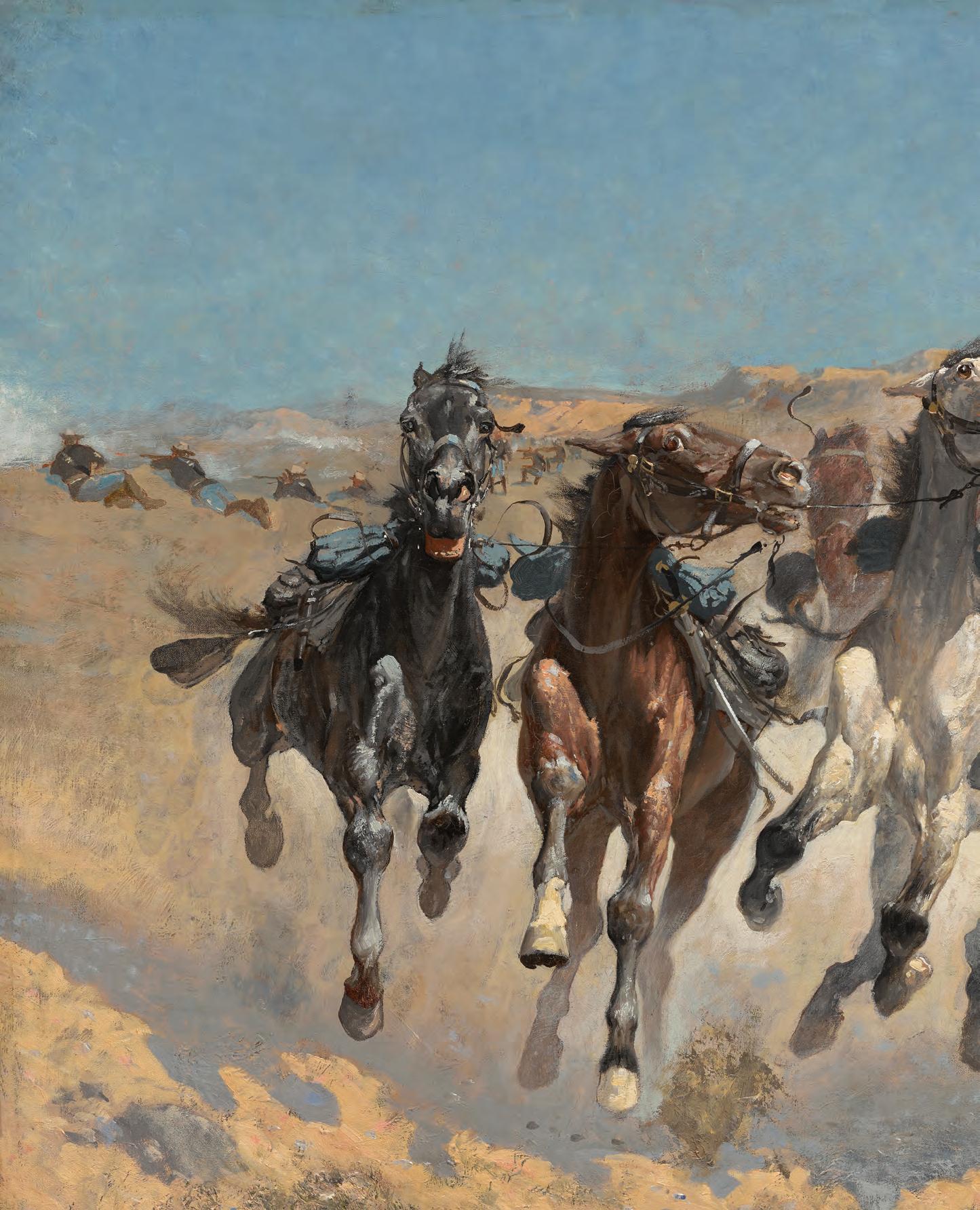 BY ALLEN LEE HAMILTON
BY ALLEN LEE HAMILTON
WILD WEST SPRING 2023 54
WHEN THE U.S. GOVERNMENT RESOLVED TO ADDRESS POSTWAR INDIAN RAIDS IN SOUTH TEXAS, COLONEL RANALD MACKENZIE GOT THE CALL
WIWP-230400-MACKENZIE.indd 54 1/26/23 8:34 AM
Dismounted
In an oil on canvas rendered nearly 20 years after Ranald Mackenzie’s 1873 raid, Frederic Remington depicts dismounted 4th U.S. Cavalry troopers on the firing line at left as fellow soldiers lead their horses out of harm’s way. It was the 4th that pursued Kickapoos into Mexico.
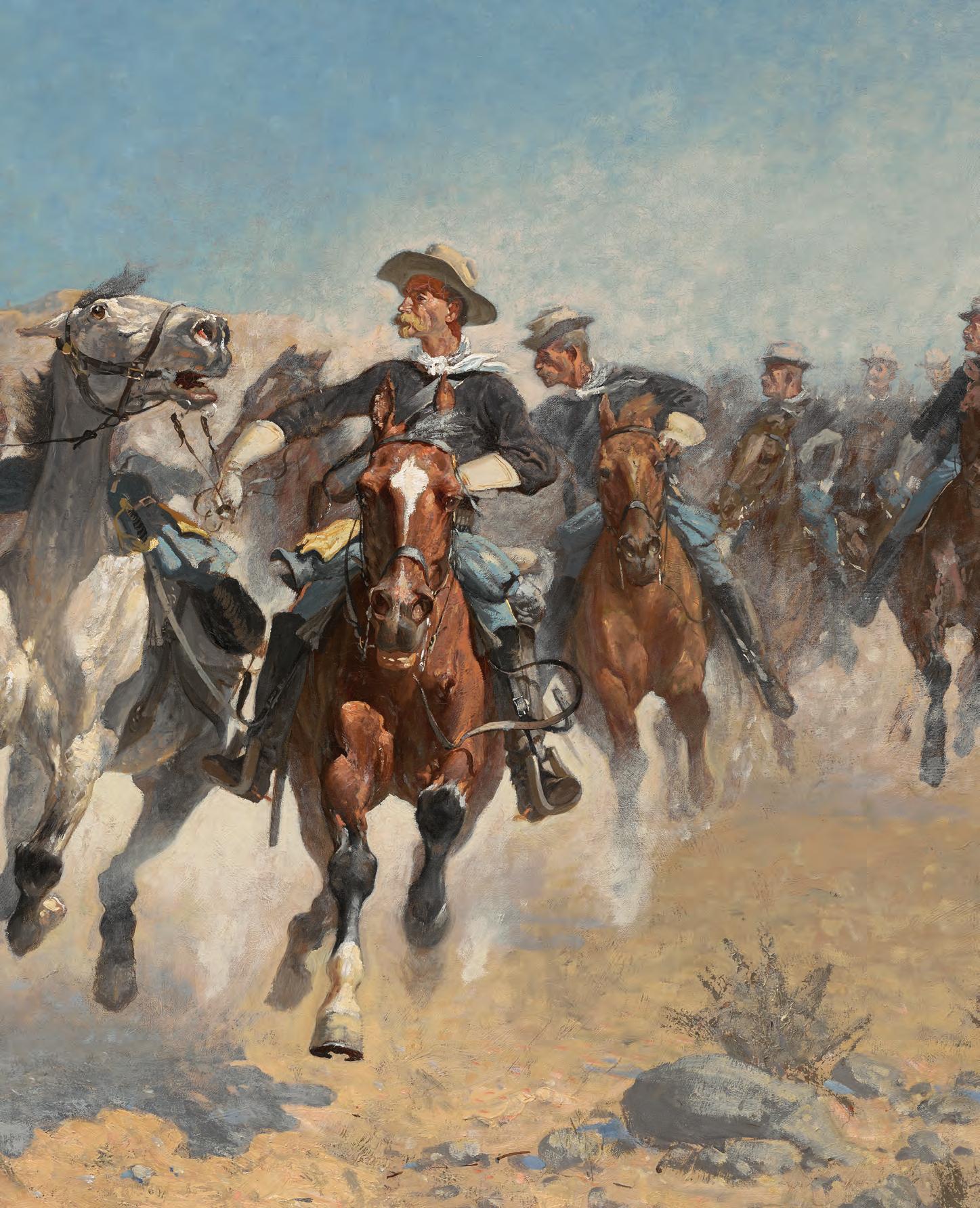
WIWP-230400-MACKENZIE.indd 55 1/26/23 8:35 AM
For nearly a decade after the Civil War southwest Texas was a land in torment. Emboldened Indians striking from below the Rio Grande stole tens of thousands of head of livestock, burned out countless ranches and murdered scores of settlers. Many such raiders were from the Kickapoo, a tribe that had migrated to Mexico from the United States.
As late as the 17th century the Kickapoos had made their home south of the Great Lakes, but pressure from competing tribes and westering AngloAmericans had pushed them steadily southwestward until, by the early 19th century, most lived in the region encompassed by present-day Texas and Oklahoma. In 1839 a small band agreed to move to Mexico, where, in return for land grants and annuities from the Mexican government, they promised to help defend that country’s northern frontier against marauding Comanches and Kiowas. Their alliance with the Mexicans worked so well that over the next quarter century many other bands of Kickapoos joined their tribesmen. In the wake of the Texas Revolution, most settled just across the Rio Grande in the state of Coahuila.
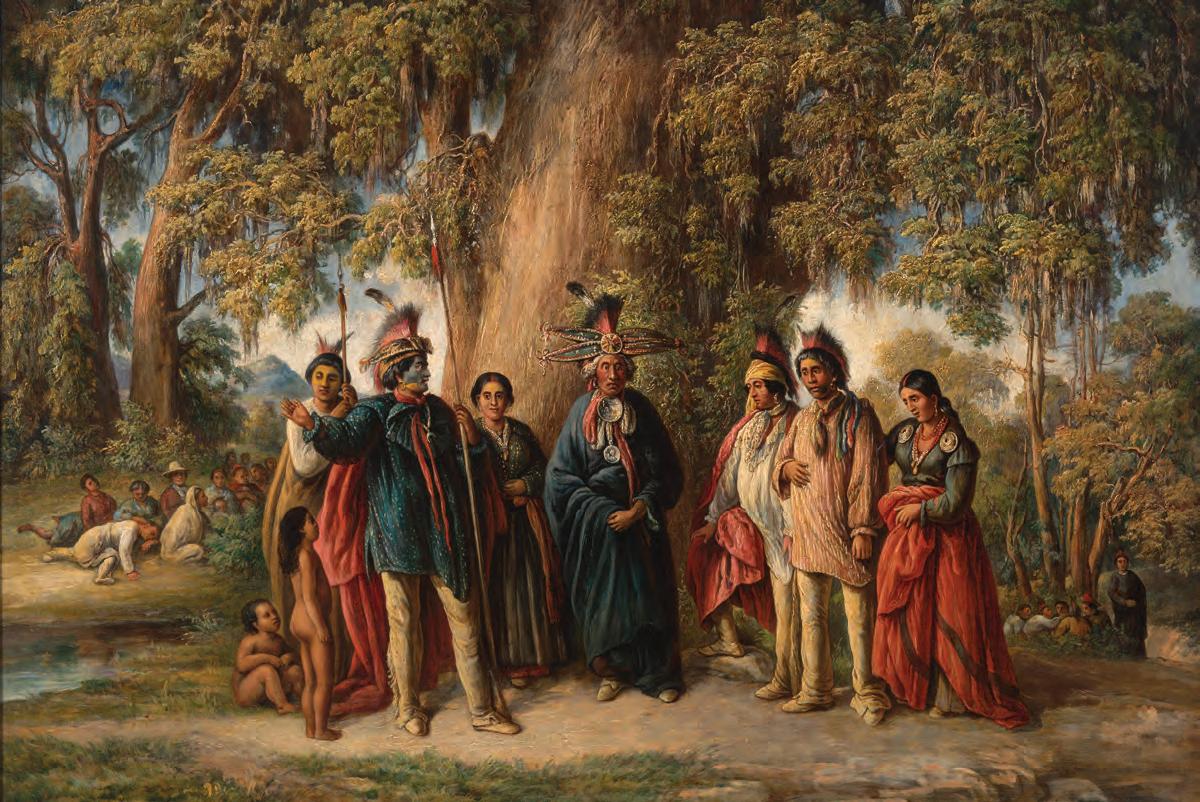
But in December 1862, and again in January 1865, Texas frontier patrols encountered such bands of migrating Kickapoos and attacked them. To the Texans, who had suffered decades of Comanche and Kiowa raids, the presence of large groups of Indians so near their settlements presented a very real threat that required swift and unwavering action. To the Kickapoos, how-
ever, the attacks were unwarranted and represented a declaration of war. Once safely settled in Mexico, they swore vengeance against the Texans.
The Kickapoos soon discovered a profitable side to their vendetta, for South Texas, from San Antonio to the Rio Grande, was home to some 90,000 head of horses, mules and cattle with fewer than 4,500 residents to protect them. Thus rustling was ridiculously simple. As Mexican government officials steadfastly refused to allow U.S. troops to pursue raiders into Mexico, the Kickapoos could easily and openly dispose of their plunder in the small-town marketplaces in northern Coahuila. By 1873 they and raiders from other Mexican tribes were responsible for an estimated $48 million in property damage and livestock losses.
Official Washington was inundated with letters and petitions from settlers demanding help and protection. President Ulysses S. Grant and Secretary of State Hamilton Fish grew concerned the Texans might launch retaliatory raids of their own if something wasn’t done. But when Fish tried diplomatic pressure, the Mexican government claimed that local authorities had done all in their power to prevent raiding, that most Kickapoos were peaceful farmers, and that the Mexican settlements had suffered far more from Indian raid-
WILD WEST SPRING 2023 56 LIBRARY OF CONGRESS PREVIOUS SPREAD: CLARK ART INSTITUTE; THIS PAGE: GILCREASE MUSEUM
A Rare Glimpse of Kickapoos
Images of the fractured tribe, particularly the band that migrated to Mexico, are rare. This mid-19th century oil on canvas by Hungarian painter Ágoston Schoefft captures a chief and his family members.
WIWP-230400-MACKENZIE.indd 56 1/26/23 8:35 AM
Emboldened Indians striking from below the Rio Grande stole livestock, burned out ranches and murdered scores of settlers
ers striking from the United States than Texans had from Mexican Indians. The raids continued unabated, as did the outcry.
Finally, in January 1873 President Grant’s patience with the Mexican government was exhausted; the problem, he decided, required a military solution. Grant turned the problem over to Lt. Gen. Philip Sheridan, commander of the encompassing Military Division of the Missouri, who immediately ordered the 4th U.S. Cavalry to move from North Texas to Fort Clark in the southern Rio Grande area.
Sheridan’s choice of the 4th was not random. Inspection reports rated it as the finest cavalry regiment in the Army. More important to Sheridan was the knowledge that the 4th was commanded by a young officer of extraordinary talent and ability—Colonel Ranald Slidell Mackenzie.
Ranald Mackenzie’s career has few equals in American military history. Born on July 27, 1840, into a distinguished family (his father was a noted Navy commander, while one of his uncles was Commodore Matthew C. Perry, who opened Japan to the West), Mackenzie was a frail youth who compensated for his lack of physical stamina with an iron determination and a stern dedication to duty. In June 1862, at age 21, he graduated first in his class from West Point and received an appointment as a second lieutenant in the Army of the Potomac. Over the next 33 months he participated in eight major battles, including Gettysburg, as well as the 1864 Overland campaign and subsequent siege of Petersburg. He rose to the brevet rank of major general, collected seven brevets for gallantry in action and suffered six severe wounds, including the loss of the first two fingers on his right hand, a deformity that earned him the nickname “Bad Hand” among American Indians.
Mackenzie earned repeated praise for his “courage and skill” under fire from such vaunted superiors as Grant, Sheridan, William Tecumseh Sherman and George Meade. He also earned the respect of those who served under him. One such impressed lieutenant deemed him “a greater terror to both officers and men than [Confederate Lt. Gen. Jubal] Early’s grape and canister.”
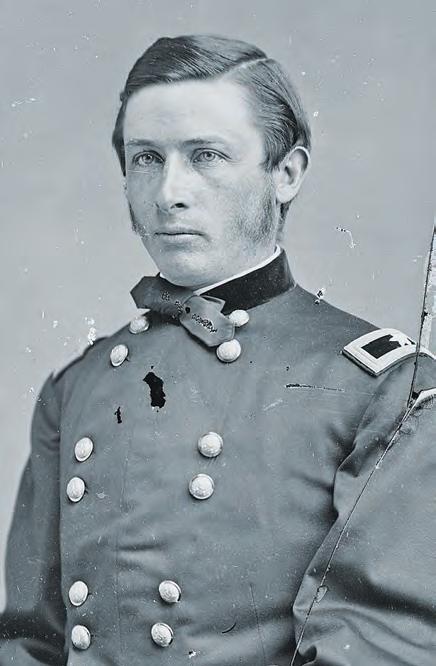
Commanding General Grant was so impressed by Mackenzie’s integrity and devotion to duty that he personally requested the young officer be present at Appomattox and afterward take custody of surrendered Confederate property. Grant praised Mackenzie in his memoirs as “the most promising young officer in the Army.”
After the war Mackenzie reverted to his permanent rank of captain in the Army Corps of Engineers. In 1867 he was appointed colonel of the 41st U.S. Infantry, a newly formed black regiment that two years later was reorganized as the 24th U.S. Infantry. In 1871, with the assistance of President Grant, he assumed command of the 4th Cavalry, and in the space of a few months he transformed it from a lackluster outfit into a hardened, disciplined, highly effective frontier fighting force. Operating out of Fort Richardson, in north-central Texas, Mackenzie relentlessly drove himself and his regiment. By the time Sheridan’s orders arrived transferring the unit south, Mackenzie and his men had completed their fourth major campaign against hostile Kiowas and Comanches in just 18 months.
By late March 1873 six companies of the 4th were encamped in and around Fort Clark, near the Rio Grande. That April Secretary of War William W. Belknap and General Sheridan paid a surprise visit to Fort Clark on what was officially termed an “inspection tour.” But behind the facade of a full field review and a grand ball given in their honor, Belknap and Sheridan engaged in two days of secret meetings with Mackenzie. According to later published accounts, Sheridan wasted no time in making his wishes known.
“Mackenzie, you have been ordered down here…because I want something done to stop these conditions of banditry…[and] killing by these people across
the river,” the general told the colonel. “I want you to be bold, enterprising…[and] when you begin, let it be a campaign of annihilation, obliteration and complete destruction.”
When Mackenzie asked under whose orders and on what authority he was to act, Sheridan pounded the table and exclaimed: “Damn the orders! Damn the authority! You are to go on your own plan of action, and your authority and backing shall be General Grant and myself.…You must assume the risk. We will assume the final responsibility.”
Sheridan’s inference was unmistakable. Mackenzie was to strike at the raiding Indians’ operational base, which meant crossing into Mexico. In the absence of anything in writing, the responsibility for such an action could very well come to rest wholly on his own shoulders.
For a month Mackenzie made secret preparations for his dangerous assignment. He ordered daily drills for officers and men. Special attention was paid to such field tactics as charging by platoon and dismounted skirmishing, maneuvers that would prove especially useful against Indian villag es. In the meantime, Mackenzie’s trustworthy civilian scouts had discovered three
WILD WEST SPRING 2023 57 LIBRARY OF CONGRESS PREVIOUS SPREAD: CLARK ART INSTITUTE; THIS PAGE: GILCREASE MUSEUM
WIWP-230400-MACKENZIE.indd 57 1/26/23 8:35 AM
‘The Most Promising Young Officer in the Army’ That’s how Ulysses S. Grant referred to Ranald Mackenzie in his memoirs. The young veteran of the Civil War earned the respect of men serving under him, while Indians dubbed him “Bad Hand” due to two lost fingers on his right hand.
large Kickapoo, Lipan and Mescalero villages on the banks of the Rio San Rodrigo, some 40 miles inside Mexico. The scouts spent weeks observing the villages, calculating their strength and mapping the terrain. Finally, on the night of May 16 they reported to Mackenzie that most of the warriors of the Kickapoo village had ridden off to the west that morning. The time to strike was at hand.
By 1 p.m. on May 17 the combined command of 360 enlisted men, 17 officers, 24 Seminole scouts and 14 civilians began to move slowly toward the Rio Grande. Mackenzie planned to arrive at the river at sundown so darkness would shroud the column’s movements. Just before reaching the border, Mackenzie halted his men and in a brief address revealed to them their mission. They listened silently as he explained the ordeals and risks that lay ahead: at least 24 hours of hard riding, a major battle to be fought, the possibility of being hanged or lined up against a wall and shot. He did not tell them he was acting without official written orders or authority, or that, even if successful, the raid might cost him his career. Such were Mackenzie’s burdens; his men had plenty enough to worry about.
Sobered to the realities of their mission, it was a grim and determined column of bluecoat raiders that waded their horses belly-deep in the muddy Rio Grande that evening and splashed up on Mexican soil to ride swiftly and silently westward. For many the next 40 hours would be the most arduous of their lives.
In the darkness the troopers blindly followed their scouts on a winding, tortuous route through dense canebrakes, fields of cactus and chaparral, down rocky ravines and over open dusty ground. In the distance they could see the lights of small and isolated ranch houses, but the scouts had chosen routes that detoured far around these places. It was vital to the success of the mission that the countryside be aroused as little as possible to the Americans’ presence.
Throughout the night they rode. Mackenzie wanted to be in position to attack at daybreak, and he pushed the troopers unmercifully. The
heavily loaded pack mules began to fall behind, so Mackenzie impatiently ordered the packs cut loose and abandoned. Onward the command rode, short on supplies and rations, racing against the dawn. “Sleep almost overpowered us, and yet on, on we went,” one officer recalled. “Nothing was heard save the ceaseless pounding of the horses and the jingle of the saddle equipment.”
Shortly before sunup, having ridden 63 hard miles since crossing the Rio Grande (23 more than the straight-line distance), the raiders reached the San Rodrigo just upstream of the Indian villages. Mackenzie called a halt so the men and animals could refresh themselves in the cool water and prepare for the attack. Saddles were re-cinched and girths tightened, carbines were checked and loaded, and sabers were strapped on and adjusted.
Just as dawn was breaking, Mackenzie led his men down the riverbed, using its high banks for cover. Abruptly, the instructions “prepare to charge” were passed down the column. The troopers wheeled and spurred their mounts up the bank into full view of their objective. Below them ran about a mile of gently sloping ground, and at its base the Americans could see huts and wickiups stretched along the winding San Rodrigo. The Kickapoo village was the nearest and largest, while that of the Lipan lay a quarter mile or so beyond, with the Mescalero encampment beyond that. To any early risers in the Indian camps, it must have seemed as if the soldiers had suddenly risen from the earth.

Orders flew up and down the line, and the soldiers deployed into platoons. The gray horses of I Troop, the leading unit, lengthened their gait from a trot into a canter. Then, some 150 yards from the village, the command, “Charge!” rang out, and I Troop broke into a full gallop. “And then,” recalled Mackenzie’s adjutant, 2nd Lt. Robert Carter, “there burst forth such a cheering and yelling from our gallant little column as that
With the Colonel in Mexico
Mackenzie’s regimental adjutant, 2nd Lt. Robert Carter, participated in the action against the Kickapoos and years later recalled the expedition. “I never saw such a magnificent charge as that made by those six troops of the 4th U.S. Cavalry on the morning of May 18, 1873,” he wrote.

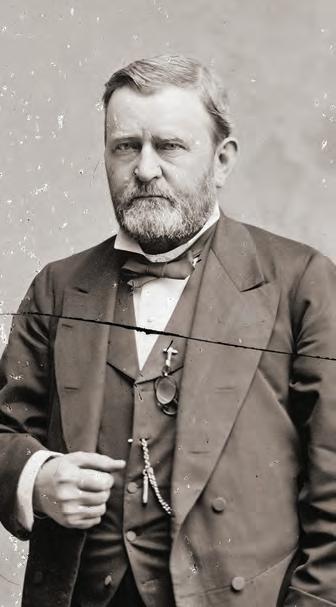
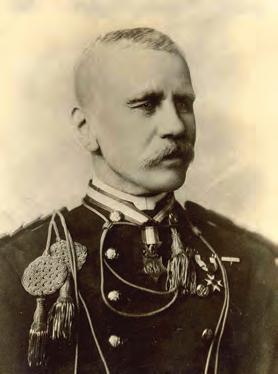
WILD WEST SPRING 2023 58 TOP: LIBRARY OF CONGRESS (2); BOTTOM: CONGRESSIONAL MEDAL OF HONOR SOCIETY ABOVE: JONATHAN CUTRER, CC BY-SA 2.0; RIGHT: PI3.124
WIWP-230400-MACKENZIE.indd 58 1/26/23 8:36 AM
They Quietly Authorized an Invasion of Mexico Bowing to pressure from Texans enraged at repeated cross-border Indian raids, President Grant (near left) in 1873 authorized Lt. Gen. Philip Sheridan (far left) to send Mackenzie’s 4th Cavalry across the Rio Grande.
Kickapoo village never heard before. It was caught up from troop to troop and struck such dismay to the Indians’ hearts that they were seen flying in every direction.…I never saw such a magnificent charge as that made by those six troops of the 4th U.S. Cavalry on the morning of May 18, 1873.”
The Kickapoos were taken completely by surprise. Many of their warriors had left the day before, and those who remained stood no chance. As the men of I Troop slashed through the outer perimeter of their village, the Indians fled in all directions, across cornfields and irrigation ditches, through swampy bogs and out among the stands of cactus and bayonet grass, with the soldiers in close pursuit.
The rest of Mackenzie’s command charged through the village by platoons, volley firing as they went, then wheeling out of the way to reload and prepare to charge again. The rear elements dismounted and began to set fire to the canvas tepees and grass huts. The initial panic of the surprise attack overcome, the surviving Kickapoos—men, women and children alike—fought back like demons. For those involved, the sights and sounds of battle blended. The chaos of forms rushing in all directions through the smoke and dust merged with the crack of carbines and pistols, the screams of women and children, and the shouts of soldiers and warriors to create an awful and unforgettable spectacle.
But in a matter of minutes it was over, and the troopers moved on to the other villages. The Lipan and Mescalero bands had taken flight at the first sound of shots, and the soldiers moved unopposed among their deserted dwellings, setting them afire. Soon all three villages had been razed to smoking embers.
Mackenzie Encore

Following his 1873 Mexican raid Mackenzie continued to operate in his typical fashion. In the winter of 1874–75, amid the Red River War, he led his troopers onto the panhandle plains of Texas in search of hostile Comanches and Kiowas. At Palo Duro Canyon (above) the colonel discovered the Indians’ stronghold and, as he had done at Remolino, devastated it. His troops destroyed hundreds of tepees and tons of supplies and winter provisions, while more than 1,000 Indian ponies were shot to keep them from being recaptured by the hostiles. The starved and half-frozen tribes straggled back to the reservation and surrendered.

In 1876, in the wake of the 7th Cavalry’s debacle on the Little Bighorn, Mackenzie and his regiment transferred to Dakota Territory and within months hounded most of the Lakotas into submission, while Sitting Bull retreated into Canada. Mackenzie then went on to command in succession the Districts of Arizona, New Mexico and Texas. In 1882 the Republican Party included in its platform a commendation for Mackenzie’s “faithful and efficient” services, and the Texas delegation in Congress unanimously advocated his promotion to brigadier general. The promotion came through in October 1882, after Ulysses S. Grant sought it as a personal favor from President Chester A. Arthur.
Unfortunately, Mackenzie was not to enjoy his lofty rank for long. Two months later he fell ill, and in March 1884 the Army retired him, citing the “wounds received and exposure in the line of duty” as the cause of his ruined physical and mental health. On Jan. 19, 1889, Ranald Slidell Mackenzie, perhaps the ablest Indian fighter the Army would ever know, died in his sister’s home on Staten Island, N.Y. He was 48 years old. —A.L.H.
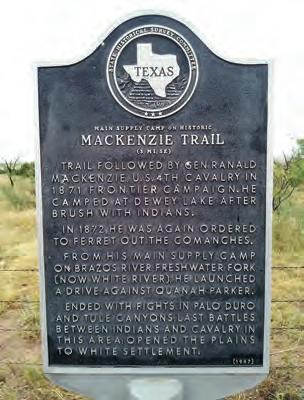
WILD WEST SPRING 2023 59 TOP: LIBRARY OF CONGRESS (2); BOTTOM: CONGRESSIONAL MEDAL OF HONOR SOCIETY ABOVE: JONATHAN CUTRER, CC BY-SA 2.0; RIGHT: PI3.124
WIWP-230400-MACKENZIE.indd 59 1/26/23 8:36 AM
The exact number of Indians killed is not known. Mackenzie counted 19 bodies, but many more must have remained undiscovered in the ditches, beneath the riverbanks and in other hidden places. Forty women and children were taken prisoner, as was Costilietos, principal chief of the Lipans, who was literally roped in by one of the Seminole scouts as he tried to flee through the brush. The soldiers also captured 65 ponies. These were parceled out as a reward to the civilian scouts who had surveilled the villages. Mackenzie’s losses were remarkably light. One soldier was killed in the charge, and two were wounded, one so severely the surgeon had to amputate his arm on the spot.
By 1 p.m. the preparations for the long march home were completed. Travois had been crafted to carry the wounded, and the Indian prisoners had been assigned captured ponies to ride. After a last sweep to assure the complete destruction of all Indian property and stores, Mackenzie and his men started for the Rio Grande.
They soon rode through the nearby town of Remolino, whose villagers met the Americans with sullen scowls and curses muttered in Spanish. Beyond town the scouts wisely chose a more direct route to the border than the one used to reach the Indian villages. Mackenzie’s overriding concern was to get his men across the Rio Grande before the Mexican populace rose against them.
But the men and horses were too exhausted to move with much speed. The constant fear of ambush by overwhelming numbers of Indians or Mexican soldiers combined with fatigue, searing heat and choking dust
Wickiups Stretched Along the River
This model Kickapoo wickiup, the tribe’s traditional grass-covered frame dwelling, was an attraction at the 1904 St. Louis World’s Fair. Three decades earlier Mackenzie’s troopers rode 40 miles into Mexico to destroy adjoining Kickapoo, Lipan and Mescalero villages of such huts along the Rio San Rodrigo.

to make the return trek an agonizing experience. The miles and hours crawled by. Nightfall brought relief from the heat, but for many in the command it marked their third straight night in the saddle, and the need for sleep became almost overpowering. Officers and sergeants used any means at their disposal to keep the men awake and moving. The scouts reported groups of riders on their flanks, but no attacks came. One officer later called it a “long, interminable night of horror, of nightmare.”
Finally, the gray light of dawn revealed in the distance the welcome sight of the Rio Grande. The bone-tired men and horses waded into its refreshing waters, and soon the entire column stood once again on U.S. soil. The troopers made camp, and shortly thereafter a supply train loaded with rations and forage arrived. The command
WILD WEST SPRING 2023 60 HISTORY AND ART COLLECTION (ALAMY STOCK PHOTO) HERITAGE AUCTIONS
WIWP-230400-MACKENZIE.indd 60 1/26/23 8:36 AM
spent the rest of the morning sleeping and feasting. The return to Texas had come none too soon, for that afternoon a large body of Indians and Mexicans appeared on the south side of the river. They hurled challenges and abuse at the troopers and several times appeared ready to attack. But Mackenzie ordered his best marksmen to take positions covering the ford, and by sundown the would-be avengers had withdrawn. After a night of badly needed rest the command marched to Fort Clark at a leisurely pace.
Mackenzie’s raid into Mexico was one of the most demanding and daring missions ever undertaken by the post–Civil War U.S. Cavalry. Mackenzie and his men rode more than 140 miles in 38 hours, violated Mexican sovereignty, attacked allies of the Mexican government, destroyed three large villages and captured 40 prisoners—all without official orders or authority.
The response to the action was immediate and favorable. Sheridan enthusiastically supported Mackenzie, saying, “There cannot be any valid boundary when we pursue Indians who murder our people and carry away our property.” The San Antonio Daily Express was effusive in its praise. “If western Texas had the sole command in electing the next president, [Brevet] General Mackenzie would be the man,” it wrote. “Three cheers for General Mackenzie’s pluck and energy—three cheers for his brave boys!” On June 2 the Texas Legislature passed a joint resolution extending “the grateful thanks of the people of our state and particularly the citizens of our frontier…to General Mackenzie and the troops under his command for their prompt action and gallant conduct in inflicting well-merited punishment upon these scourges of our frontier.” A week later the War Department officially commended Mackenzie for his action.
The fact Mackenzie had attacked villages that did not have their full complement of defenders didn’t seem to faze either American citizens or the government in the least. As many Texans pointed out, such were the very same tactics Indian raiders had employed for decades against isolated farms and ranches on the frontier, so Mackenzie’s actions were wholly justified. Years of cruelty and brutality by both sides had combined to make chivalry on the frontier, if it ever existed, an outdated concept.

Understandably, the Mexican government was less than happy about the raid, but it chose not to turn it into an international issue. Notes were exchanged between the Mexican minister and Secretary of State Fish, and with that mild protest, the matter was dropped.
As for the border situation, Indian raids all but stopped. Mackenzie’s attack had shattered the complacent belief of Mexican tribes in the protection offered by the Rio Grande. Fearing similar strikes, many bands split up and moved into the mountains. The Kickapoos, in exchange for the release of their captive wives and children, agreed to return to the United States. By 1874 more than half the tribe had resettled at Fort Sill in Indian Territory.
Mackenzie’s bold expedition did not prove the final answer to the problem of Indian depredations in southwest Texas, but it did succeed in bringing peace and order to the area for a span of years. It also provided one of the most thrilling exploits in the annals of Indian warfare and made Colonel Ranald Mackenzie and his raiders living legends on the frontier.
Allen Lee Hamilton has taught the history of the United States and Texas for more than four decades and is currently a history professor at St. Philip’s College in San Antonio. For further reading he recommends On the Border With Mackenzie, by Robert G. Carter; The Kickapoos: Lords of the Middle Border, by Arrell M. Gibson; and Bad Hand: A Biography of Ranald S. Mackenzie, by Charles M. Robinson III.
Mackenzie Rides on TV
Such an exciting event as the raid into Mexico surely couldn’t escape the notice of Hollywood script writers. Sure enough, in 1958–59 Colonel Mackenzie and his men again rode forth in the syndicated Western television series Mackenzie’s Raiders. Richard Carlson, perhaps best remembered as the communist-hunting hero of the Cold War–era TV series I Led 3 Lives, played the title role of Colonel Mackenzie for 39 rousing episodes. Operating under secret orders from President Grant and General Sheridan, Mackenzie was to put a stop to both Indian and bandido attacks against the Texas settlements by pursuing the raiders across the Rio Grande if necessary (which, of course, it was in every episode). If caught south of the border, they would be disowned by the U.S. government. Naturally undaunted, the colonel and his men galloped to and fro for several seasons of stealthy attacks and flashing sabers. Each episode closed with a stirring reminder: “Mackenzie’s raiders did ride again…and again, carrying out the secret orders of the president of the United States: Do whatever necessary to clean up the Southwest, make it a decent place for people to live.” —A.L.H.

WILD WEST SPRING 2023 61 HISTORY AND ART COLLECTION (ALAMY STOCK PHOTO) HERITAGE AUCTIONS
WIWP-230400-MACKENZIE.indd 61 1/26/23 8:36 AM
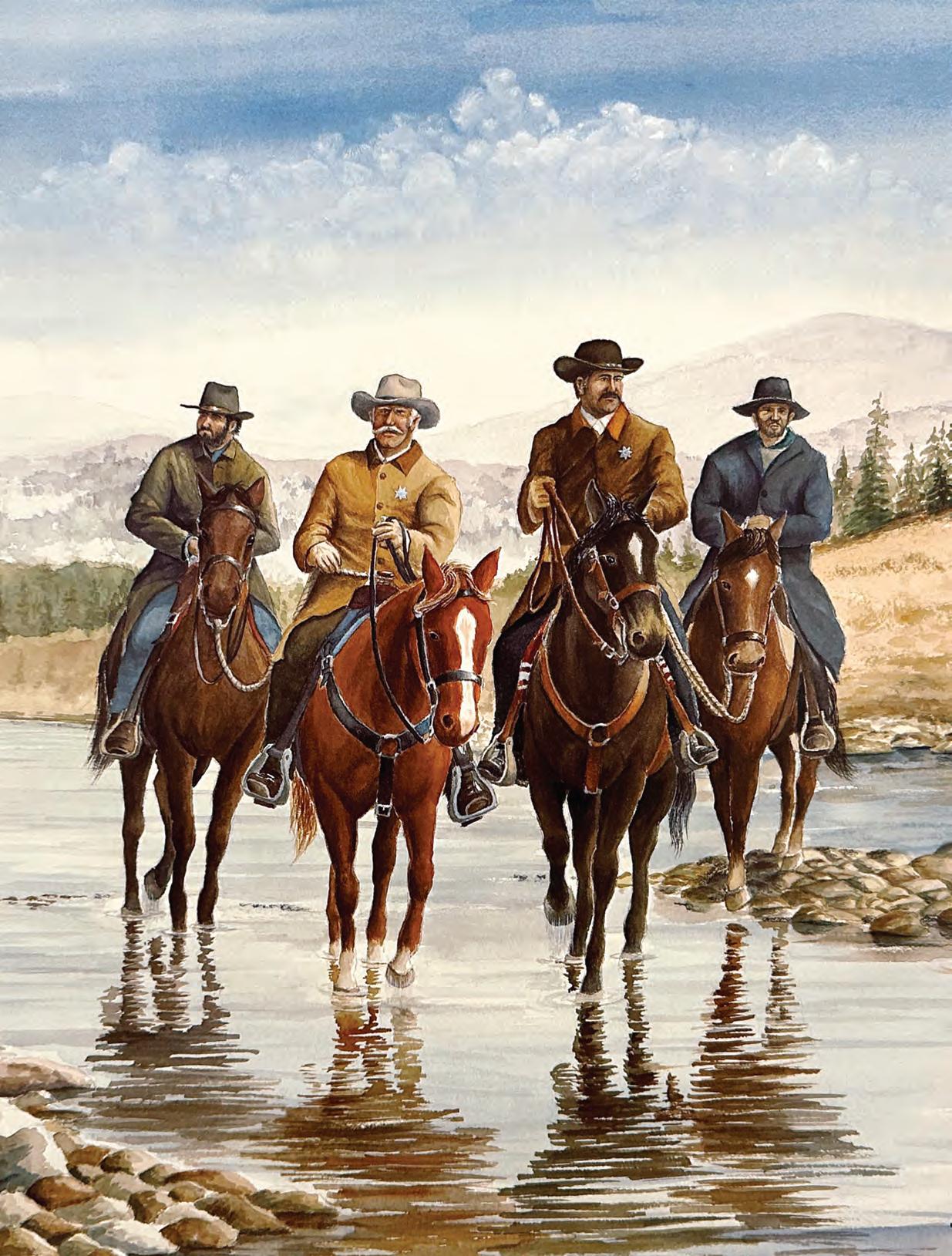
OPPOSITE: DAN MIHALKO; THIS PAGE: UNIVERSITY OF CALIFORNIA LIBRARIES
WIWP-230400-NEWYORKBAR.indd 62 2/1/23 4:46 PM
Two for the Hanging Dan Mihalko’s painting depicts Garfield County, Washington Territory, authorities transporting murder suspects James T. McPherson (at far left) and Ezra Snodderly (at far right) to Dayton for trial in 1883. They and co-conspirator Canada Owenby would pay for the murder of Eli Cummins, each man suffering his own horrible fate.
A Senseless Murder at New York Bar
IN JULY 1882 TWO MEN ENTERED A CABIN ON WASHINGTON TERRITORY’S SNAKE RIVER AND BRUTALLY KILLED SHIPPING STATION AGENT ELI CUMMINS
BY KEVIN CARSON
New York Bar, a sandbar on the Snake River some 20 miles north of presentday Dayton, Wash., is a place of hauntingly stark geological formations carved during the ancient Missoula floods. The Snake winds west from its headwaters in Wyoming’s Yellowstone country through deep canyons across Idaho before flowing into the Columbia River in southeast Washington. Farming flourished along these waterways due to the ancient alluvial soil deposited by ice age floods. Bavarian-born Henry Villard (1835–1900) had a vision to transport wheat and other products from Washington Territory by river and rail, so he built a great warehouse and shipping station on the broad sandbar in northeastern Columbia County. It proved an ideal landing for riverboats offloading and taking on cargo. It was also the site of a notorious murder in 1882.
By that year Villard’s Oregon Railroad & Navigation Co. (OR&N) had completed construction of the warehouse and an attached one-room cabin for station agent Elijah H. Cummins. A Wisconsin native, Cummins had settled with his family just across the border in Oregon and since fallen in love with pretty widow Mary Shelton. He wanted to marry and advance with the OR&N, and the station agent job at New York Bar seemed like a good steppingstone for the ambitious young man.
Mrs. Iva Leland lived along the river a few miles from the bar. Around 2 a.m. on July 26 she woke to the sound of gunfire, peered out a window and saw figures in the distance riding along the riverbank. It was not unusual for sheepherders to fire shots to
keep predators at bay. She returned to sleep unaware the gunshots heralded a gruesome crime.
That morning freighters
Henry Villard
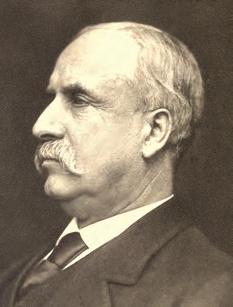
William Suttie and John Butterfield drove a wagon west from Pataha City to the station to pick up supplies. Arriving in the afternoon, they found the warehouse locked and station agent Cummins nowhere around. After calling out and getting no response, the tired freighters decided to sleep through the heat of the day. At 2 a.m. on July 27 they woke to the sound of a clock chiming in the station agent’s cabin. Butterfield entered the cabin alone to a ghastly scene. Cummins lay dead upon his bed, the blankets sodden with blood. Near the woodstove lay an ax caked with blood, gore and human hair. Blows, presumably from the ax, had left gashes across the agent’s mouth and cheek and crushed in the crown of his skull. His killer or killers had also cut the agent’s throat with a knife and shot him six times. Cummins’ own pistol lay on the floor, unloaded and choked with sand. The empty holster hung on the wall behind the bed.
The motive was apparently robbery, as the agent’s coin purse lay empty on the floor, his currency purse lay open and empty on the table, and the cash drawer was open and also empty. Missing, it was later determined, were $1,500 in banknotes drawn from the First National Bank of Walla Walla and gold pieces Cummins was known to have kept in the cabin.
Butterfield ran from the cabin to alert Suttie, and the two hurried off to raise the alarm. Suttie, an adept telegrapher, sent
WILD WEST SPRING 2023 63 OPPOSITE: DAN MIHALKO; THIS PAGE: UNIVERSITY OF CALIFORNIA LIBRARIES
WIWP-230400-NEWYORKBAR.indd 63 2/1/23 4:43 PM
an urgent call for help over the Western Union wire and concisely described the grisly murder scene. Columbia County Sheriff Jacob Hosler, who had just won election to the office, got word and no doubt wondered who could have committed such a heinous slaying.
The sheriff knew that 1882 was proving a rough year for growers. The records of farmers in Columbia and neighboring counties with severe debts, collections and forfeitures numbered in the hundreds. Most of these men were “brush farmers,” doing a little bit of everything to support their families. Wheat was usually a reliable cash crop, along with oats and barley. Good farmers could reap 40 bushels an acre. But stock market speculation had caused drastic losses in wheat markets, and wheat sales were off 30 percent from the previous year’s values.
Adding to farmers’ woes, Villard had recently raised his freight rates, making him and the station at New York Bar a topic of angry discussion among
Bellying up to the Bar
area growers. A farmer on the edge of losing everything just might consider robbery, even murder.
On July 27 a six-man coroner’s jury was impaneled, and Sheriff Hosler put up a reward of $500 for information leading to the identity of the felons. Local lawmen combed for clues at the murder scene, while railroad inspectors and investigators from Pinkerton’s National Detective Agency, hired by Villard, employed early forensics to gather evidence.
Early in the investigation authorities followed several false leads. While they arrested and questioned several parties, all were ultimately released. Finally, a welcome clue in late 1882 led to a suspect, one Canada Owenby, who lived near Pomeroy. A local sheepherder had reported seeing two riders in the vicinity of the station on the night of the murder and described one of the mounts as a mule. A blacksmith in Pomeroy told investigators Owenby’s horse wore ear netting to deter sand flies. Such covers would make its ears appear larger and taller, thus the sheepherder could have mistaken Owenby’s horse for a mule in the darkness. The same blacksmith had changed the shoes on Owenby’s horse after the murder and cleared what he believed was sand from New York Bar from its hooves. Based on that evidence, authorities arrested Owenby. His own behavior spoke to his guilt. Though jailers had shackled the suspect’s hands, he broke free during his arraignment and tried jumping from a second-story window but was quickly subdued. Owenby then offered bribes to his jailers and cellmates to either let him escape or provide false testimony.
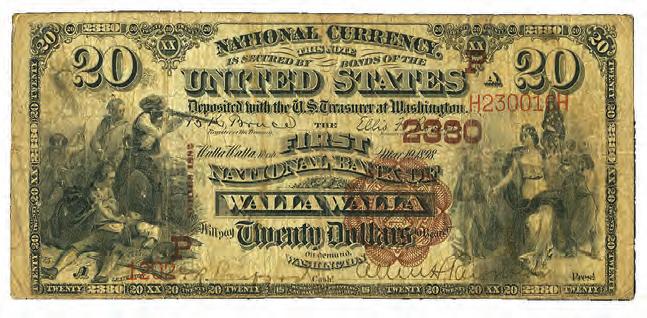
More damning evidence surfaced at his trial, which convened in Dayton, the Columbia County seat, on Wednesday, Jan. 10, 1883. For one, there was literally a smoking gun. Cummins had been shot with a .32-caliber revolver. In the wake of the murder Owenby had purchased .32-caliber bullets from

WILD WEST SPRING 2023 64 TOP: WASHINGTON STATE ARCHIVES; LEFT: HERITAGE AUCTIONS TOP: WASHINGTON STATE UNIVERSITY LIBRARIES; MAP BY AUSTIN STAHL
WIWP-230400-NEWYORKBAR.indd 64 1/26/23 10:01 AM
The steamboat Annie Faxon takes on a cargo of wheat at an unidentified sandbar along the Snake River circa 1890. Damming of the river in the 1960s submerged New York Bar, but it, the Oregon Railroad & Navigation Co. shipping station and agent Eli Cummins’ cabin closely resembled this setup. Notes from the First National Bank of Walla Walla, like the period $20 bill at left, later tied one of the suspects to the murder scene at Cummins’ cabin.
a Garfield County merchant using banknotes from the First National Bank of Walla Walla, the same type of currency missing from the murder scene. Finally, a physician testified to having retrieved human blood from a shirt found at Owenby’s home. Given the case on the evening of Saturday, January 13, the jury deliberated for 23 hours and still could not reach a consensus.
Soon after the jury adjourned that evening, however, Owenby made a startling confession to a fellow inmate. The inmate told the jailer, who informed the sheriff, who in turn summoned the clerk of the court. That evening, in the presence of witnesses, Owenby confessed that he, James T. McPherson and Ezra Snodderly had conspired to rob and kill agent Cummins.
Owenby scribbled out a graphic written confession of the murder at New York Bar:



Doing Business With








McPherson and I left his house about 10 o’clock [on July 25], and we went to New York Bar. Between 1 and 2 o’clock [on July 26] we reached the bar. I remained a little ways behind McPherson when he approached the house, because Cummins had a dog that did not know me. McPherson made friends with the dog and walked up to the house. When McPherson entered the house, I was about 30 yards behind him. McPherson pushed his finger through a hole in the door and raised the latch, then opened the door and commenced firing at Cummins on the bed. McPherson fired five shots. At the first shot Cummins cried out, but I do not know what he said. McPherson continued firing until he emptied the five chambers of his pistol and then stepped back from the door. Cummins then came to the door and closed it. I think I then heard Cummins say something about “water,” and I think he took a drink, but I am not positive. McPherson fired very rapidly. After Cummins closed the door, McPherson found an ax near the house and with it broke in the door. When he struck the door, a knot flew out of it. No shooting was done through the knothole. When the door flew open, I was right behind McPherson, and Cummins recognized McPherson and said, “Mack, what in the world have I done to you?” McPherson answered Cummins and said, “Nothing, G_d d__n you; I’ll finish you!”

About the same time I commenced firing and fired three shots, when Cummins fell to the floor. We, McPherson and I, picked him up and laid him on the bed, and I immediately went out of the room. Just as I commenced firing, Cummins cried out, “My God! Don’t murder me!” I was not in the house after placing Cummins on the bed. McPherson used the knife and the ax after I left the room. He also covered up Cummins and placed a cover over the window while I was outside the building watching. While I was outside, McPherson got the money and kept it all, with the exception of $50, which he gave me at the time, until I came from the mountains a week from the next Saturday, when I met him at McBride’s on my return from the mountains, where he gave me $550. We took from the cabin the shot sack that contained all of the money—McPherson

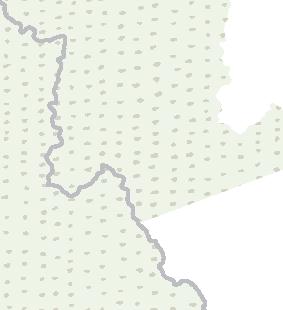
having put the greenbacks in the sack which he took (the greenbacks) from a pocketbook, leaving the pocketbook on the floor. We then immediately left the cabin and rode up the main road.



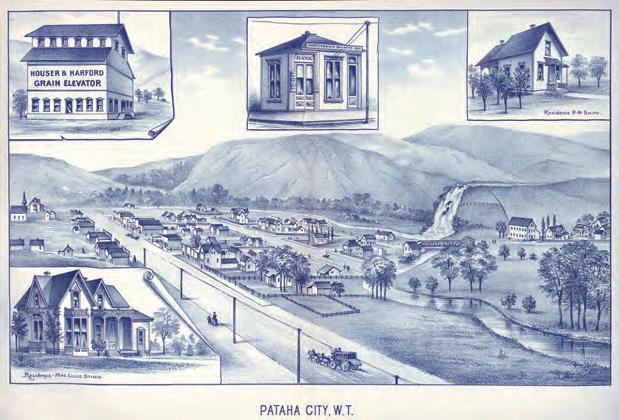
On Sunday, January 14, even as the jury continued its deliberations, warrants were issued for the arrest of Owenby’s accomplices, McPherson and Snodderly (who on the night of the murder had gotten tied up with threshing on the ranch where he was working and had not taken part in the crime). Authorities promptly rounded up the pair and brought them to Dayton for trial. All three suspects were tried separately that summer and convicted of murder. Snodderly and McPherson were sentenced to hang, the date set for August 7. Owenby’s sentencing was delayed.
The public was already fired up over the murder. When word spread in early August that McPherson’s attorneys had procured a reprieve from Washington Territory Governor Wil liam A. Newell and a retrial for their client, the monthslong delay didn’t sit well with many Daytonians. On the evening of August 4 incensed locals began to gather, eventually coalescing into a mob of some 65 well-armed men. Around 10:30 p.m. they marched to the jail and demanded entrance. Hoping to disperse the mob, the half dozen guards inside each fired a warning shot. Undeterred, the vigilantes used crowbars to force

WILD WEST SPRING 2023 TOP: WASHINGTON STATE ARCHIVES; LEFT: HERITAGE AUCTIONS TOP: WASHINGTON STATE UNIVERSITY LIBRARIES; MAP BY AUSTIN STAHL
DAYTON PATAHA CITY WALLA WALLA NEW YORK BAR Wash. Ore. WIWP-230400-NEWYORKBAR.indd 65 2/2/23 4:37 PM
the OR&N Freighters William Suttie and John Butterfield drove a wagon from Pataha City (above) to New York Bar, where they discovered Cummins’ body on the morning of July 27, 1882. Though the bar saw lots of traffic, only one neighbor reported having heard gunshots.
One Lynched, Another Hanged
their way inside. The jailers had time to hide their keys, but the mob simply pried the door from McPherson’s cell. Using files to remove his shackles, they bound his hands behind his back and marched him barefoot to the execution grounds.
As McPherson reached the top step of the unfinished scaffold meant for Snodderly, he turned to the mob and said, “Fellows, I am an innocent man, and God knows it, and I die game.” They were all too happy to accommodate him. Placing McPherson beneath the crossbeam, the designated executioner cinched a half-inch rope noose around the condemned man’s neck. No trapdoor would spring open beneath McPherson. Instead, the executioner tossed the rope over the beam and threw the loose end down to the mob, which hoisted McPherson until his legs dangled 2 feet above the platform. The body swung to and fro, twisting with the rope. Someone hung a lantern close to McPherson’s face so those gathered below could better watch his slow strangulation, which lasted 20 minutes.
Sheriff Hosler had been out of town. As he returned on horseback down Dayton’s main street, he was shocked at the sight of the lynching. Dismounting, he rushed to the scaffold to find McPherson had already died.
Three days later Snodderly was scheduled to walk the same path as McPherson, and officials feared further interference by the vigilantes. So, they promptly summoned a coroner’s jury, which determined “McPherson came to his death by hanging and strangulation, the person or persons causing his death being unknown.” Those unknown, some of whom Sheriff Hosler doubtless recognized, mask or no mask, returned to their homes, places of worship and fraternal organizations.
On August 7 the citizenry, including many of the same men, gathered around the finished scaffold to watch Snodderly’s lawful execution. To ensure no further breach of protocol, Hosler summoned 100 men under the command of territorial militia Colonel George Hunter to form a perimeter around execution ground.
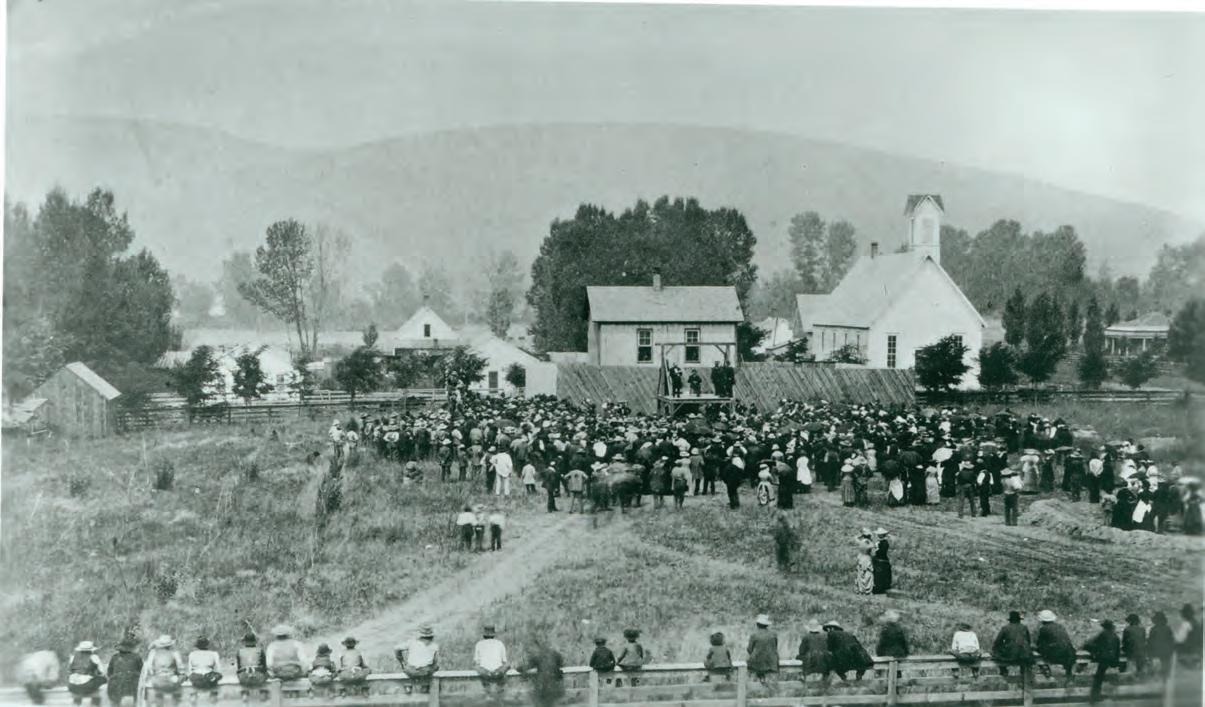
Shortly before noon Snodderly took his place atop the gallows. After kneeling before a chaplain for a short prayer, he stood, was bound, then turned to address the throng of spectators. “Gentlemen,” he protested, “I die innocent.” After s lipping a black hood over the condemned man’s head, the executioner sprung the trap, and the snap of the noose broke Snodderly’s neck. Death was instantaneous.
Of the trio who’d conspired to murder station agent Eli Cummins, only Owenby remained unpunished, though he freely professed his guilt and expressed a wish to be hanged. A chance encounter with another condemned man almost cheated justice.
On Oct. 27, 1883, patrons of Dan Haggerty’s saloon in Prescott, Wash., some 15 miles west of Dayton, witnessed the owner’s senseless murder. Gambler John Elfus frequented the place and liked to throw the dice. Down on his luck that night, Elfus loudly complained that a fellow roller owed him 50 cents and wouldn’t pay up. When he refused to quiet down, Haggerty had his barkeep eject Elfus. Minutes later the gambler returned, threatening to kill the man who owed him money. Once again Haggerty had him tossed out. Fifteen minutes later Elfus reappeared outside the bar, aimed a rifle through a window and shot Haggerty in the neck, killing the latter instantly. Fleeing the murder scene, Elfus hitched a ride to Walla Walla

WILD WEST SPRING 2023 66 BRANDON COLE MARINE PHOTOGRAPHY (ALAMY STOCK PHOTO) TOP: CLARK COUNTY HISTORICAL MUSEUM, CCHM03272.TIF; LEFT: UNIVERSITY OF MICHIGAN LIBRARIES
On Aug. 4, 1883, after McPherson obtained a reprieve and retrial from the governor, vigilantes in Dayton lynched him from the waiting gallows while Columbia County Sheriff Jacob Hosler was out of town. Three days later Daytonians gathered to watch Snodderly’s legal execution (below).
WIWP-230400-NEWYORKBAR.indd 66 1/26/23 10:01 AM
Jacob Hosler
with an unsuspecting wagoner. A constable from Prescott formed a posse and took off in pursuit, apprehended Elfus and took him to the Walla Walla County Jail.
Judge Samuel C. Wingard, the same jurist who had pronounced sentence on McPherson, Snodderly and Owenby, presided over Elfus’ trial in Colfax, Washington Territory, which also ended in conviction. Wingard sentenced Elfus to death by hanging and scheduled his execution for Jan. 15, 1884. The condemned showed little concern at the verdict, as he’d conceived a plan to escape the noose. All he needed was an accomplice.
Meanwhile, to forestall another lynching, authorities in Dayton transferred Owenby from the Columbia County Jail to the Walla Walla County Jail. There he met his cellmate, Elfus. The felons chose Christmas Day 1883 to put the latter’s escape plan into action. That evening, as Sheriff James B. Thompson made his rounds, Owenby and Elfus used bricks pried from their cell wall to stun and then overpower the lawman. The pair then threw the sheriff into the cell they had occupied and locked him in. When the jailer came running to Thompson’s defense, the prisoners turned on him with a pocketknife and sliced the man’s throat from ear to ear, barely missing his jugular vein. Both lawmen survived their grievous wounds. The jailbreakers then stole two horses from the stable of Congressman Thomas Hurley Brents’ groom and rode away.
Within hours a 14-man posse left Walla Walla with instructions to bring back the escaped killers, dead or alive. The next day they learned the fugitives had crossed the border to Cold Springs, Ore., where they’d left their exhausted horses, stolen two more and killed a Chinese man, robbing the body of $140.
On the afternoon of Jan. 2, 1884, Dayton Police Chief Andrew William Robinson received a telegram from the nearby Oregon border town of Milton (present-day Milton-Freewater). “Come to Milton immediately,” it read. “We have Owenby.” Robinson immediately set out southwest on horseback into a blizzard. On arrival in Milton, the chief learned that a farmer’s young son had spotted a man crawling around inside their barn north of town, and the family had welcomed him into their house, assuming he was an unfortunate tramp. To be safe, the farmer also sent word to local authorities. A responding deputy found Owenby, starving and frostbitten from his weeklong exposure. Robinson returned the fugitive to Dayton, where Owenby died six days later in the by then familiar Columbia County Jail.
With that, the third of Cummins’ killers had breathed his last.
On the day of Owenby’s capture, authorities in Milton also caught up to Elfus, who was returned in shackles to the Walla Walla County Jail. This time there would be no reprieve from Governor Newell. The condemned remained composed during preparations for his execution on January 15. Before entering an enclosure that screened the scaffold from public view, he called out to curious onlookers, “Goodbye, boys!” On mounting the gallows, he addressed the small party of witnesses. “I have not much to say,” he said. “I am guilty and will be hanged.” Bizarrely, he also claimed an inner voice had warned him not to shoot saloon owner Haggerty. “If you do the deed,” Elfus said the voice warned, “you will go down there.”
As Sheriff Thompson placed a black hood over Elfus’ head, the condemned asked forgiveness for having assaulted the sheriff during the Christmas Day jailbreak with Owenby. “I hope you don’t blame me,” he said. “All I wanted was to get away.” The sheriff nodded. Then Thompson sprung the trap, Elfus fell and the noose snapped his neck. Twelve minutes later his
Eternal Rest Be Dammed
When Lower Monumental Dam was being built on the Snake River in the 1960s, engineers determined it would flood New York Bar, so dutiful Daytonians moved Elijah H. Cummins’ remains to the city cemetery. Unfortunately, they reversed his first and middle initials on his marker.

heart stopped beating. So ended the life of a man who’d killed over a petty 50-cent disagreement.
By then Villard’s fortunes had waned. Having spent more than anticipated on his rail network to the Pacific, he went into financial collapse and was forced to resign the presidency of the Northern Pacific Railroad. The Jan. 5, 1884, edition of Dayton’s Columbia Chronicle noted he was suffering from nervous prostration. A few years later, with backing from German capitalists, a resurgent Villard would again secure the directorship of the Northern Pacific.
Eli Cummins was buried near his station on New York Bar, and Mary Shelton was known to visit his grave. She never remarried. In 1966, when water levels rose on the Snake River during construction of the Lower Monumental Dam, officials reinterred his remains in a plot in the Dayton City Cemetery.
Unlike Villard, Walla Walla banker Levi Ankeny went to great lengths to keep his farm customers afloat, even leveraging his personal assets. In the wake of Owenby’s death he wrote, “Thus the tragedy of New York Bar was closed, and it was a clean sweep for justice.”
Kevin Loren Carson, based in Troy, Idaho, often writes about the period of westward expansion. For further reading he recommends Legal Execution in the Western Territories, 1847–1911, by R. Michael Wilson; Lyman’s History of Old Walla Walla County, by William Denison Lyman; and An Illustrated History of Southeastern Washington, by Frederic Ambrose Shaver.
WILD WEST SPRING 2023 67 BRANDON COLE MARINE PHOTOGRAPHY (ALAMY STOCK PHOTO) TOP: CLARK COUNTY HISTORICAL MUSEUM, CCHM03272.TIF; LEFT: UNIVERSITY OF MICHIGAN LIBRARIES
WIWP-230400-NEWYORKBAR.indd 67 1/26/23 10:01 AM
Tracking the History of Mile-High Railroads
RIDGWAY, COLORADO, WAS THE BIRTHPLACE OF THE RIO GRANDE SOUTHERN, AND THE RIDGWAY RAILROAD MUSEUM CELEBRATES THAT FACT
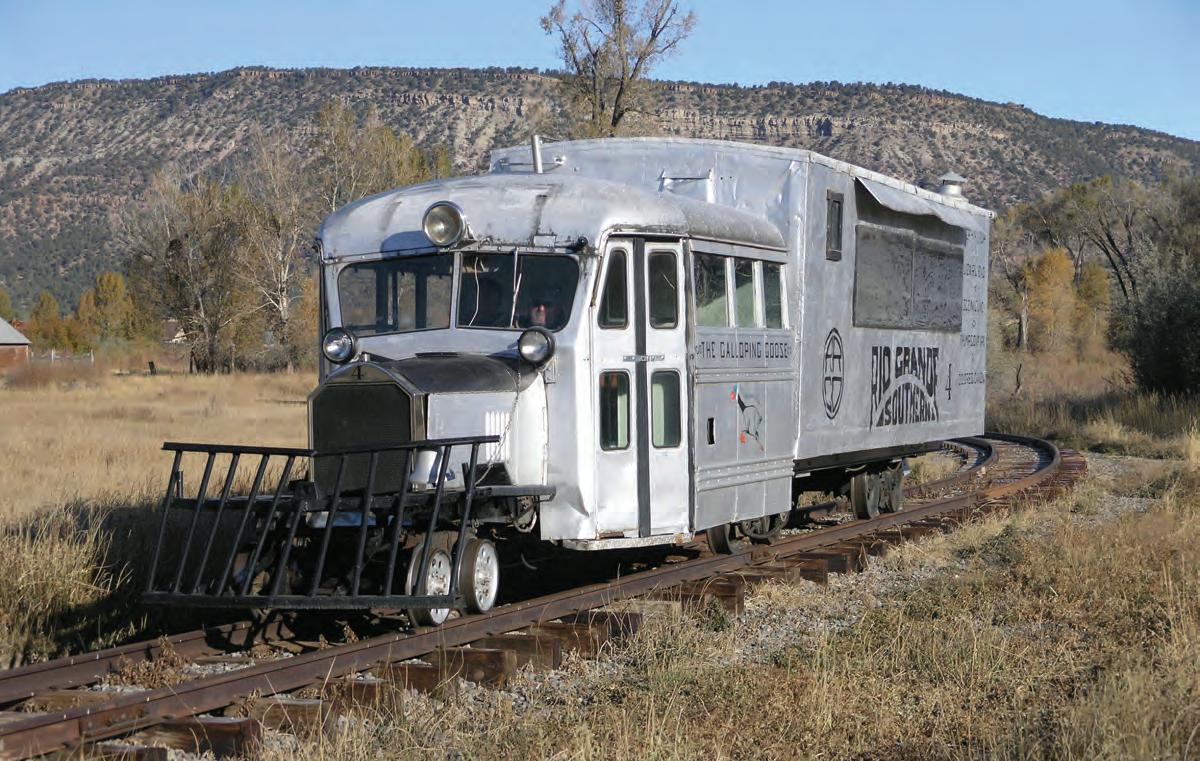 BY LINDA WOMMACK
BY LINDA WOMMACK
Ridgway, a town of just over 1,000 souls along the Uncompahgre River in southwest Colorado’s San Juan Mountains, is rooted in railroad history. The townsite was established in 1890 by business partners Otto Mears and Fred Walsen at the northern terminus of Mears’ Rio Grande Southern Railroad (incorporated in 1889), where it met the existing Ouray Branch of the Denver & Rio Grande Railway (later Denver & Rio Grande Western Railroad). The Rio Grande Southern ran from Durango to Ridgway, which was named for Robert M. Ridgway, the construction superintendent of the new railroad. As the birthplace of the RGS, the town was the natural site for the Ridgway Railroad Museum.
Russian immigrant Otto Mears, who turned some of his toll roads into narrow-gauge railroad beds and became known as the “Pathfinder of the San Juans,” built the 21.5-mile Silverton
Railroad, from Silverton to the mines up in Red Mountain Pass, in 1887–89. He followed that up by building the Rio Grande Southern to transport silver produced by the mining communities of Ouray, Telluride, Ophir and Rico, as well as coal from Porter to the smelter in Durango. The RGS railbed was an engineering marvel, at 162 miles long with more than 140 high trestles and bridges and such unusual features as the celebrated Ophir Loop. Alas, the instant success of Mears’ railroads didn’t last long, due to the Panic of 1893. The resulting national depression shuttered most silver mines out West. The Silverton Railroad made almost no money after silver prices dropped and mines closed, and the line was dismantled in 1926. The RGS hung on and continued to operate through 1951, partly due to the success of a fleet of unique automobile-based railcars known as “Galloping Geese.” Nearly a half century later,
WILD WEST SPRING 2023 68 JIM PETTENGILL (4)
COLLECTIONS
WIWP-230400-COLLECTIONS.indd 68 1/20/23 1:52 PM
A highlight for visitors to the Ridgway Railroad Museum is a ride around the grounds on Galloping Goose No. 4, one of seven 1930s-era cars built around automobile bodies and used to carry the mail, freight and a few passengers.
in 1998, the Ridgway Railroad Museum was born with the mission to explain and interpret the role and significance of railroads in the region.
In its rail yard the nonprofit, all-volunteer museum displays a dozen restored or re-created railcars from the heyday of the RGS and D&RG. Every Saturday between May and October visitors are treated to rides on a half-mile loop track aboard RGS Motor 1, a prototype for the Galloping Geese. Among the painstakingly restored cars is D&RGW Caboose No. 0575. Be sure not to miss the re-created RGS inspection car originally built in 1913 out of a 1910 Model T Ford and destroyed in a 1925 wreck. This working copy captures its full glory.
Passenger coach No. 252 was built for the D&RG in 1880 and sold to the RGS in 1891. It carried 48 passengers in flip-over “Buntin” seats and offered the luxuries of a restroom and two coal-burning stoves for heat. It is the only fully restored RGS coach in existence, with period-correct seats, white ash interior panels and a gas chandelier.
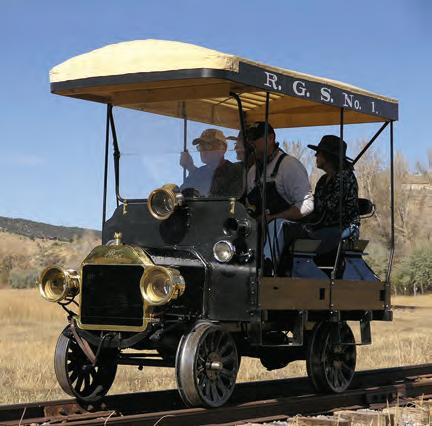
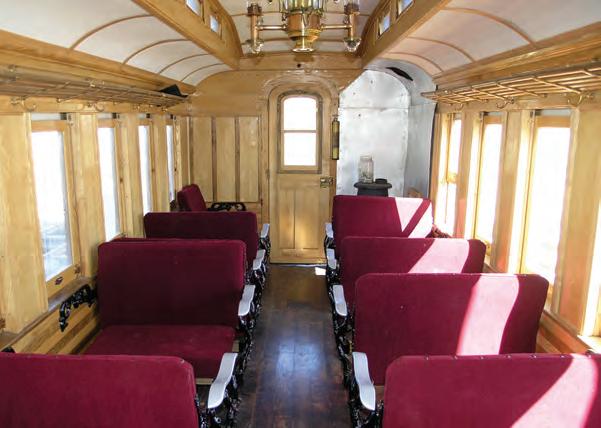
Perhaps the most interesting railcar is one of the aforementioned 1930s fleet of seven Galloping Geese, which were built around automobile bodies and used to carry the mail, light freight and a handful of passengers. Galloping Goose No. 4 (on part-time display at the museum between September and late May) underwent four years of restoration in Ridgway before being put to the test. “We ran it for four days on the Durango & Silverton Narrow Gauge Railroad as part of its Railfest event in 2015,” says Jim Pettengill, vice president of the Ridgway Railroad Museum board. “It was the first time it had carried passengers through these mountains in 64 years. It belongs to the Telluride Fire Department, and they display it in the summer, then we store it here under cover in the fall and winter, using it for rides in May, September and October of each year.”
Be sure to check out the historic D&RGW depot building. Among other exhibits are a diorama of the circa 1948 Ridgway rail yard, a rare Otto Mears silver filigree railroad pass, models of railcars that once operated in the region and a passel of period photos. The depot also houses the Ouray County Ranch History Museum, which plans to move into its own building, allowing the Ridgway Railroad Museum to greatly expand its exhibits. An extensive research library, which preserves hundreds of books and more than 250,000 pages of RGS company documents, is off-site, though some archival material is available on the museum website. Railroad aficionados can also pick up fact-filled books published by the museum, namely The History and Restoration of Galloping Goose No. 4 and Narrow Gauge Railroading in the San Juan Triangle
The Ridgway Railroad Museum is at 200 N. Railroad St. Admission and rides are free. For more information visit ridgwayrailroadmuseum.org.
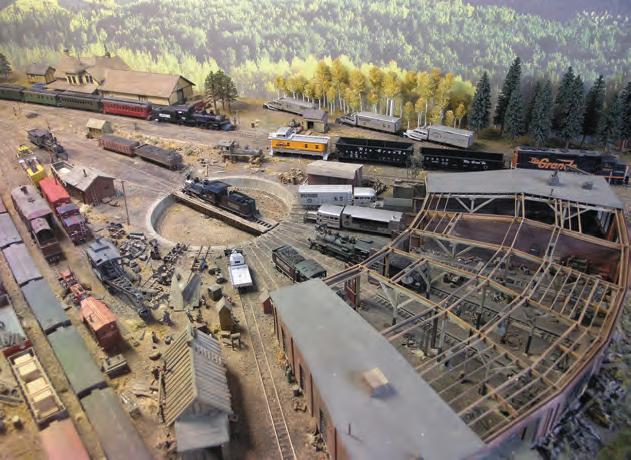
WILD WEST SPRING 2023 69 JIM PETTENGILL (4)
WIWP-230400-COLLECTIONS.indd 69 1/20/23 1:52 PM
Clockwise from top left: The restored interior of RGS passenger coach No. 252 includes period correct seats and a gas chandelier; fashioned around a Model T Ford engine and transmission, the replica inspection car takes visitors on a spin around the half-mile loop track; a diorama captures Ridgway’s busy rail yard and depot circa 1948.
GUNS OF THE WEST
Bullish on Bullards
THOUGH THESE SINGLE-SHOT AND REPEATING RIFLES WERE RENOWNED FOR THEIR QUALITY, THEY WERE ONLY EVER PRODUCED IN SMALL NUMBERS
BY GEORGE LAYMAN
Winchester, Remington and Marlin had practically cornered both the single-shot and repeating rifle markets by the time James H. Bullard patented one of the smoothest lever-action rifles ever manufactured. Born in Poultney, Vt., on May 14, 1842, Bullard was a mechanical genius who patented numerous devices (more than 100 from 1872 to his death at age 71 on March 26, 1914), including a steam-driven automobile, and was a far more talented inventor than a businessman. A disabling childhood leg injury kept him out of the Civil War, but he worked for a couple of machine companies until 1874, when he became a master mechanic for Smith & Wesson. By early 1882 in Springfield, Mass., he’d established J.H. Bullard & Co., which that May became the Bullard Repeating Arms Association and on Oct. 11, 1883, the Bullard Repeating Arms Co. Two years later, intent on pursuing his other inventions, Bullard left active management of the company, which dissolved in 1891.
The Bullard rifle is somewhat of an outlier, given the company offered both a repeating model, patented on Aug. 16, 1881,

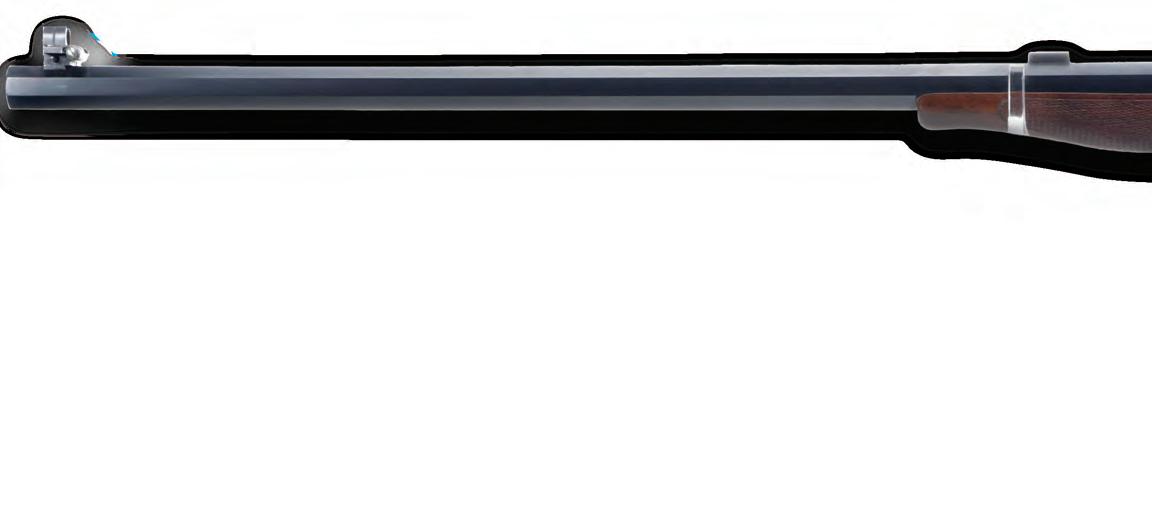
and a wholly distinct single-shot model, patented on July 6, 1886. Both utilized a glassy smooth, gear-driven action that has never been equaled in ease of operation. The Bullard repeater, a precision instrument of exceptional quality, was unique in that a user loaded it from bottom of the frame. It came in two frame sizes. The smallframe models were chambered for the .3240 Winchester/Marlin and .38-45, the large for a Bullard-designed cartridge in the more powerful .40-60, .40-75, .45-70 and .45-85 calibers. On special order the latter was also available in .50-90 and .50-115. A military musket in .45-70 was another choice, as well as a carbine version with a 22-inch barrel. Overall, the company produced an estimated 10,600 to 12,000 repeating rifles.
Structurally speaking, the single-shot Bullard was an altogether different rifle, with a comparatively petite, thin frame. That said, it was every bit the repeater’s equal in quality. Its manufacturing details are largely unknown, but the single-shot model was produced in far smaller quantities. It was offered in .32, .38, .45 and .50 caliber (the last is the scarcest today and
In the period portrait at center a pair of cowboys show off their arms, including a Bullard repeater like the one above. Patented on Aug. 16, 1881, it came in two frame sizes and multiple calibers and featured a smooth, gear-driven action. It must have set its buyer back and remains highly collectible on today’s antique gun market.

WILD WEST SPRING 2023 70 TOP: ROCK ISLAND AUCTION; LEFT: COWAN’S AUCTIONS; BOTTOM: HERITAGE AUCTIONS RIGHT: GEORGE LAYMAN COLLECTION
WIWP-230400-GUNS.indd 70 1/20/23 1:53 PM
Patented
brings a hefty premium), though one could purchase a model with an interchangeable barrel, such as the one pictured above. This particular rifle was custom converted to the rimfire .22 long rifle cartridge, which was not in the original caliber offerings, though it does have the Schuetzen style, or Swiss, butt plate offered by the Bullard factory. Like many other popular guns of the day, the Bullard was available in virtually any configuration special ordered by the customer.
By 1884 San Francisco–based Curry & Bros. was selling the repeating rifle, and within a few years Bullard became known throughout the West. Theodore Roosevelt purchased and used a special order six-shot express model in the powerful .50-115 caliber. The $35 price tag in 1886 (roughly $1,100 in today’s dollars) for a plain version without checkered stocks or special sights was higher than many could afford. Those who did shell out felt they got their money’s worth. Montana hunter William Alonzo “Doc” Allen was among the latter. Once a staunch Winchester owner, he switched over to the Bullard in the late 1880s. Reflecting on his adventures in 1903, he stated, “Death had stared me in the face many times before, in many different forms, and the old Bullard had never been found wanting.”
Cost, however, ultimately did help do in Bullard
Repeating Arms. The very complex internal designs of both the Bullard repeater and the Bullard single shot were as fine as Swiss watches. Competing firearm companies sold their rifles at considerably lower prices. For instance, the Winchester Model 1866 lever-action repeating rifle went for $19.50, while Marlin-Ballard and Maynard rifles
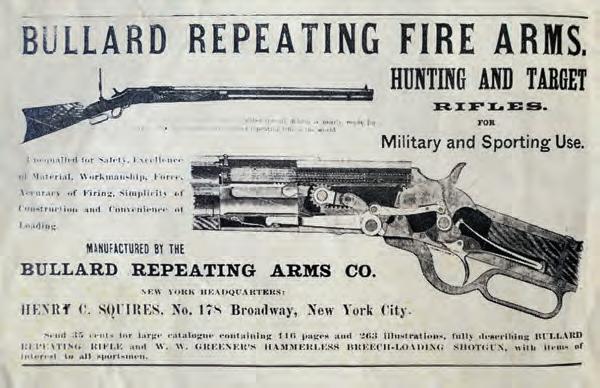
were similarly priced. Bullard certainly outdid other manufacturers when it came to design and craftsmanship, and the company distributed a handful of catalogs and brochures, but it was never big on mass production or standardization. As with any advance in technology, timing is everything, and Bullard’s superb rifle line just couldn’t keep up with companies that had mastered the art of mass production, quality and efficiency rolled into one at prices to meet the needs of not only the wealthy but also the working people of the day. Having owned at least two different Bullard rifles, this writer can appreciate why they commanded a high price in the late 19th century and why they still do on today’s antique firearms market.
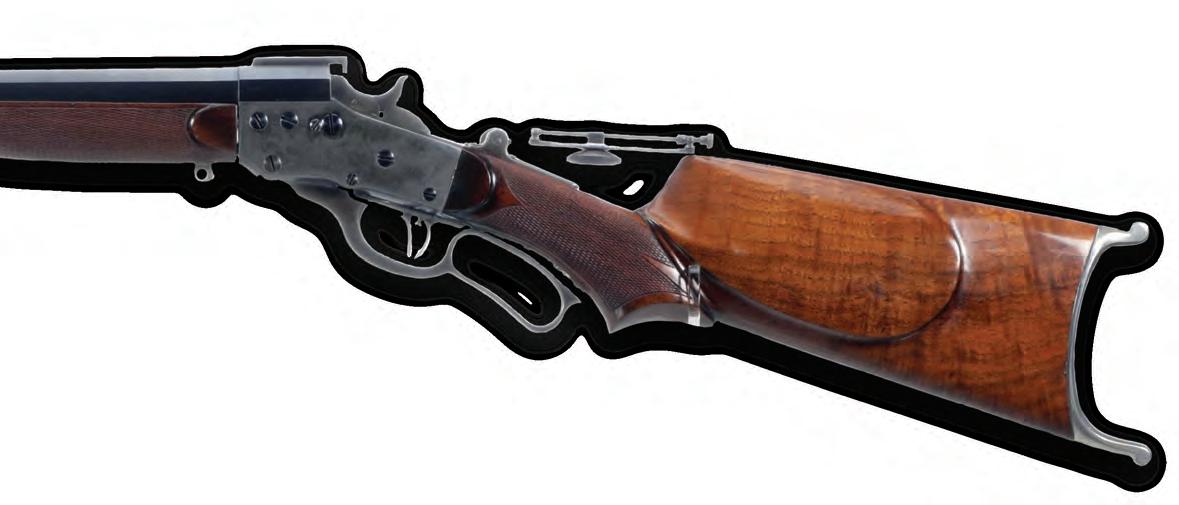
WILD WEST SPRING 2023 71 TOP: ROCK ISLAND AUCTION; LEFT: COWAN’S AUCTIONS; BOTTOM: HERITAGE AUCTIONS RIGHT: GEORGE LAYMAN COLLECTION
Both the Bullard repeater and the Bullard single shot were as fine as Swiss watches
Vermont-born mechanical marvel James H. Bullard filed more than 100 patents in his lifetime, including his namesake repeating and single-shot rifles. But by the time he entered the crowded firearms field in 1882, such brands as Winchester, Remington and Marlin had big head starts on him.
WIWP-230400-GUNS.indd 71 1/20/23 1:53 PM
on July 6, 1886, Bullard’s singleshot rifle was offered in .32, .38, .45 and .50 caliber. The one here came with an interchangeable barrel and was custom converted to the rimfire .22 long rifle cartridge. Note its relatively petite frame, custom checkered stock, tang sight and Schuetzen style, or Swiss, butt plate.
GHOST TOWNS
Keystone, Montana
THE MINING TOWN WENT THROUGH SEVERAL NAME CHANGES, AND AMID PROHIBITION ONE WILY ENTREPRENEUR FOUND COPPER INDISPENSABLE
BY TERRY HALDEN
In the summer of 1887 five prospectors were exploring Spring Gulch (present-day Keystone Creek), a southwesterly flowing stream from Keystone Mountain to the Missoula River (today known as the Clark Fork) in Montana Territory. A few miles upstream they discovered an abundance of silver galena and immediately registered claims in Missoula. They registered the Iron King and Iron Queen on August 3, the Silver Glance on the 4th and the Ivanhoe and Keystone on the 5th. The five added the name of Phil O’Rourke, who had located the Bunker Hill group of claims in Idaho Territory and grubstaked the 1887 prospecting expedition for a lion’s share of the profit. Word got out, and others stampeded to the area. Though several registered claims, most ended up with nothing but holes in the ground, except E.W. Parks, whose O.R. & N mine yielded ore assayed at 150 ounces silver and 58 percent lead. He sold a major share to Dr. J.M. Hargrave, and two years later the partners sold out to Helena investors, who formed the O.R. & N. Mining Co. The investors assumed the ore veins extended 2 miles west to Slowey Creek, another stream draining Keystone Mountain to the Clark Fork, but initially their only successful mine on Slowey was the Little Pittsburgh.
Meanwhile, on Spring Gulch, with the winter of 1887 imminent, optimists framed up cabins, and William Bryan filled the miners’ needs by opening an outdoor saloon. He freighted in
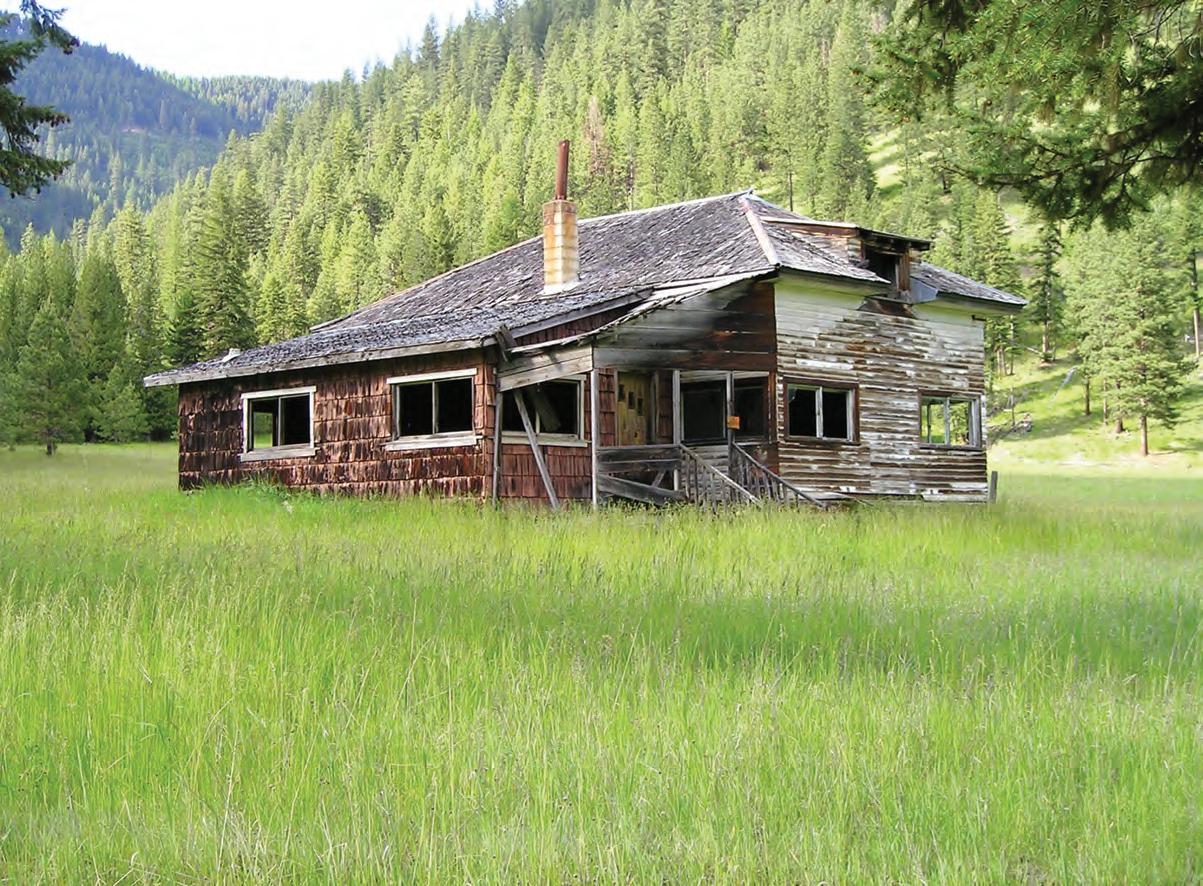
two kegs of whiskey and set them up under the protective branches of an accommodating tree. Bryan provided no bar, no tables, no chairs, no stools and no glasses; miners brought their own tin cups and were served a shot straight from a spigot in the barrel. With profits from his whiskey operation Bryan built a general store, relying on A.P. Johnson’s freight line to supply him with groceries and stock from Missoula, 60 miles to the southeast. Soon after came a competing saloon, a butcher shop, a blacksmith shop, a barbershop, a restaurant and boardinghouse run by Nellie Neal and another owned by Daniel McLean and his married sister Kate McDowell. The town was first known as O’Rourke, but in 1890 its name changed to Carter to honor Thomas H. Carter, the man instrumental in securing a post office that year with Bryan as postmaster. At the time Carter was the new state of Montana’s first representative to Congress, and he later served two terms as a U.S. senator (1895–1901 and 1905–11).
The population of Carter would peak above 300 in the 1890 federal census. Meanwhile the original five prospectors were doing well. In 1891 one sold his eighth interest in the mining operations for $7,500 to O’Rourke, and the next year the remaining owners formed the Keystone & King Mining & Milling Co. But the mines fell short of expectations, largely due to the 1893 devaluation of silver. The O.R. & N soon shut down operations, while the struggling Keystone & King struggled to
WILD WEST SPRING 2023 72 TERRY HALDEN TOP: MINERAL COUNTY HISTORICAL SOCIETY; RIGHT: TERRY HALDEN
Little remains of the mining town known variously as O’Rourke, Carter and, finally, Keystone. The period schoolhouse above, like other structures, lies on private land.
WIWP-230400-GHOSTTOWNS.indd 72 1/20/23 1:54 PM
survive, borrowing money from local merchants who also felt the pinch until merchant Bryan and others forced the company into bankruptcy. The post office closed in 1894.
That March the Keystone & King properties sold at a sheriff’s auction for $1,736.55. The new owner, Bland Mining & Milling Co., was debt free but lived up to its name “Bland” by doing little mining. In October 1900 it did patent the Keystone, Iron King, Iron Queen and Ivanhoe mines. Rumors Bland was trying to unload its properties in Spring Gulch created a minor revival in the district, and the post office reopened in 1902. In 1905 the company finally sold out for $10,000 to Pennsylvania investor Nelson Weddle Jr., who created the King & Queen Mining Co. The company installed mill equipment to “re-mine” the slag heaps, but little new mining was done, and the post office again closed in 1904.
Mining in the area remained relatively quiet until 1911 when prospectors Lou McHaffey and Sam J. Wilson discovered gold. The Carter Mining & Milling Co. soon formed, offering shares at 20 cents each. The company bought unpatented claims and consolidated the Iron King and Iron Queen to become the Nancy Lee. Enough miners arrived to warrant another reopening of the post office. As a town near Fort Benton had taken the name “Carter” in the interim, the Mineral County town changed its name a final time to Keystone. Mining in the district continued steadily until 1925 and then on an off-and-on basis till the 1960s.
Meanwhile, things were picking up at the Little Pittsburgh and other mines on Slowey Creek. The St. Mary, discovered by James McBride in 1895, was among the abandoned prospect holes, but in 1902 Edward Boyce and Dennis Reardon relocated the mine and renamed it the Emmet. It operated
for more than 20 years, though how profitably is uncertain. By 1925 it had been abandoned, so John E. Hartman built a cabin across the adit and filed a claim on the mine. He soon announced discovery of a seam of copper ore the previous owners had overlooked, and he was successively mining it himself and trucking the ore to smelters in Idaho. Harmon’s bank account grew accordingly until 1930 when he quit the mine, took out all his money, loaded his possessions on his truck and disappeared. After Harmon’s mysterious departure, neighbors inspected his mine and discovered his “copper mining” equipment consisted of all the copper tubing needed to compose a still. During Prohibition, which would soon end, he had supplied eastern Idaho with distilled alcohol. His mine, aptly renamed the New Idea, was undoubtedly the most productive mine on Slowey Creek. Today a trip up Keystone Creek begins on a dirt road 5 miles northwest of Superior. While some derelict cabins are visible, most are on private land. Of the mines there is little evidence.

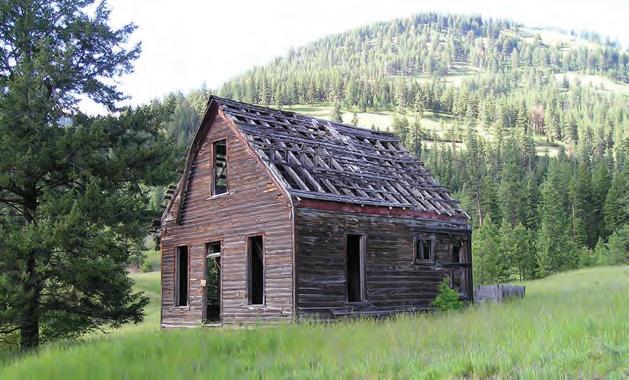
WILD WEST SPRING 2023 73 TERRY HALDEN TOP: MINERAL COUNTY HISTORICAL
SOCIETY; RIGHT: TERRY HALDEN
WIWP-230400-GHOSTTOWNS.indd 73 1/20/23 1:54 PM
Top: The town was known as Carter in 1890 when the federal census recorded a peak population of some 300 souls. Little evidence survives of the mines, and only a few cabins stand.
Must See, Must Read
COLORADO NATIVE LINDA WOMMACK’S TOP BOOKS AND FILMS
Centennial (1974, by James A. Michener)
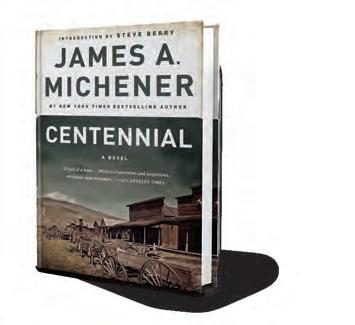
Though billed as historical fiction, the narrative is based on fact. Michener’s novel relates the evolution of Colorado, a saga with many episodes, characters and a murder or two thrown in. His critically acclaimed book brought new and much needed attention to the state just in time for its centennial celebration. Admitted to the Union on Aug. 1, 1876, Colorado is nicknamed the “Centennial State.”
Stampede to Timberline
(1949, by Muriel Sibell Wolle)
In the 1940s fine artist Muriel Sibell Wolle traveled to and sketched dozens of fading Colorado towns and mining camps. In each she interviewed longtime residents, later recounting their stories alongside her artwork in this book. Wolle’s delightful sketches are all that remain of some of these ghost towns.
From Sand Creek to Summit Springs
(2022, by Linda Wommack)
Centennial
By James A. Michener, 1974
Written by yours truly, this is the first full-length book documenting every Indian battle fought in Colorado. It sheds light on men and women involved in or affected by the fighting. From the ashes of the Sand Creek campsite Mo-chi raises her father’s Hawken rifle and declares, “Today I will become a Cheyenne warrior.” Susanna Alderdice is killed at the Battle of Summit Springs. Victims of “collateral damage,” four German sisters struggle to survive their captivity. After being taken hostage, Josephine Meeker advocates for the Ute people until her dying day. Their stories are frightening, tragic, heroic and courageous.
Doc Holliday: The Life and Legend
(2006, by Gary L. Roberts)
Doc hailed from Georgia and sided with the Earp brothers in Tombstone, Arizona Territory, but he also became a Colorado legend, spending time in
Leadville, Denver, Trinidad, Pueblo and Glenwood Springs, where he died. Roberts, who in 2019 received the Wild West History Association’s lifetime achievement award, splendidly documents John Henry “Doc” Holliday’s life. From his early childhood in the South to his role in the 1881 gunfight near the O.K. Corral to his final days in Colorado, Doc was a fascinating character, and this is his definitive biography.
Silver Queen: The Fabulous Story of Baby Doe Tabor (1950, Carolyn Bancroft)
In her most popular work Denver-based historian Bancroft introduced readers to one of the state’s most interesting figures. The veracity of the author’s work has since come under fire, but Silver Queen first opened this writer’s eyes to Colorado’s rich history. I was 8 years old when I spent my allowance money on this little book in a gift shop in Leadville, and it was the subject of my first book report in the third grade.
Movies
Centennial (1978–79, on DVD)
In the late 1970s Coloradans got to watch the characters and narrative of James Michener’s Centennial come to life as a TV miniseries, starring Robert Conrad, Richard Chamberlain, Barbara Carrera, Lynn Redgrave, Brian Keith and Alex Karras, among others. The compelling 12-episode production spans more than 200 years of war, romance, profiteering, cattle drives, politics, murder and revolution in what would become Colorado, the “Centennial State.” Statewide filming locations included Bent’s Old Fort, Rocky Mountain National Park, Central City and Denver.
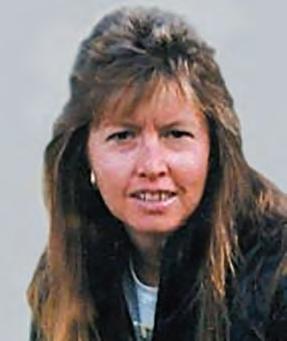
True Grit (1969, on DVD and Blu-ray)
Based on the Charles Portis novel, this classic Western stars John Wayne as U.S. Marshal Reuben J. “Rooster” Cogburn, the only role to garner “Duke” an Academy Award. Co-stars include Kim Darby and Glen Campbell. Much of True Grit was filmed in and around Ouray, Colo. The Ross family ranch and McAlester’s store are both off Colorado 62 near Last Dollar Road. The field in which Cogburn faces down Lucky Ned Pepper’s gang is Deb’s Meadow, near Owl Creek Pass. The hanging scene was filmed at Hartwell Park in Ridgway, as were many street scenes.
Butch
Cassidy and the Sundance Kid
(1969, on DVD and Blu-ray)
Butch and Sundance rob the historic Durango & Silverton Narrow Gauge Railroad more than once in this entertaining Western buddy film based
WILD WEST SPRING 2023 74 REVIEWS LINDA WOMMACK
WIWP-230400-REVIEWS.indd 74 1/20/23 1:57 PM
loosely on fact. In real life the outlaws robbed the Union Pacific. Butch (Paul Newman) and Sundance (Robert Redford) make their desperate jump into the Animas River at the Trimble Bridge near Durango. Other scenes were shot in Silverton and in Telluride, where Cassidy robbed his first bank on June 24, 1889.
Conagher (1991, on DVD)
Sam Elliott and real-life wife Katherine Ross star in this made-for-television film based on Louis L’Amour’s 1969 book. The national forests of Arizona provide the backdrop for many scenes, but two Colorado filming locations stand out— the Royal Gorge of the Arkansas River (west of Cañon City) and the since closed Western theme park/movie set Buckskin Joe, which also pops up in True Grit (1969), The Cowboys (1972) and The Sacketts (1979).
The Duchess and the Dirtwater Fox (1976, on DVD)
This playful Western romantic comedy starring Goldie Hawn and George Segal was shot in the mountain mining town of Central City, Custer County’s picturesque Westcliffe and locations in Fremont County. A wonderful scene in which the pair floats down a river was filmed on the Arkansas River near Salida.
REVIEWS
The Man Who Helped Collar the Kid
Billy the Kid—“unquestionably New Mexico’s bestknown citizen, past or present,” note authors Kurt House and Roy B. Young—is a name that flavors this book and so many others the way chile verde does Southwestern cuisine. But Chasing Billy the Kid is far more than another Kid book or, for that matter, another book featuring Pat Garrett, the lawman best known for chasing Billy, catching him at Stinking Spring in December 1880 and shooting him down in Fort Sumner in July 1881. House and Young, both members of the Wild West History Association (WWHA), argue that unsung lawman Frank Stewart co-led the posse that caught Billy and gang at Stinking Spring. Furthermore, they contend, that recognition was stolen from Stewart “by glory-seeking associates Garrett, Charlie Siringo and certain lesser lights” in the hunt for the infamous outlaw also known as William H. Bonney, Kid Antrim and Henry McCarty.
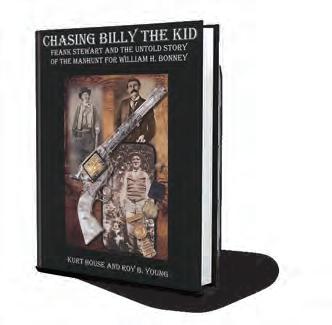
This impressive book came to fruition because House, a firearms expert and collector, acquired a factory-engraved, pearl-handled Colt revolver
once presented to Stewart by a grateful hotel owner in Las Vegas, New Mexico Territory. House wanted to learn more about the man behind that prized Colt, so he and WWHA compatriot Young went about the challenging five-year task of discovering as much as possible about Stewart’s long and eventful life. For starters they learned “Frank Stewart” was an alias of German immigrant John Wallace Green, who was born Oct. 23, 1852, and immigrated to the United States with his parents in 1858. Why he took an alias is uncertain, but perhaps he’d wanted to keep his identity secret while working as a stock detective. Stewart received accolades for his prominent role in the pursuit and capture of the Kid, but that gratitude faded fast. His name was all but forgotten for 140 years, despite having served New Mexicans in many different roles, as detailed by the authors. Among other occupations, Stewart worked as a railroad detective, a deputy sheriff and a ranch foreman. He was also arrested for horse theft in 1887 and lived to tell the tale. He married at age 48 in September 1903. By then he’d returned to using his given name. Green died at age 83 on May 11, 1935, and lies in an unmarked grave. With this 423-page tome the authors may have succeeded in restoring John Green/Frank Stew art to his rightful place in Western history. While the book serves well as the first biography of a fascinating Westerner, it also includes a wealth of information about the Kid and nuggets of in formation (much new) about a cast of Lincoln County War characters, including Secret Service Agent Azariah Faxon Wild and Billy’s pals Charlie Bowdre and Billie Wilson. In a valuable 45-page appendix the authors have something to say about many of the people involved in the lives of the Kid and Stewart/Green. Another interesting appendix covers the guns used by participants in the Lincoln County War. The book is loaded with photographs and documents, many from the vast collection of the late Bob McCubbin, to whom the authors dedicate the volume.
Gregory Lalire
All Sides of Colorado’s Indian Wars
On Jan. 7, 1865, Mo-chi—the first woman to claim warrior status in the Cheyenne Nation—was gathering up horses captured during a surprise raid on Julesburg, Colorado Territory, when a brave named Medicine Horse rode up to add a prize specimen to her collection. It was the first time they’d met, but in coming months they’d become a couple. As with so many love stories, they already had much in common. Both had been born in Yellowstone Country. More important, Mo-Chi had seen both her father and previous husband killed, while
Chasing Billy the Kid: Frank Stewart and the Untold Story of the Manhunt for William H. Bonney
By Kurt House and Roy B. Young, Three Rivers Publishing, San Antonio, Texas, 2022, $79.95
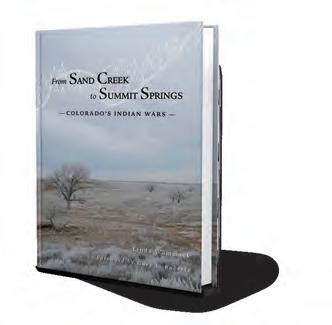
Creek to Summit Springs: Colorado’s Indian Wars
By Linda Wommack, Caxton Press, Caldwell, Idaho, 2022, $25.95
WILD WEST SPRING 2023 75 LINDA WOMMACK
WIWP-230400-REVIEWS.indd 75 1/20/23 1:57 PM
Hickok and Buffalo Bill Cody: Plainsmen of the Legendary West
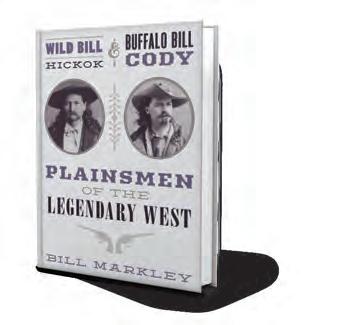 By Bill Markley,
By Bill Markley,
Medicine Horse had lost friends and relatives in a surprise attack the previous November by militiamen led by Colonel John M. Chivington—despite the conspicuous U.S. flag their chief, Black Kettle, had erected in his camp as a gesture of submission and peace. Of the scores of Cheyennes killed that day, most were women and children.
Relations between Anglo Americans and Indians had been shaky from the start. But before resigning his commission amid a storm of controversy, Chivington declared, “I stand by Sand Creek.” Launched to chastise the “savages” into unconditional submission—and inaugurate a welcome extermination in the eyes of a good many aggrieved Coloradans—the colonel’s raid only left Mo-Chi, Medicine Horse and thousands of other Indians in and around Colorado with a common cause: bloody vengeance.
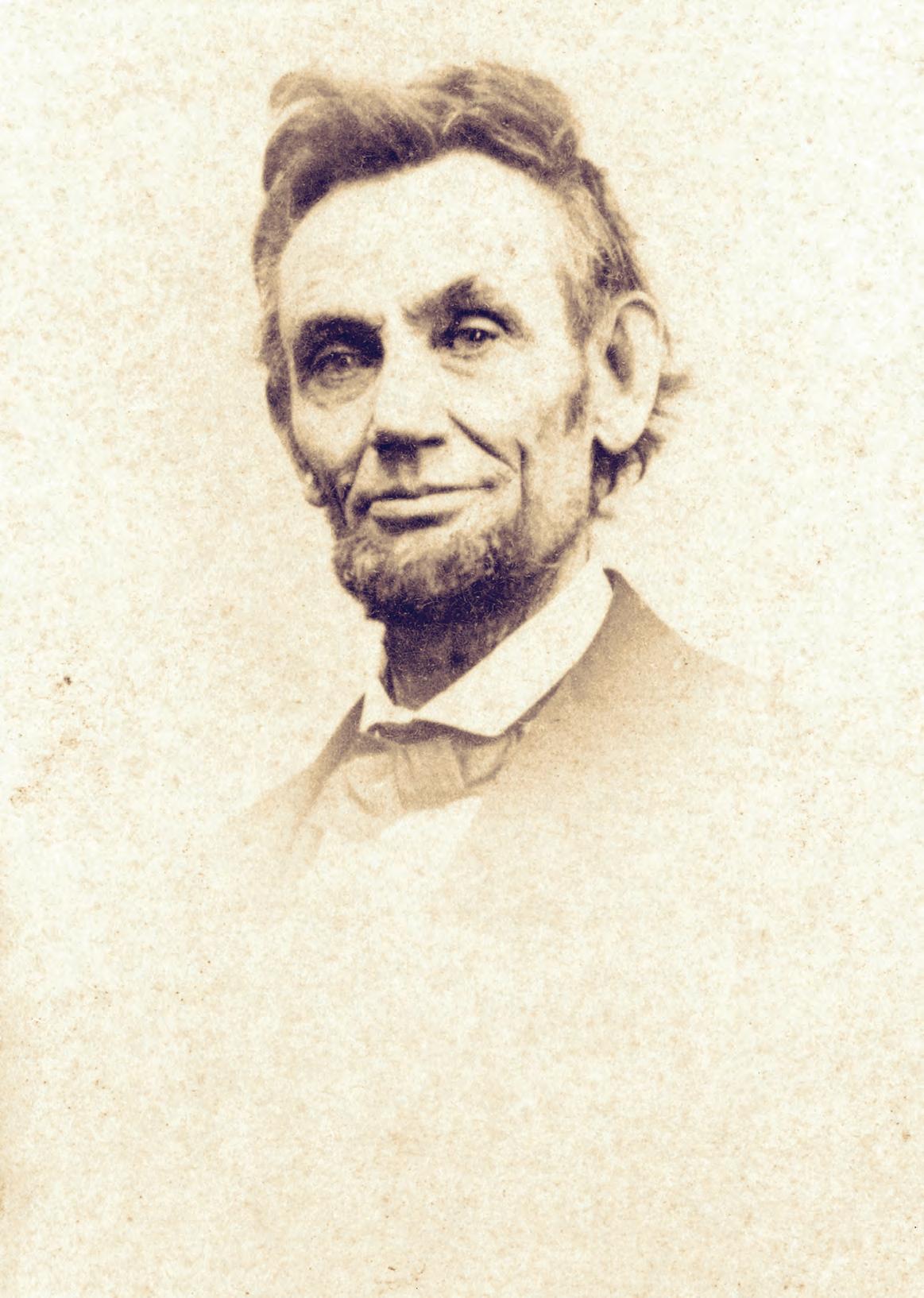
Author Linda Wommack gathered a wealth of source material from both sides of Colorado’s Indian wars to compile From Sand Creek to Summit Springs, itself an impressive volume. Her research extends from period accounts, with all their contemporary prejudices intact, to oral reminiscences from descendants of the participants. The latter include Arlene Jauken, a great-granddaughter of Sophia Louisa German, who had endured Cheyenne captivity and witnessed her mother’s death at the hands of Mo-Chi; and Cheyenne Nation historian John L. Sipes Jr., Mo-Chi’s great-great-grandson.
What emerges from Wommack’s detailed account of Sand Creek, Julesburg, Beecher Island, the Meeker Massacre, Summit Springs and the various attempts at forging a truce in between is an American tragedy of two societies whose ignorance of and lack of empathy toward one another undermined peacemaking attempts at every turn. To the Indians the Anglos seemed insatiably land hungry and contemptuous of their cultural traditions. Weary of Indian attacks and whipped up by the press, Anglos indeed grew to despise the Indians. William N. Byers, editor of the influential Rocky Mountain News , summed up the general feeling with his 1864 call for “immediate extinction of the Indians.” Echoing that call were the U.S. district commander, Maj. Gen. Samuel R. Curtis (“There will be no peace until the Indians suffer more”), and his overeager subordinate Chivington.
From Sand Creek to Summit Springs is dense reading, but it adds up to a sweeping drama with a well-documented, well-rounded cast.
Jon Guttman
Sizing up Wild Bill and Buffalo Bill
Are there any more legendary Westerners than William Frederick “Buffalo Bill” Cody and James
Butler “Wild Bill” Hickok? In this volume their lives are examined and compared by an author who has written three prior “dual biographies” of Western luminaries in TwoDot’s series: Wyatt Earp and Bat Masterson: Lawmen of the Legendary West; Billy the Kid and Jesse James: Outlaws of the Legendary West; and Sitting Bull: Leaders of the Legendary West and Cody are a natural pairing, as they were topof-the-line frontier scouts and good friends who shared adventures both on the Plains and onstage.
Author Bill Markley’s biggest challenge was to separate fact from fiction. For one, other Wild Bills and Buffalo Bills roamed the Old West, which at times proved confusing. For another, Hickok and Cody loved to embellish their stories. Finally, dime novels, unreliable histories and sensational newspaper articles fabricated countless fictional adventures for our two heroes. That raises another question: Were the real-life Bills really heroes? Some might argue otherwise, but while research ing the book the author came to regard both men, particularly their scouting abilities, their compas sion, their generosity and their sense of honor. “They certainly weren’t perfect,” writes Markley, “but they stood for what they thought was right.”
Both certainly looked the part of Western he roes, standing out in any crowd with their flowing long hair, mustaches, buckskin attire and flamboy ant showmanship. And both were accomplished with guns, though Hickok, who was 10 years older, was known for shooting badmen (a least six), while Cody earned a reputation and his nickname for shooting buffalo and continued to impress on lookers later by shooting glass balls tossed into the air during his touring Wild West extravaganza. That said, Cody got much attention for a kill when on July 17, 1876, he shot the Cheyenne warrior Yellow Hair, scalped him and claimed the “first scalp for Custer.”
One big difference between the Bills is that Hickok had a successful career as a real-life law man that superseded his exploits as a scout. Cody’s later career also overshadowed his scouting ex ploits, but he made his mark in the fantasy world of showbiz. Hickok tried to perform onstage with his friend, but he felt they were making fools of them selves and soon quit that line of work. Hickok had come to rely on gambling, with no desire to again be a lawman or actor, when assassinated on Aug. 2, 1876, in the midst of a Deadwood, Dakota Territory, poker game. Cody, of course, went on to perform in his Wild West and similar shows almost to life’s end, which for him came on Jan. 10, 1917, in Denver, from kidney failure. “Cody,” concludes Markley, “stands out from Hickok due to what he did after
WILD WEST SPRING 2023 76
CWTP-LINCOLN AD-nov21.indd 4 WIWP-230400-REVIEWS.indd 76 1/20/23 1:57 PM
TwoDot, Essex, Conn., and Helena, Mont., 2022, $24.95
LINCOLN FORUM
What began as a modest proposal to bring Lincoln enthusiasts together for a small East Coast-based yearly history conference at Gettysburg has blossomed into one of the leading history organizations in the country.

Our yearly November symposium is attended by scholars and enthusiasts from all over the nation and abroad. It attracts speakers and panelists who are some of the most revered historians in the Lincoln and Civil War fields.
website:

JOIN TODAY!
Visit our
thelincolnforum.org for more information
AD-nov21.indd 4 10/28/21 5:11 PM WIWP-230221-001 OK-Corral.indd 1 WIWP-230400-REVIEWS.indd 77 1/20/23 1:57 PM
THE
Cowgirl: Daring and Iconic Women of the Rodeo & Wild West Shows
 By Chris Enss,
By Chris Enss,
scouting. He brought the West to the world, and his actions live on today. Not that Wild Bill’s actions have been forgotten.”
Gregory Lalire
Riding Like Girls—Try to Keep Up
William F. “Buffalo Bill” Cody is credited with organizing the first “Wild West” show in 1883, but it did not remain unique for long. As they gained in popularity, other such entertainments derived from the still earnest business of cowpunching proliferated in the 1890s. As they did, a generation of women skilled in riding, roping, bronco busting and bulldogging steers turned up, and by the turn of the century no Wild West show was complete without them.
In Along Came a Cowgirl Chris Enss, an author long devoted to giving Western damsels their due, serves up a comprehensive collection of the most celebrated American show women to occupy a saddle in quest of such titles as “Queen of the Range,” “Princess of the Prairie” and “All-Around Champion Cowgirl.” Their status was often put to mutual competition, and the women sometimes took it seriously enough to take it outside the ring, as in 1913 when Blanche McGaughey referred to Vera McGinnis as a “chippy,” and the two ended up settling their differences with fisticuffs in the horse stalls at Madison Square Garden.
Untold Story of the Manhunt for William H. Bonney, by Kurt House and Roy B. Young, and Mills’ 688-page biography. “Surely there is nothing left to write about Billy the Kid after all these years,” he writes in the preface. “As it turns out there is.”
For instance, historians have overlooked many firsthand Nuevomexicano Hispano recollections of the Kid and events in his short but lively life. Mills addressed the Hispano perspective in two fine articles (“They Called Him Bilito” and “Hombres Calientes in the Lincoln County War”) he wrote for the December 2020 issue of Wild West , and here he expands on its significance, for Bilito (“Little Billy”) spoke Spanish fluently and endeared himself to much of the Hispano populace of Lincoln County and beyond. The amiable Kid was loyal to employer John Tunstall (whose killing triggered the Lincoln County War and incited Billy and others to become vengeance-seeking Regulators), had pals like Tom O. Folliard and Charlie Bowdre, and was friends with cattleman’s daughter Sally Chisum. But he felt more comfortable in Hispano homes, had amigos like Martín Chavez and Yginio Salazar, and his querida (dear) was Paulita Maxwell, who was one-quarter Hispano.
Billy the Kid: El Bandido Simpático
By James B. Mills,
Annie Oakley and Frank Butler were not the only married couple to distinguish themselves in the rodeos. In 1917 Katherine Derre, aka Kitty Wilkes, married rodeo star and future big-screen stuntman Yakima Canutt of Stagecoach fame. In 1886 May Manning, a Philadelphian from a Quaker family with a penchant for Western activities hitched her fortunes with Gordon William Lillie, better known as Pawnee Bill.
Gathering a considerable amount of research into the ladies behind the legends, Along Came a Cowgirl is amply illustrated and likely to appeal to any Western buff interested in rodeo’s oft overlooked other half.
—Jon Guttman
With Sympathies to Billy the Kid
Stories about Billy the Kid never seem to grow old, not unlike the Kid himself. He was only 20 or 21 (the true story of his birth has yet to be told) when Sheriff Pat Garrett fatally shot him in Fort Sumner, New Mexico Territory, in July 1881, and helped make him, according to Australian author James Mills, “the most famous outlaw in the world.” Two of the most detailed and thoroughly enjoyable Billy books came out in 2022—the 423page Chasing Billy the Kid: Frank Stewart and the
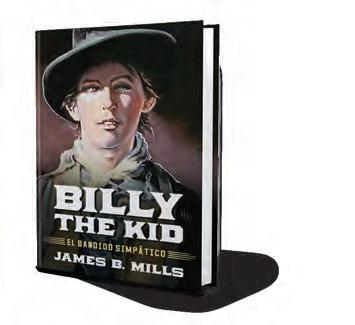
Mills makes a case that Billy remained in his stamping grounds—after the Lincoln County War made him a wanted man, after being hunted down by Pat Garrett, and even after his death sentence and deadly escape from the Lincoln County Courthouse—out of reluctance to leave his Hispano friends. The author adds Billy was at the Maxwell house on the night he was killed (at about 12:30 a.m. on July 15) because “Paulita Maxwell was in Fort Sumner. That took precedence over any real or imagined danger.” Mills quotes former Regulator Frank Coe, who later spoke of Billy’s demise: “He had spent about three months in and out of Fort Sumner and was on the verge of marrying and going to Mexico. Hadn’t gone to Pete Maxwell’s that night, he would be living today. He’d be a Mexican.”
While Mills seems largely sympathetic to Billy the Kid, his stated goal was to portray him as neither a villain nor a hero but as a young man who did his share of right as well as wrong and emerged from the Lincoln County War as a roguish folk hero in many eyes. “It is time,” the author writes, “for the mythical outlaw caricature known as ‘Billy the Kid,’ a fanciful persona largely created by a hysterical press and sensationalist writers—and an image that Billy himself was repulsed by—to finally be laid to rest.” Mission accomplished in fine style, but colorful stories about the Kid likely will never be laid to rest.
—Gregory Lalire
WILD WEST SPRING 2023 78
Farcountry Press, Helena, Mont., 2022, $18.95
WIWP-230400-REVIEWS.indd 78 1/20/23 1:58 PM
University of North Texas Press, Denton, 2022, $34.95







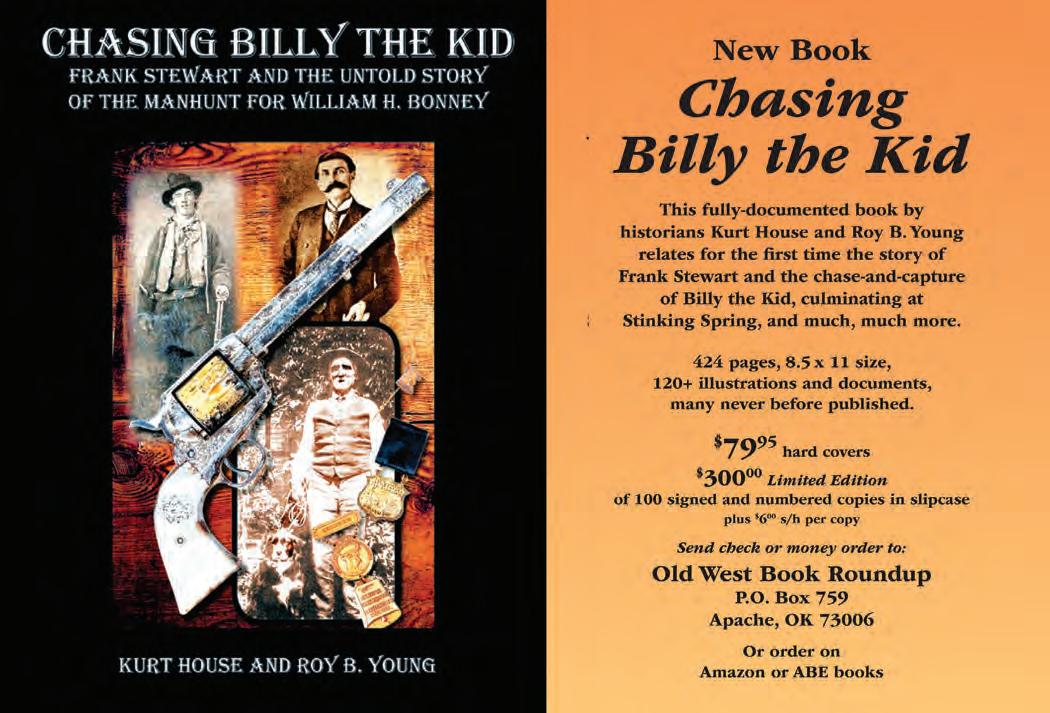
A conversational approach to interpreting history! Listen as hosts Patrick and Matt connect you with your favorite stories from the past— as well as ones you may have never heard! Download or listen for FREE @The HistoryThingsPodcast WIWP-230221-013
1 1/5/2023 3:01:04 PM WIWP-230400-REVIEWS.indd 79 1/20/23 1:58 PM
Roy Young Billy the Kid Book.indd
Lamar Valley, Yellowstone GO WEST
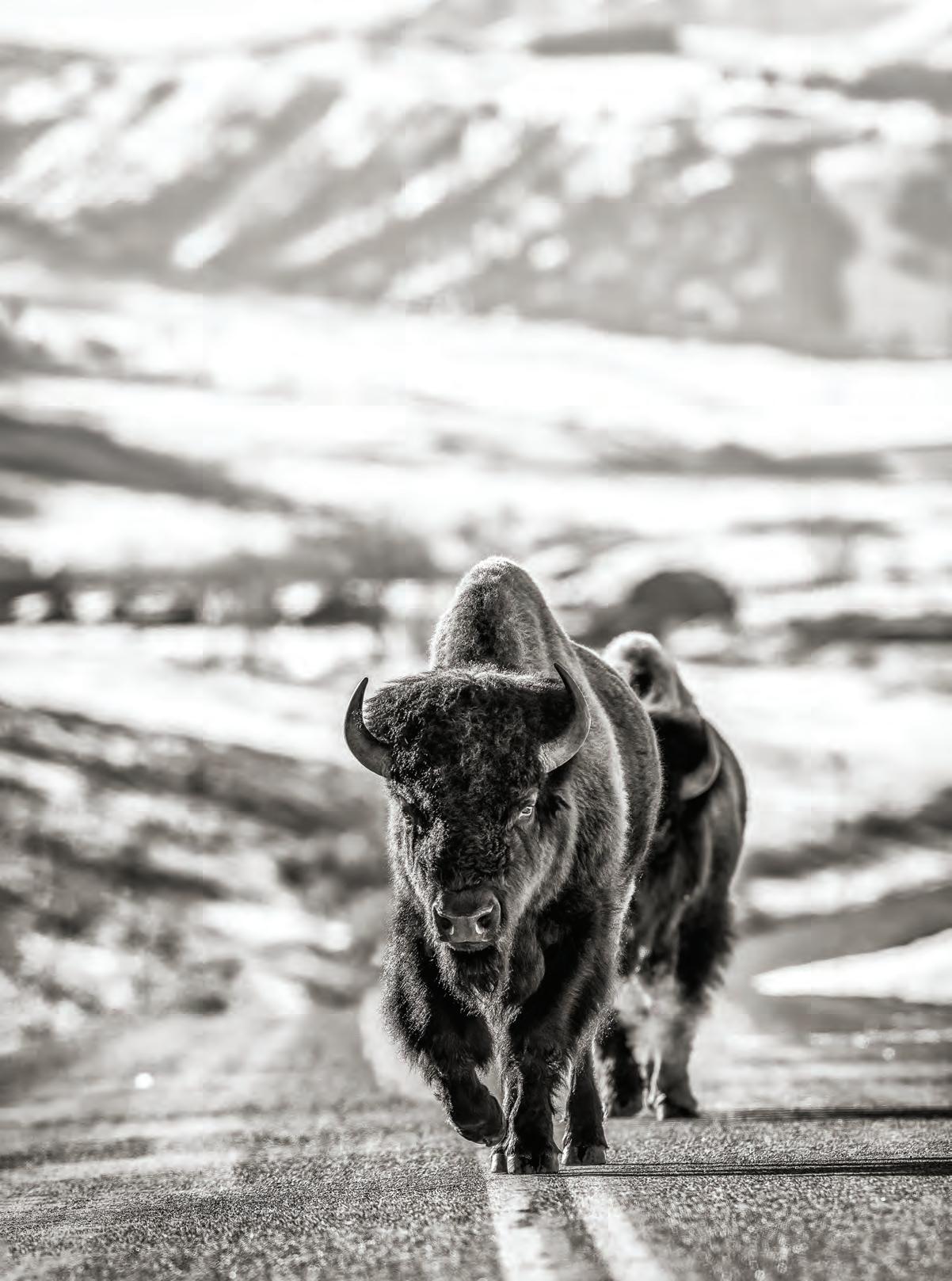
The undated image at right of a buffalo hunter and his latest prize in the Lamar Valley of Yellowstone National Park confirms a reality unthinkable to most present-day visitors—that hunting of this iconic American animal was once permitted within park boundaries. Though President Ulysses S. Grant signed the park into being on March 1, 1872, bison hunting continued unabated, and by 1902 scarcely two dozen animals remained in the Yellowstone herd. While hunting is
still permitted on land bordering the park, since 1966 bison within Yellowstone have enjoyed sanctuary from all shooting but that done by awestruck tourists with still and video cameras and cell phones. Today just shy of 5,000 bison make their home in Yellowstone, most in the Lamar Valley, where visitors often spot their “first bison.” Thus it is fitting that photographer Kevin Noble [kevinnoblephotography.com] titles his stunning image of a bull leading others down the middle of the road through the Lamar Valley “King of Yellowstone.”

80 WILD WEST SPRING 2023 KEVIN NOBLE, KEVINNOBLEPHOTOGRAPHY.COM; INSET: NEW YORK PUBLIC LIBRARY
WIWP-230400-GOWEST.indd 80 1/26/23 8:31 AM
How to Be Cut Off From Civilization
When it’s you against nature, there’s only one tool you need: the stainless steel River Canyon Bowie Knife—now ONLY $49!
You are a man of the wilderness. The only plan you have is to walk up that mountain until you feel like stopping. You tell your friends that it’s nothing personal, but this weekend belongs to you.
You’ve come prepared with your River Canyon Bowie Knife sheathed at your side. This hand-forged, unique knife comes shaving sharp with a perfectly fitted hand-tooled sheath. The broad stainless steel blade shines in harmony with the stunning striped horn, wood and bone handle. When you feel the heft of the knife in your hand, you know that you’re ready for whatever nature throws at you. This knife boasts a full tang blade, meaning the blade doesn’t stop at the handle, it runs the full length of the knife. According to Gear Patrol, a full tang blade is key, saying “A full tang lends structural strength to the knife, allowing for better leverage ...think one long steel beam versus two.”
With our limited edition River Canyon Bowie Knife you’re getting the best in 21st-century construction with a classic look inspired by legendary American pioneers. What you won’t get is the trumped up price tag. We know a thing or two about the hunt–– like how to seek out and capture an outstanding, collector’s-quality knife that won’t cut into your bank account. This quintessential knife can be yours to use out in the field or to display as the art piece it truly is. But don’t wait. A knife of this caliber typically cost hundreds. Priced at an amazing $49, we can’t guarantee this knife will stick around for long. So call today!
BONUS! Call today and you’ll also receive this genuine leather sheath!


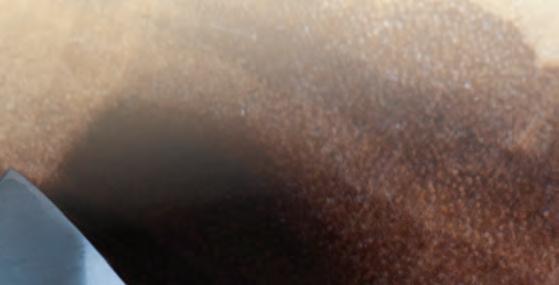
What customers are saying about Stauer knives...














Your satisfaction is 100% guaranteed. Feel the knife in your hands, wear it on your hip, inspect the craftsmanship. If you don’t feel like we cut you a fair deal, send it back within 30 days for a complete refund of the sale price. But we believe that once you wrap your fingers around the River Canyon’s you’ll be ready to carve your own niche into the wild frontier.
River Canyon Bowie Knife $79*
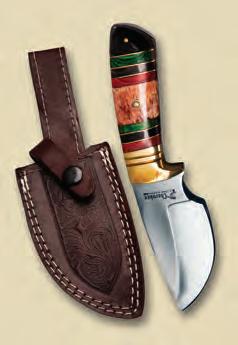
Offer Code Price Only $49 + S&P Save $30

1-800-333-2045


Your Insider Offer Code: RCK450-01 You must use the insider offer code to get our special

“First off, the shipping was fast and the quality is beyond what I paid for the knife. Overall I am a satisfied customer!”
— D., Houston, Texas
14101 Southcross Drive W., Ste 155, Dept. RCK450 Burnsville, Minnesota 55337 www.stauer.com • Full
4 ¼" stainless
9"
• Genuine
and
•
and
•
Stauer ® Smart Luxuries—Surprising Prices Rating of A+ *Discount is only for customers who use the offer code versus the listed original Stauer.com price. Not shown actual size.
tang
steel blade,
overall length
horn, wood
bone handle
Polished brass guard
spacers
Includes leather sheath
êêêêê
RCK387-01
must use the insider
code to our special price. TAKE 38% OFF INSTANTLY! When you use your INSIDER OFFER CODE WIWP-230221-009 Stauer River Canyon Bowie Knife.indd 1 1/5/2023 3:12:16 PM
You
offer
Our 1/30 scale metal figures are painstakingly researched for historical accuracy and detail. The originals are hand sculpted by our talented artists before being cast in metal and hand painted – making each figure a gem of hand-crafted history. Please visit wbritain. com to see all these figures and more from many other historical eras.


















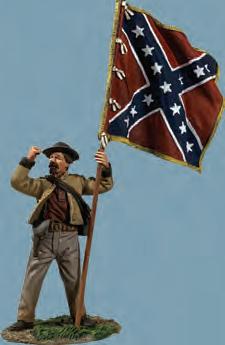
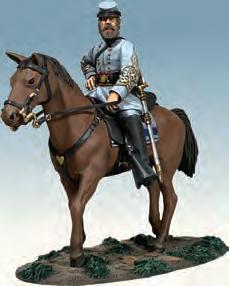




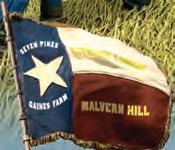
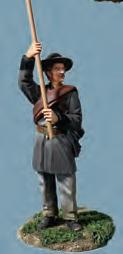











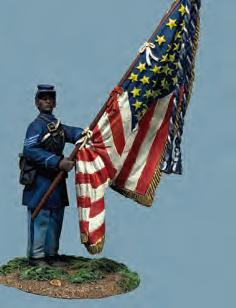



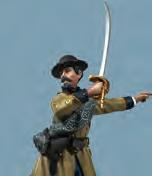






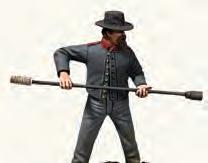








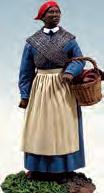





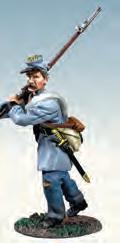
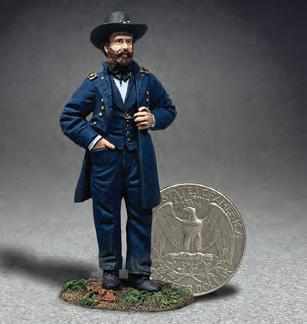







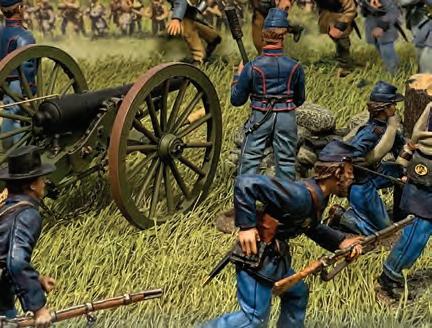

WBHN-WILDWEST SPRING ©2023 W.Britain Model Figures W.Britain, and are registered trademarks of the W.Britain Model Figures, Chillicothe, OH Follow us on Facebook: W-Britain-Toy-SoldierModel-Figure-Company Subscribe to us on YouTube: W.Britain Model Figures See these and more W.Britain 1/30 scale historical metal figures at: Tel: U.S. 740-702-1803 • wbritain.com • Tel: U.K. (0)800 086 9123
Call W.Britain and mention thisad for a FREE CATALOG Also receive a MINI BACKDROP with your first purchase!
finish Hand-Painted Pewter Figures 56/58 mm-1/30 Scale 10094 Union General U.S. Grant $46.00 31261 Confederate Infantry Texas Brigade Advancing, No.2 $42.00 31334 Confederate Casualty Falling $42.00 Advancing 31116 Confederate General “Stonewall” Jackson Mounted on Little Sorrel $110.00 10085 Frederick Douglass American Abolitionist and Social Reformer $45.00 10095 Colonel Robert Gould
10086
31395
31380
31394
$58.00 31389 Confederate
Confederate
ANV
WIWP-230221-006 WBritian Model Figures.indd 1 1/5/2023 3:24:24 PM
matte
Shaw, 54th Massachusetts $48.00 10088 Harriet Tubman American Abolitionist $46.00
Sergeant Major Lewis Douglass, 54th Massachusetts $45.00 uglass,Do 31313 Sending Mischief Down Range Federal Artillery Firing 10-Pound Parrott Gun $180.00
Give ’Em Canister! Confederate 12 Pound Napoleon and Crew $200.00
Confederate Infantry Bugler, $46.00 10096 Sgt. William Carney, Flagbearer, 54th Massachusetts $58.00 Confederate Flagbearer, 1st Texas Flag, Wigfall Pattern, Texas Brigade
Confederate Flagbearer, 3rd Arkansas Flag, Texas Brigade
Flagbearer, 5th Texas Flag, Texas Brigade $58.00
Infantry Waving
Flag

































 By Roger Myers
By Roger Myers
 Aaron Robert Woodard
Tireless hunter Ben Lilly guided famous clients and stalked predators for bounties
By Ron J. Jackson Jr.
‘Uncle Jimmy’ Cannon and Louis Schilling slighted the remembrance of martyrs
Aaron Robert Woodard
Tireless hunter Ben Lilly guided famous clients and stalked predators for bounties
By Ron J. Jackson Jr.
‘Uncle Jimmy’ Cannon and Louis Schilling slighted the remembrance of martyrs










 By William R.
By William R.
























































































 BY TERRY HALDEN
BY TERRY HALDEN

















 BY DAVID M c CORMICK
BY DAVID M c CORMICK

 BY AARON ROBERT WOODARD
BY AARON ROBERT WOODARD






































 BY ALLEN LEE HAMILTON
BY ALLEN LEE HAMILTON







































 BY LINDA WOMMACK
BY LINDA WOMMACK















 By Bill Markley,
By Bill Markley,


 By Chris Enss,
By Chris Enss,




































































